bluff
 Winter 2022
Winter 2022
the
Fall /
In South Carolina’s Lowcountry lies Palmetto Blu , a protected sanctuary of natural wonder you can call home. Here, wandering at your leisure invites the biggest discoveries. Twenty thousand acres of pristine land and 32 miles of riverfront o er something for the curious-minded. Stay for a little or stay for a lifetime, it never leaves you.


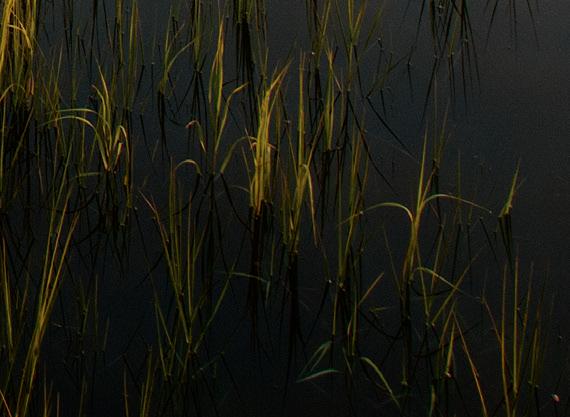




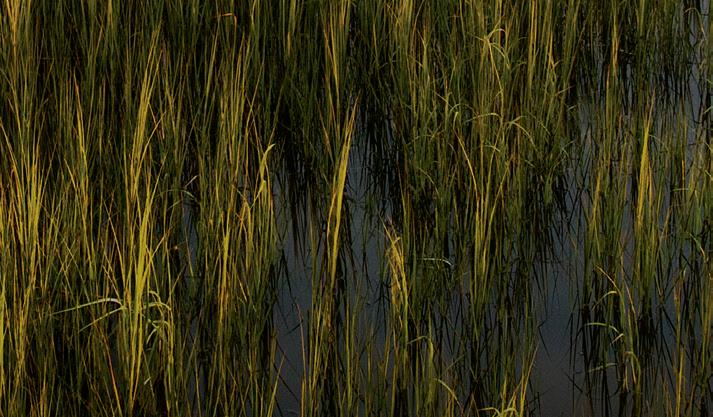


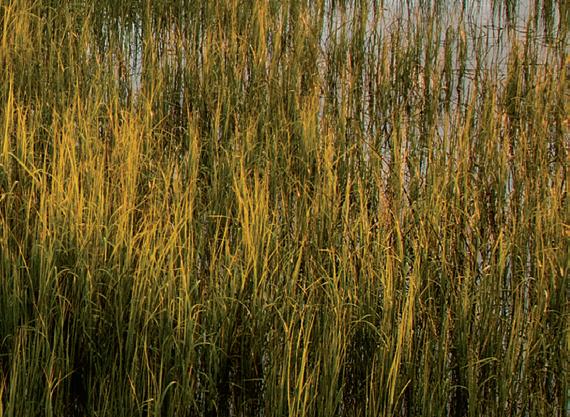
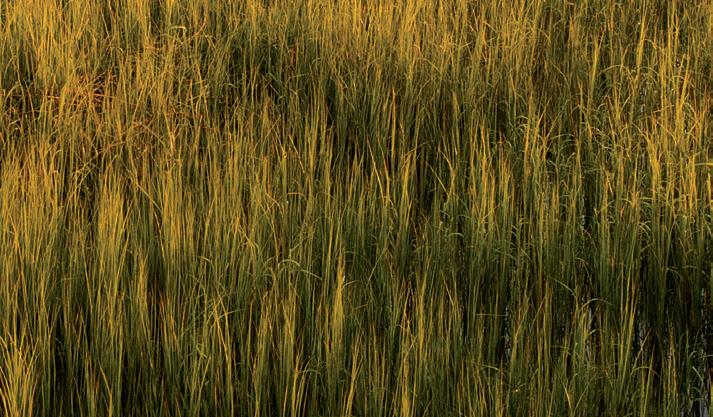




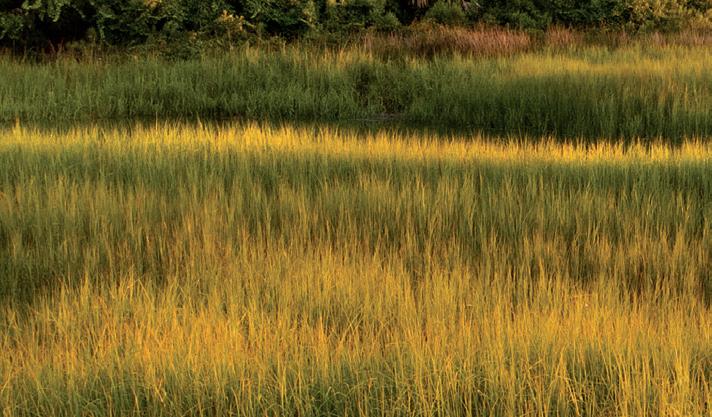

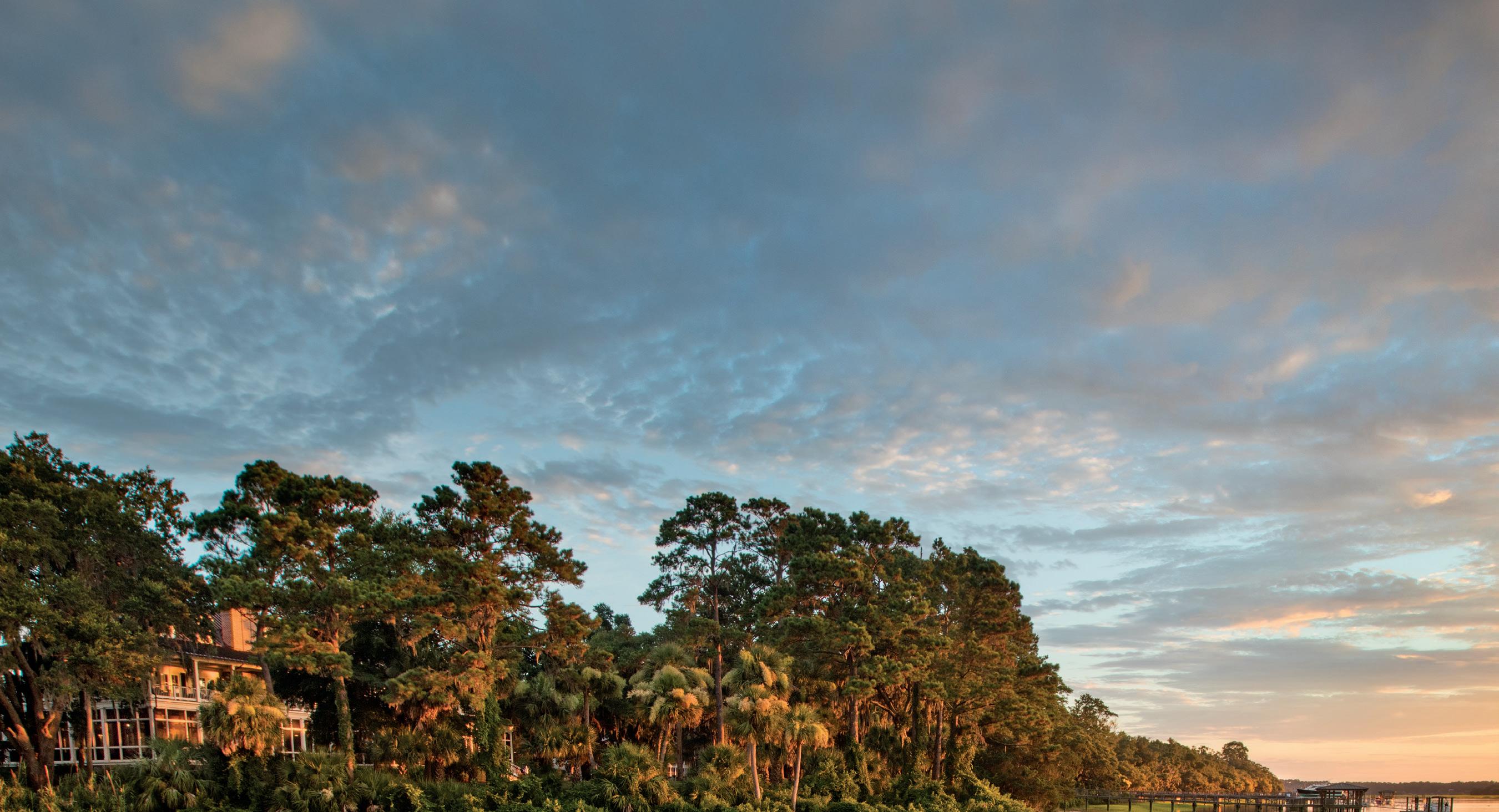
real estate
Obtain the Property Report required by federal law and read it before signing anything. No federal agency has judged the merits or value, if any, of this property. This does not constitute an offer to sell or a solicitation of any offer to buy where prohibited by law. The complete offering terms are in an offering plan available from sponsor. File no. H-110005
For
inquiries, call 843.547.9954 or explore palmettoblu .com/blu mag

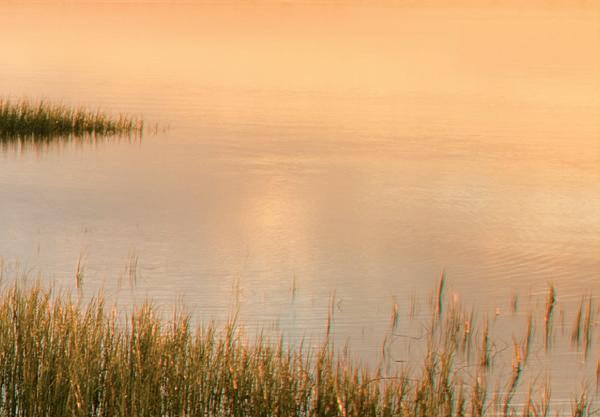
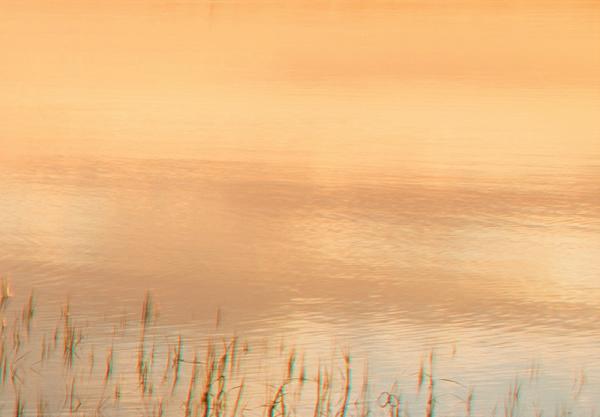
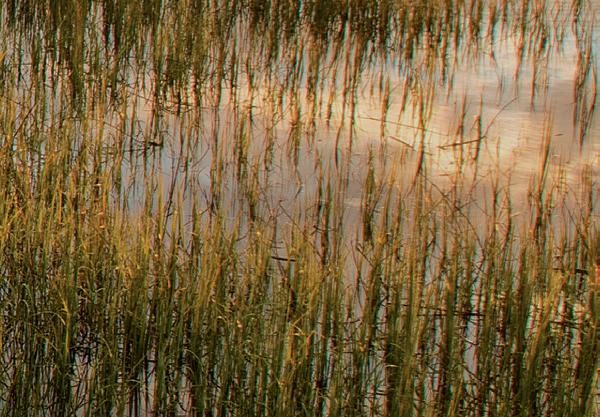

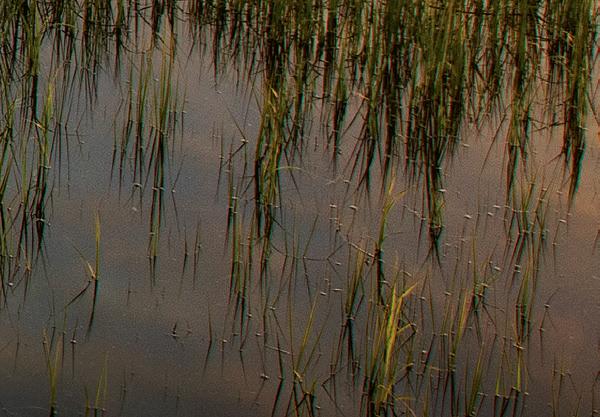

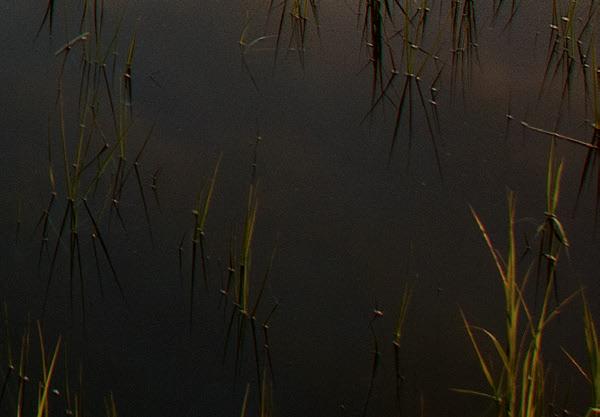




Some places you visit... others you stay generations.
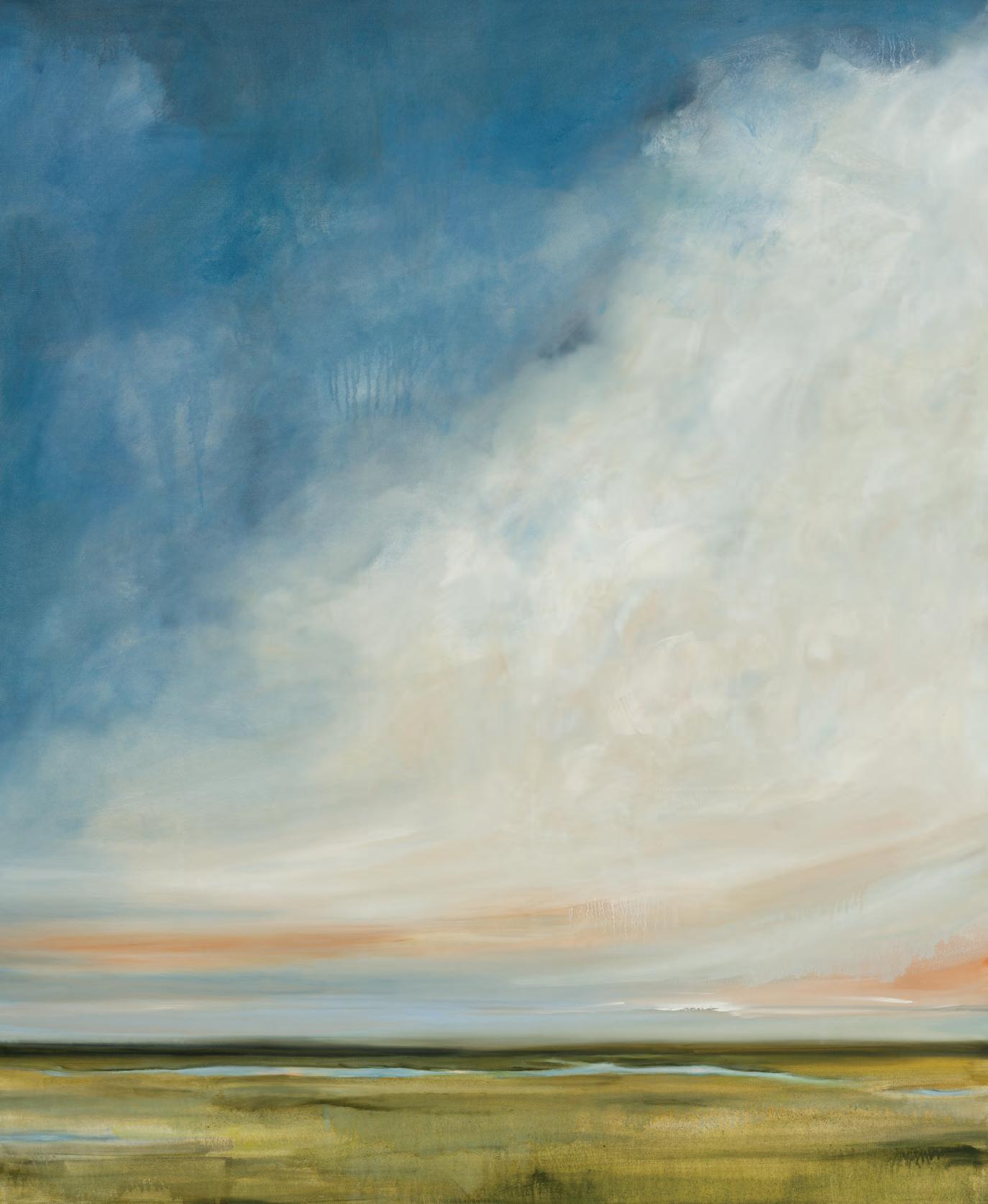
FEATURETTES
12 | OWNER PROFILE
32 | THE OUTDOORSMAN
34 | REIMAGINING RIVER HOUSE
101 | THE FALL KITCHEN
105 | LOCAL CHARACTER
14
ANCIENT HARVEST
Three generations of oystermen take a tour of the May River, discussing history and food, culture and ecology.
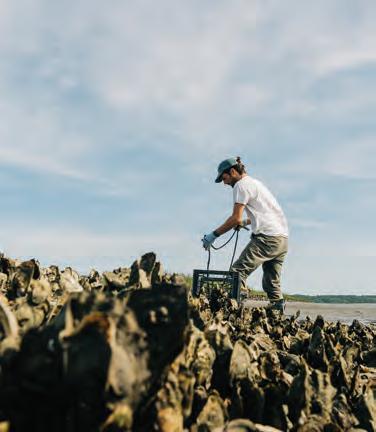
24
THE ROAD TO ANSON
The next chapter of Palmetto Bluff’s history is yet to be written. Follow the evolution of an ethos that will define this land for generations to come.
TABLE OF CONTENTS
36
ESTEEMED EQUINE
Portrait photographer Gately Williams captures the spirit of Longfield Stables’ nine beloved horses.
50
SHANNON WHITWORTH
The mystery of the mountains and the lambent hum of the Lowcountry collides in Shannon Whitworth’s music and paintings.
64
A DAY WITH
MR . PALMETTO BLUFF
Since retiring, Palmetto Bluff resident Bob Newbert has reinvented himself into a Lowcountry outdoorsman.
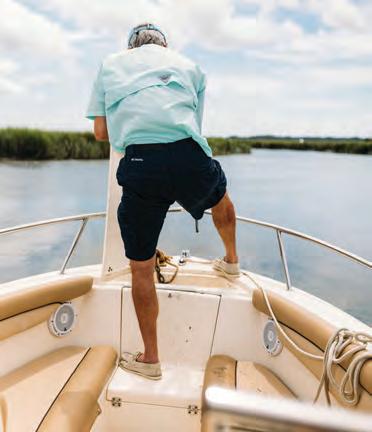
70
STEWARDING THIS GREAT LAND
Palmetto Bluff Conservancy Director Jay Walea explores the the four pillars of his organization.
78
THE BIRTH OF GULLAH GEECHEE
Local historian Luana Graves Sellars explores the origins of the Gullah Geechee people.
86
A GUIDE TO THE MAY RIVER GOLF COURSE

Brush up with this hole-by-hole handbook of the Jack Nicklaus masterpiece.
OPPOSITE: FURTHER TO FLY | SHANNON WHITWORTH ON THE COVER: AERIAL OF LOWCOUNTRY MARSH | LAWSON BUILDER
3FALL/WINTER 2022
Located on the bank of the May River in the heart of Wilson Village, FLOW Gallery + Workshop is a curated collection of southern artists and the physical showcase of our Palmetto Bluff Artist in Residence program. The gallery’s diverse lineup of more than 25 artists includes oil and watercolor painters, potters, custom jewelers, textile artists, photographers, and many more celebrated southern creators.
Like the eternally rolling waters of the May River, FLOW Gallery + Workshop is in constant motion. An ever-changing roster of creative workshops, art exhibits, and distinctive merchandise encourage regular visits to keep abreast of all things artful and new.


843.706.5483

November 12, 2022 THE ARTISTS OF PALMETTO BLUFF 2022 AUTUMN SHOW December 4, 2022 ARTISAN HOLIDAY MARKET December 7 - 10, 2022 : Artist in Residence CHI DESIGNS – INDIGO TEXTILES February 11, 2023 THE ARTS INITIATIVE GALA OF GIVING UPCOMING EVENTS AT FLOW GALLERY + WORKSHOP September 14 - 17, 2022 : Artist in Residence BLAKELY MADE, PAINTER October 5 - 8, 2022 : Artist in Residence MARCUS AMAKER, POET LAUREATE October 28 - November 6, 2022 THE ART OF MATT BAUMGARDNER EXHIBIT November 9 - 11, 2022 : Artist in Residence TERESA ROCHE, ART & TEXTILES @flowpalmettobluff 76 Boat House St | Bluffton, SC •
• flowpalmettobluff.com
OPEN Tuesday - Sunday 10am to 6pm THE ARTS INITIATIVE Presents
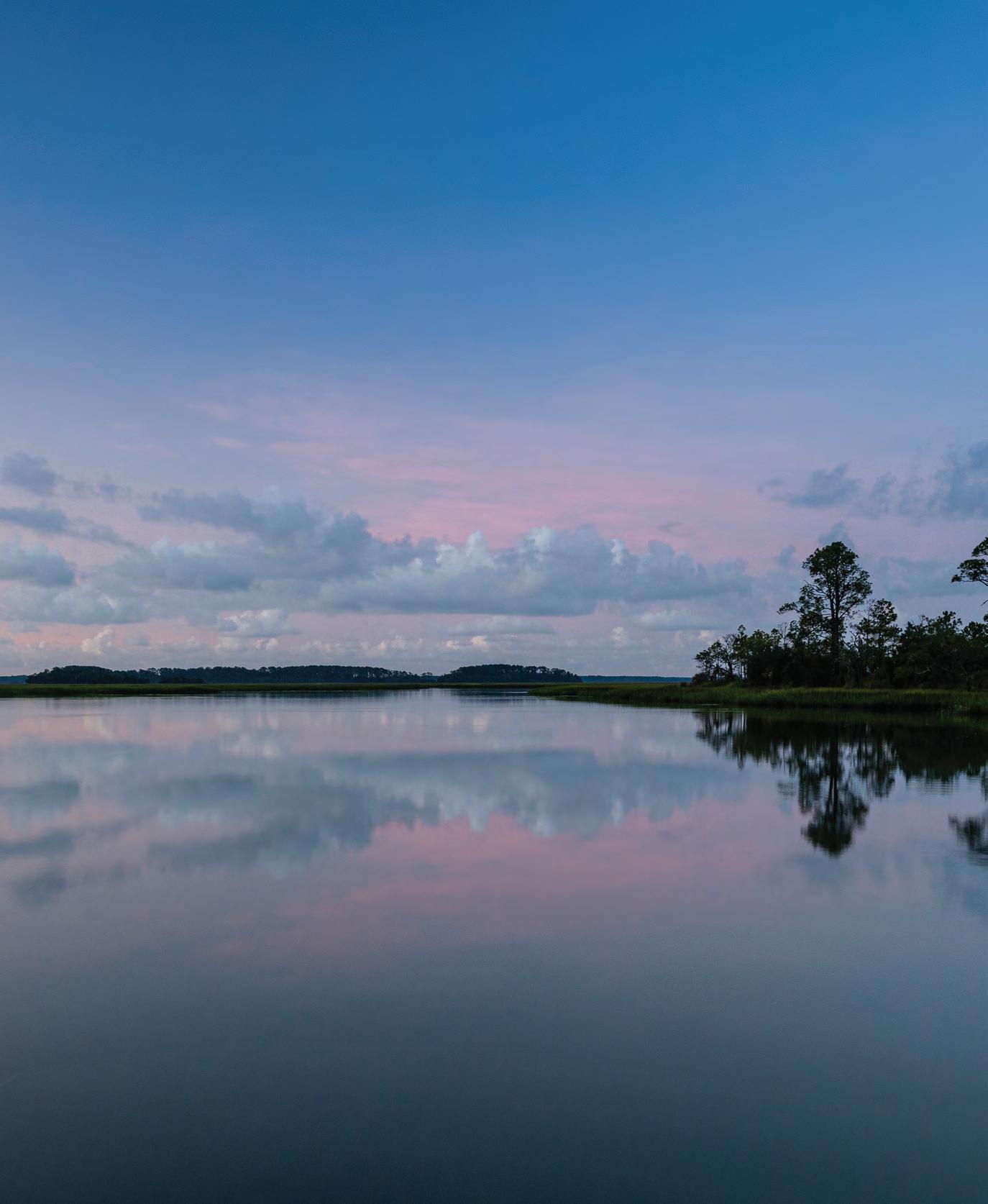


created by and for those who love this special lowcountry idyll EDITOR AND DESIGNER Hailey Wist COPY EDITOR Sunny Gray MANAGING EDITOR Maggie Hackett PUBLISHER Palmetto Bluff CONTRIBUTORS Lawson Builder Justin Hardy Barry Kaufman Patrick O'Brien Luana Graves Sellars Jay Walea Gately Williams Cameron Wilder LET'S BE SOCIAL PALMETTOBLUFF.COM /PalmettoBluff @PalmettoBluff @PalmettoBluff Amy Anderson Cyrus Buffum Ashlyn Blakenship Jeff Dekruif BJ Dennis Lucinda Detrich Jean Fruh Stephanie Gentemann Boo Harrell Erica Martin Jon McGaunn Greyson Miller Richard Mitchell Jr. Richard Mitchell Sr. Bob Newbert Mark Permar Woody Platt Kaelya Sommer Rhy Waddington Shannon Whitworth Ali Wolfe Brian Wolfe Christine Wrobel Greg Wrobel SPECIAL THANKS HOTEL RESERVATIONS 843.896.2362 REAL ESTATE SALES 843.380.6856 ADVERTISING INQUIRIES: MAGAZINE@PALMETTOBLUFF.COM

Photography by StoneImpressions (843) 784-6060 | SAVANNAHSURFACES.COM The Lowcountry’s Premier Provider of Interior and Exterior Surfacing Materials
It has been such a joy to get to know this remarkable community. In the past few months, I have spent hours on the May River, spotted the beloved resident alligator at the causeway, lunched in the sunlit dining room of the new River House, and bumped down dirt roads in the back of Jay Walea’s truck. I feel as though I’ve been indoctrinated, brought in on a wonderful secret. To put it bluntly, I get it now
Palmetto Bluff is at an inflection point. With new ownership will come exciting change and infusions of new energy. But in writing “The Road to Anson” (pg. 24), I was struck again and again by the foundational philosophy of early planners and the incredible potency of the Palmetto Bluff Conservancy. This land has been stewarded with great care and will continue to be defined by a culture of community value.
In my inaugural issue, I hope to build on the tradition of this great publication. But more than anything, I want to celebrate this place and its people. Enjoy!
Hailey Wist | Editor and Designer

We are thrilled to take part in the future of this extraordinary community. We hope to enrich Lowcountry living and enhance the long-term experience for our members and guests. We appreciate your readership and hope to see you soon around the Bluff!
PATRICK, WILL, JORDAN, AND CHRIS SOUTH STREET PARTNERS
UPCOMING EVENTS
October
FLOW
October
THE

October
November
November 12
December 3
December 4
December 7-10
THE PALMETTO BLUFF CONSERVANCY BUFFALO RUN December 11
TO LEARN MORE, VISIT:
ARTIST IN
ROCHE,
THE ARTISTS OF PALMETTO BLUFF AUTUMN SHOW AT FLOW GALLERY
PALMETTO BLUFF CONSERVANCY
ARTISAN
ARTIST IN RESIDENCE
HARPER, INDIGO
THE ARTS INITIATIVE GALA OF GIVING February 11
palmettobluff.com
ARTIST IN RESIDENCE MARCUS AMAKER, POET LAUREATE
5–8 FIELD + FIRE THE ART OF PLAY AND PALATE
7-8
CANEBRAKE MEN’S MEMBER GUEST TOURNAMENT
13-15
GALLERY + WORKSHOP MATT BAUMGARDNER EXHIBIT October 28 - November 6
RESIDENCE TERESA
ART AND TEXTILES
9-11
+ WORKSHOP
BURN DINNER
HOLIDAY
MARKET
CAROLINE
TEXTILES
CONTRIBUTORS
GATELY WILLIAMS | PHOTOGRAPHER
Originally from the Midwest, Gately Williams has called Charleston, South Carolina, home for fifteen years and lives there with his wife and daughter. When he does not have a camera in his hands, he can be found on his bicycle.
PATRICK O’BRIEN | PHOTOGRAPHER
For twenty-five years Patrick O’Brien has created memorable photography for clients across the globe. He has been honored to collaborate with art directors, designers, and clients who share his passion for creating images that inspire and surprise.
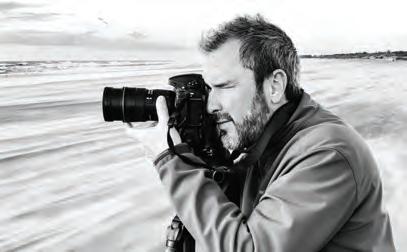 CAMERON WILDER | PHOTOGRAPHER
CAMERON WILDER | PHOTOGRAPHER
Cameron Wilder is based in Charleston, South Carolina.
Growing up in Bluffton, Cameron fell in love with the landscapes and people that make the Lowcountry a special place and home to such a vibrant culture. He is honored to document and tell the stories of the folks who make the Lowcountry what it is today.
 LAWSON BUILDER | PHOTOGRAPHER
LAWSON BUILDER | PHOTOGRAPHER

Lawson Builder is an advertising and editorial photographer based out of Charleston, South Carolina. His focus includes the outdoors, tradecraft, and food. When he’s not clicking buttons on cameras, you can find him fly fishing with friends or stirring it up in the kitchen.

 BARRY KAUFMAN | WRITER
BARRY KAUFMAN | WRITER

Barry Kaufman has been writing professionally for twenty years, when he first realized that every other vocation involves actual work. He is the owner of local copywriting firm Kaufman Copy.
LUANA GRAVES SELLARS | WRITER
A native-born New Yorker, Luana Graves Sellars has a degree in Journalism with a dual minor in Business and Black History. Living on Hilton Head Island has motivated her to become a contributing writer for local magazines with a focus on Gullah culture, its history, people, and native island issues. She is the owner of Sankofa Communications, founder of the nonprofits Lowcountry Gullah and the Lowcountry Gullah Foundation, a speaker, writer, filmmaker, activist, and cultural influencer. She is dedicated to preserving Gullah culture for future generations.
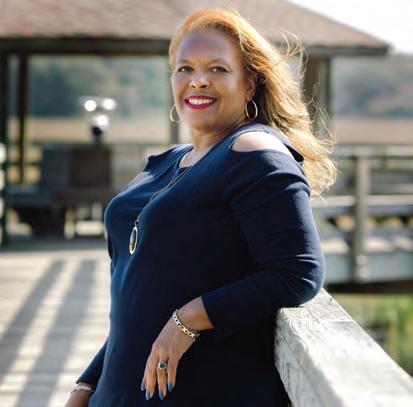
8 PALMETTOBLUFF.COM

RESIDENTIAL & COMMERCIAL ARCHITECTURE • INTERIOR DESIGN HILTON HEAD | BLUFFTON | SAVANNAH courtatkins.com | 843.815.2557 DESIGN THAT ELEVATES.
 “The Nationals” Silver Award • Pinnacle Award Finalist & Merit Winner
Civitas Award
Lighthouse & Finalist Awards
Numerous “Best Builder” awards
“The Nationals” Silver Award • Pinnacle Award Finalist & Merit Winner
Civitas Award
Lighthouse & Finalist Awards
Numerous “Best Builder” awards
Beaufort
• 432
•
Small Business of the Year • NKBA Best Large Luxury Kitchen Award


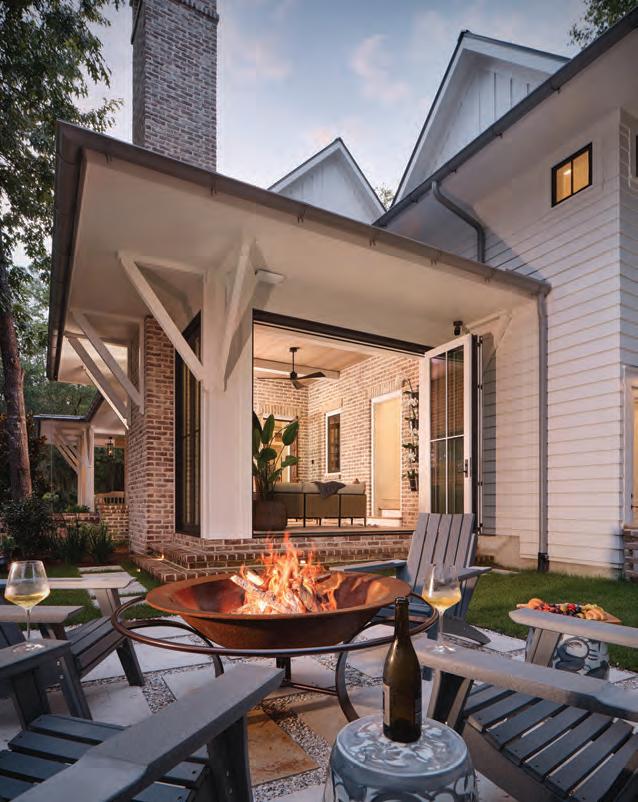
View our portfolio of homes at H2Builders.com • 843.815.GOH2 (4642)
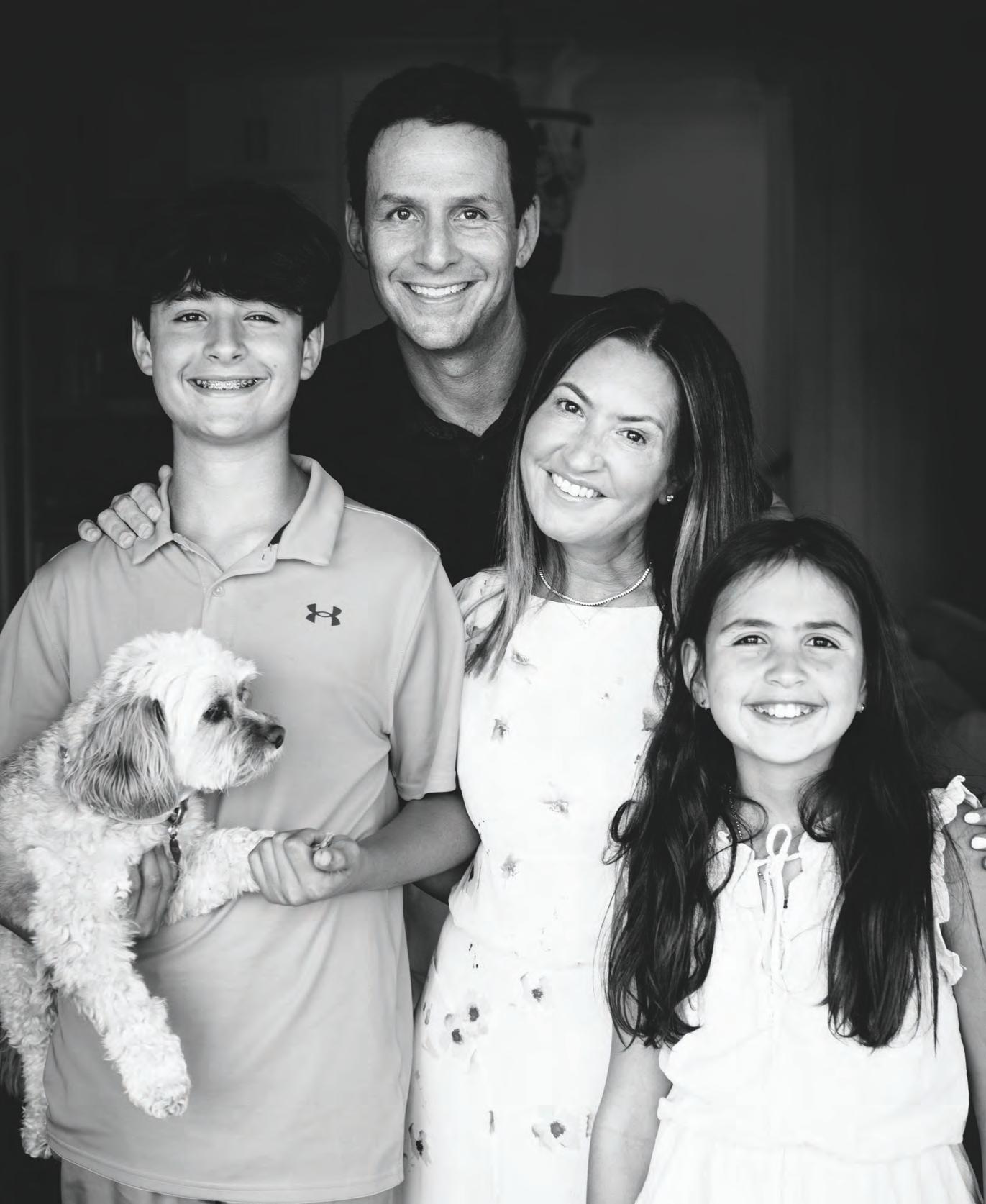
How did you two meet?
Ali: I grew up in Bergen County, New Jersey, right outside of the city. Brian grew up in Los Angeles. I had lived in Los Angeles and was planning on moving back when I met Brian at a birthday party in New York City. We began dating when I moved back to Los Angeles. I think it was our second or third date that we figured out that our fathers grew up a town over from each other.
Brian: Right after we got engaged in 2005, my job moved me to New York City. We’ve been on the East Coast ever since and eventually settled in Greenwich, Connecticut.
What do you do?
Brian: Investment banking on the capital markets side. I’ve worked at Jefferies Group for twenty-seven years.
How did you find Palmetto Bluff?
Ali: We are good friends with [one of our son] Derek’s soccer teammate’s family, the Schieles. They own a home around the corner from here in Moreland [Village]. At the beginning of the pandemic, Lisa Schiele was posting pictures of a place with blue skies and water. I asked her, Where are you where the sun is shining?
She told me about Palmetto Bluff and encouraged us to rent a place. The children were being homeschooled
Brian & Ali Wolfe
PALMETTO BLUFF CLUB MEMBERS GREENWICH, CONNECTICUT
and the weather in Greenwich was atrocious, so we reached out to Montage about renting a place for the month of May.
What were your first impressions?
Ali: When we first arrived, there was nothing open. The pools and inn were closed, and the restaurants were carryout only. But I immediately fell in love with the property and scenery. I would sit outside on the patio and read for hours. It was surreal.
When did you decide to buy?
Brian: Ali was immediately touring real estate. And I was like, The world’s coming to an end. We’re not buying! The next month we put down a deposit on this townhouse.
They hadn’t started construction yet, so we could make finish changes and move walls around. We knew we didn’t want to live here all the time, so this was plug and play and no maintenance. It just felt very easy.
Ali: We certainly made this townhouse our own. I worked with my decorator in Greenwich, and we drew inspiration from old homes in
the Lowcountry, especially the French influences of Savannah. We found a fantastic local artisan who added all the custom millwork.
What does your life look like when you’re here?
Brian: My son, Derek, and I play a lot of golf. We also love to charter boats and have a captain take us around.
Ali: We fell in love with pickleball, and my daughter, Beatrice, and I both take tennis lessons. It’s great to have Cole’s next door with the bowling alley and the pool.
What is it about living here that you love?
Ali: I feel like I have created my own Hameau de la Reine! Waking up to the spectacular views of Spanish moss and the marsh, I feel very lucky. There’s something about the Lowcountry, something magical. It’s oftentimes indescribable. We are also so fortunate to live in a community that cares about preserving the environment. I wish every place was like this.
13FALL/WINTER 2022
PICTURED HERE WITH DEREK AND BEATRICE
ANCIENT HARVEST
There is a spirit to our waterways. It speaks to us through the pluff mud, whispering its secrets from between blades of spartina grass. It is steeped in tradition, sustained through generations. It is the oyster, and it was here long before us.
 STORY BY BARRY KAUFMAN || PHOTOGRAPHS BY LAWSON BUILDER
STORY BY BARRY KAUFMAN || PHOTOGRAPHS BY LAWSON BUILDER
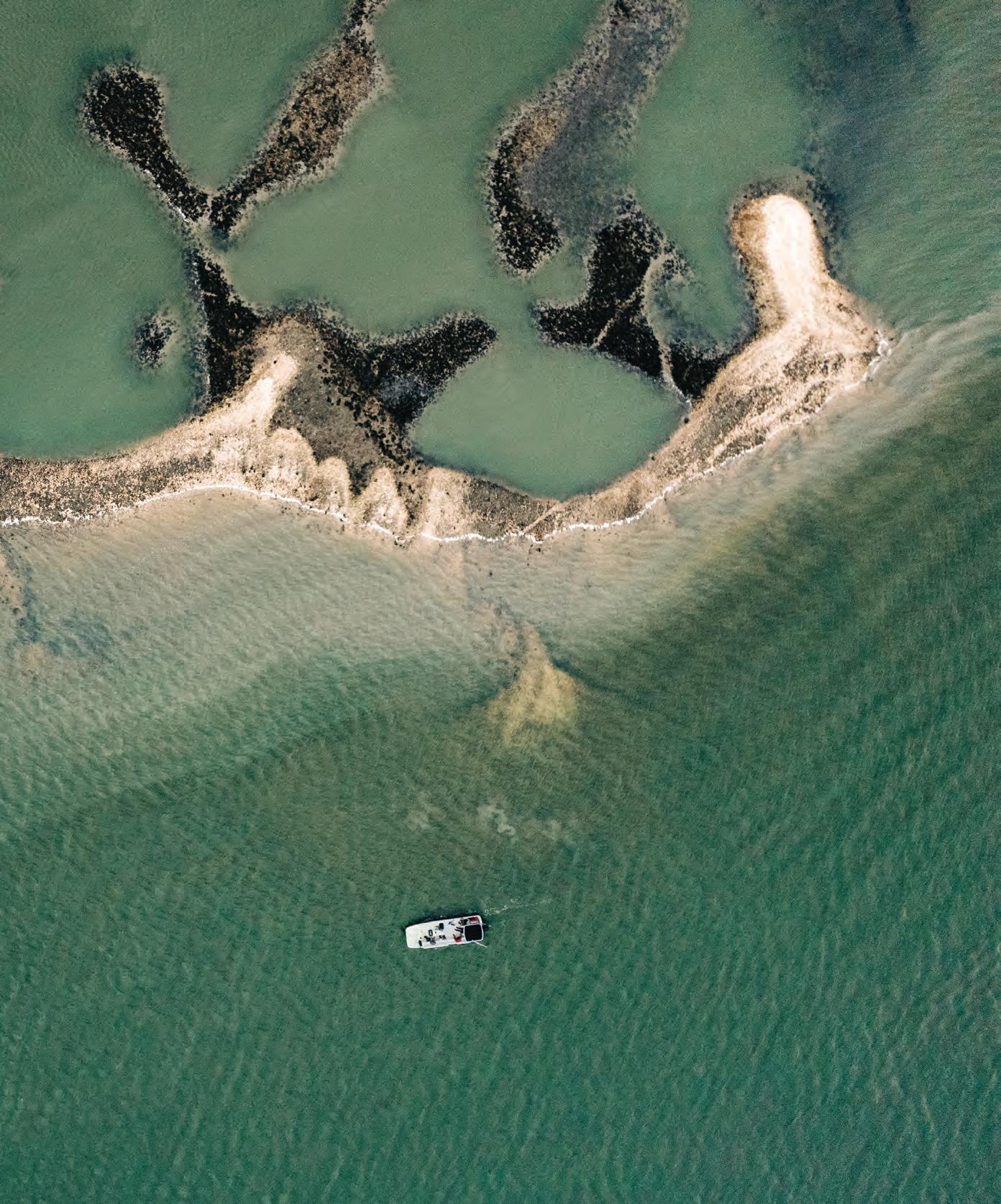
Traveling the waters that snake between islands and expanses of marshland, it’s easy to get a sense of the eternal in the Lowcountry. My rational mind knows that it is safely aboard a thoroughly modern plexiglass-hulled center console fishing boat, but my imagination soars around each bend in the river. From the water, I can picture these banks playing host to Native American hunting parties. I can see the great shrimp boats, steamers, and packets that once chugged along the waves. I can smell the same salt air that once scented the Cretaceous period.
The river is as the river has always been. And the one creature that has connected all these chapters in its story is also the most overlooked. It’s the oyster, and its story is more integral to the grand saga of the Lowcountry than you might think.

A Boat Ride Through History
Sitting on the bench of a bay boat, it is a little easier to see through the veil of history. This is a select group of enthusiasts, thrown together by fate to experience the full breadth of the oystering world together.
Manning the helm is Boo Harrell, a guide for Outside Hilton Head who grew up on these waters, exploring the tides in a little jon boat. Father and son Richard Mitchell senior and junior have been working an oyster lease on Hilton Head Island’s Broad Creek since the days before a bridge connected it to the mainland. Jean Fruh, with the Outside Hilton Head Foundation, has been using cast-off shells to help maintain the eternal beauty of these waters.
Lowcountry culinary icon BJ Dennis and oysterman Cyrus Buffum of Seaborn are also along for the ride. Dennis is renowned as a keeper of Gullah Geechee foodways and is responsible for bringing today’s group together. Buffum represents a new generation of oystermen in the Lowcountry who strive to keep old traditions alive.
The boat ride is like a trip back in time. Mitchell senior talks of the old days, about oystering in the dark, about mountains and mountains of oyster shells, and

16 PALMETTOBLUFF.COM
The oyster has been utilized by man for nearly 4000 years in South Carolina. Shell middens and circular arrangements date back to 2000 BC and indicate that Paleo-Indians used oysters for food and shells for tools and trade. A shell pile the size of three football fields was discovered near Awendaw in the 1960s and evinces long-term occupation of the area.
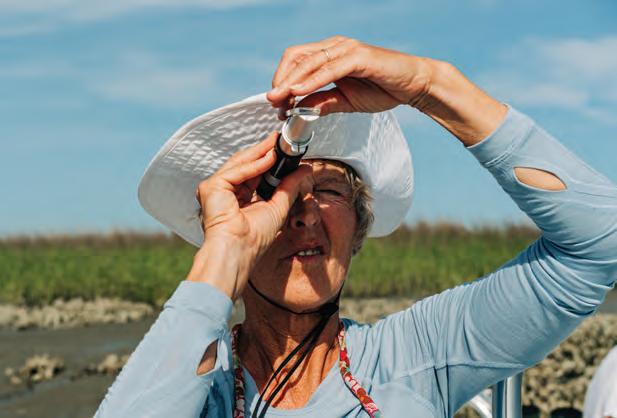

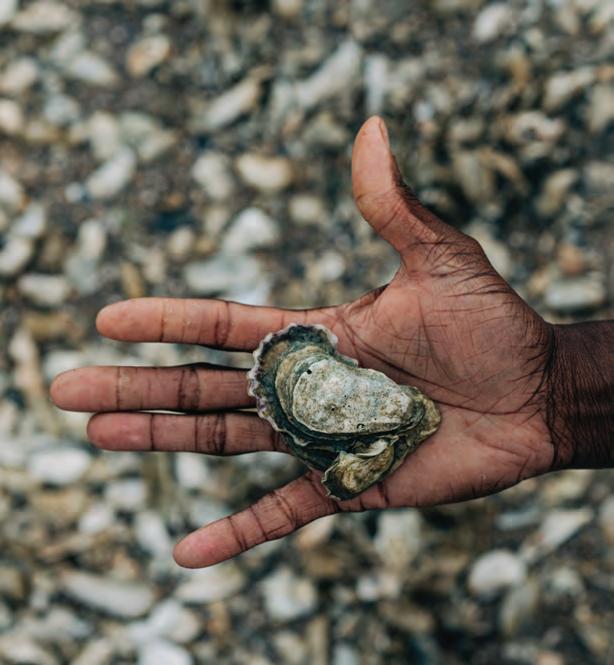
 LEFT: RICHARD MITCHELL JR. | ABOVE: JEAN FRUH |
RIGHT: CYRUS BUFFUM
LEFT: RICHARD MITCHELL JR. | ABOVE: JEAN FRUH |
RIGHT: CYRUS BUFFUM
17FALL/WINTER 2022

long shifts at the cannery. This is a man who knows the ebb and flow of the tides deep in his bones. Hearing these stories, and seeing the old photos, you truly gain an appreciation for the oversized role these creatures played in the evolution of the Lowcountry.
It is, in fact, thanks to oysters that we know anything at all about the Lowcountry’s Stone Age past. Paleo-Indians came here just after the glaciers receded, spending the first winters after the end of the Ice Age in the warmer climate of our shore. And we know that because of the shell rings they created, vast piles of discarded shells that outlasted the long drumbeat of their history.
Just as the oyster drew the first men here, it created a way for people to call this area home when it was still a wild tangle of barrier islands at the edge of civilization. In a later era, freed from the bonds of slavery, the native Gullah were able to subsist on the harvest they’d find along the banks of these waterways, in addition to what they could farm. With that bivalve bounty came industry, giving families a living wage in the wilds of commerce.
When Harrell pushes forward on the throttle and tells the gathered crew that we’re about to visit the most beautiful oyster beds we’ve ever seen, Mr. Mitchell just laughs. Because he remembers when healthy oyster beds stretched as far as the eye could see.

The Advent of Industry
We may be a powerhouse of tourism today, but there was a time when oysters ruled South Carolina. During the Gilded Age when oil and steel barons began building the mansions that would establish them as American royalty, the Lowcountry’s oystermen were just working the tides to feed their families. Slowly, however, an industry began to form around Charleston.
There, the oysters were packed up at shucking plants that dotted the coast, sealed up with then-revolutionary advancements in canning and refrigeration and shipped around the country. The industrialists of the era smelled money in our waters. Before long, people like the Maggioni family had found a way to turn this harvest
into a legacy that remains today. At South Carolina’s peak in the early twentieth century, as many as three million bushels a year were shipped from the Lowcountry across the world.
Even in our own quiet waters, the oyster industry brought livelihoods to thousands. Canneries sprung up around Hilton Head Island and up and down the May River. Today the only remnants of that bygone era are The Old Oyster Factory restaurant on the island and the Toomer family’s operation at Bluffton Oyster Company.
The elder Richard Mitchell first learned to harvest oysters at the age of six, led out to the banks by his mother Evalina and taught the finer points of raking and harvesting. “These days all kids want is a cell phone,” he tells me. “Nobody wants to get up at one and go back at five in the morning.”
In most of its range Crassostrea virginica grows subtidally, fully submerged throughout its life cycle. In the Lowcountry, however, the Eastern oyster grows intertidally, in the zone between high and low tide. Competing for space along the muddy banks of rivers and creeks, these oysters grow in dense clusters and often have a distinct blade shape.
19FALL/WINTER 2022
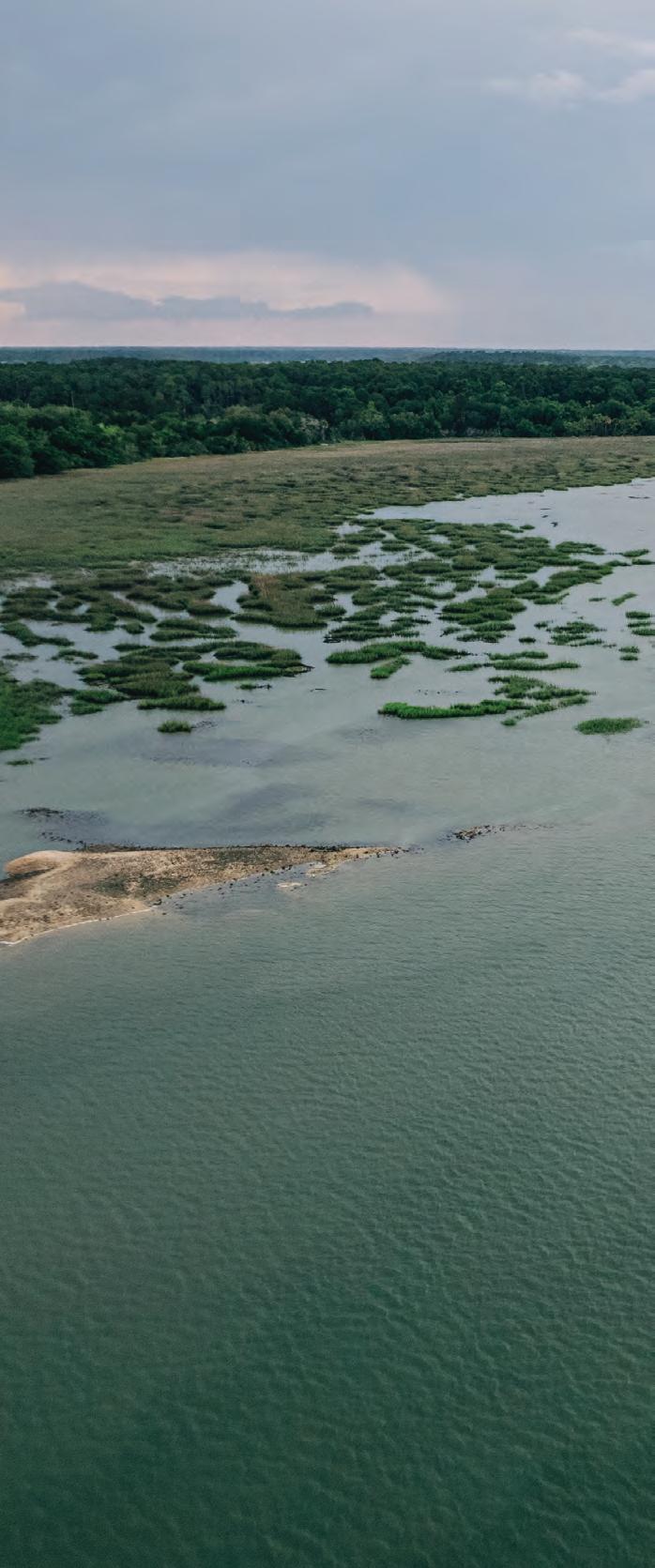
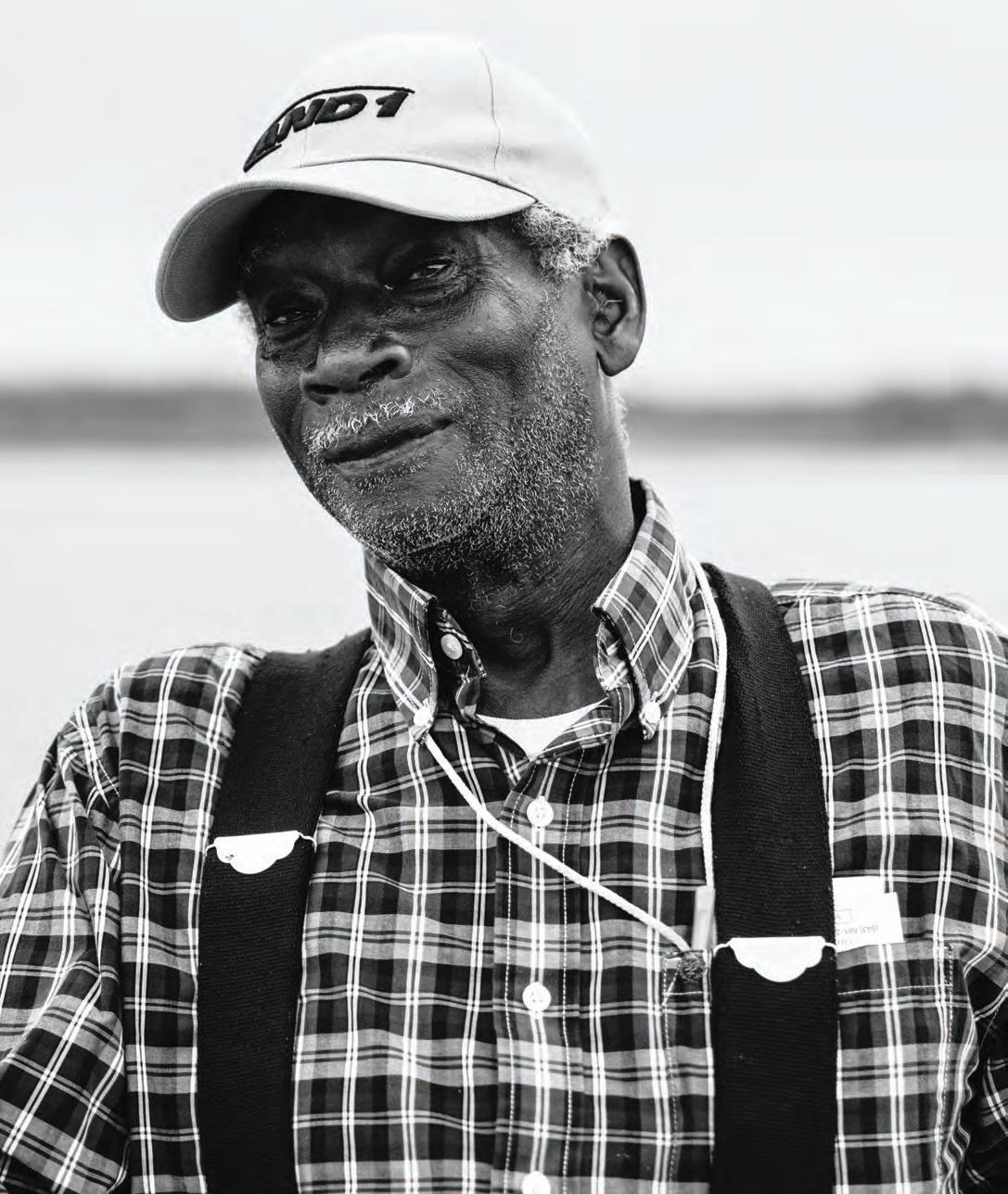 RICHARD MITCHELL SR.
RICHARD MITCHELL SR.
20 PALMETTOBLUFF.COM
Just as the oyster drew the first men here, it created a way for people to call this area home when it was still a wild tangle of barrier islands at the edge of civilization.
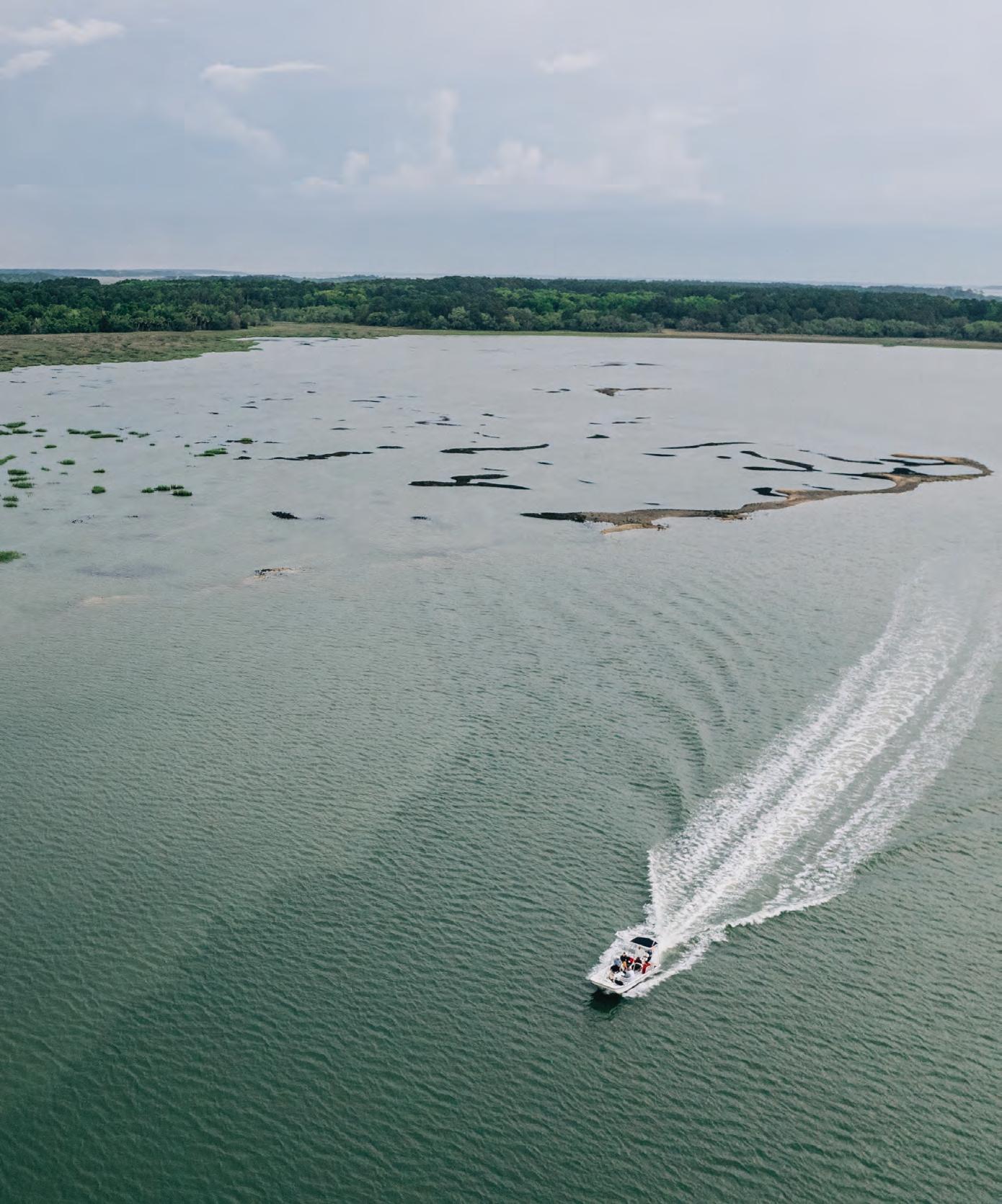


 ABOVE: CYRUS BUFFUM, RICHARD MITCHELL JR., AND CHEF BJ DENNIS
ABOVE: CYRUS BUFFUM, RICHARD MITCHELL JR., AND CHEF BJ DENNIS
22 PALMETTOBLUFF.COM
As we meander along the river, Buffum produces a binder packed with printouts and maps. Stained and creased black-and-white photos show massive oyster houses and canning facilities that stood where condos and lavish beach houses now face the water.
By the time Mitchell had started working his oyster bed, the big canning plants had all gone. Pollution from the Savannah River had seen to that. When the federal government shut down all of Daufuskie Island’s oyster beds in the 1950s, the canneries soon followed. But even in the absence of industry, Mitchell still was able to coax a living out of the pluff mud, selling his bounty to Savannah.
Coming Full Circle
Today oysters may not be one of the main staples of the Lowcountry diet. They may not be the driving force behind the state’s industry. Richard Mitchell is just one of a handful of oystermen left, where before they had been a legion, supplying an industry that employed thousands. And to hear him tell it, he might be one of the last. As travel, tourism, and hospitality became the buzzwords of the region, bringing with them big-money investors from points north, oysters returned to being, at best, a cottage industry. But that doesn’t mean the oyster’s story is over.
From the boat, Fruh points out spots along the river boasting the artificial oyster beds she and the Outside
Foundation have planted. Each bushel, comprised of thousands of shells collected from seafood restaurants around the Lowcountry, is acting to control erosion and help give oysters a new lease on life.
“If you look at the architecture of how they’re stacked and all those nooks and crannies, they’re really good at absorbing force,” she says, pointing to a stretch of sand along the shore. Here, two years have passed since the oyster bales were put in place, and it’s easy to see the effects. Follow the water, and you’ll see a silty slop of pluff mud transform into a healthy emergence of spartina grass just past the breaker. “Hopefully it’ll help slow the erosion and help that bank creep back.”
This spot is just one of dozens that the Outside Foundation is saving from erosion. And thankfully, the Lowcountry’s appetite for oysters keeps them well supplied. Even more fortunate, the next generation of culinary stars has demonstrated that they’re equally interested in preserving the legacy of oystering in the area as they are in turning these delicacies into epicurean masterpieces.
Buffum still harvests his oysters wild just as those before him have done for centuries. He began his career looking at the water from a scientific perspective, but his passion balances modern-day practicality with a deep reverence for oystermen who have come before him.

“I haven’t had the benefit of seventy years of knowledge, so I’ve had to try to leverage the archives, to leverage the sciences and my background,” says Buffum. “There’s a whole rich history that I only know little pieces of. The majority of it is between Mr. Mitchell’s ears.”
To that, Mr. Mitchell once again only laughs. Because he knows how much history oysters carry. Far more than what’s between his ears, far more than anyone can learn from any archive. The stories are infinite, each one a thread that binds the Lowcountry together. There are the glory days, when folks raised families on the bounty of our oysters. And there are greater days ahead, as a new generation continues on the story of the oyster.
23FALL/WINTER 2022

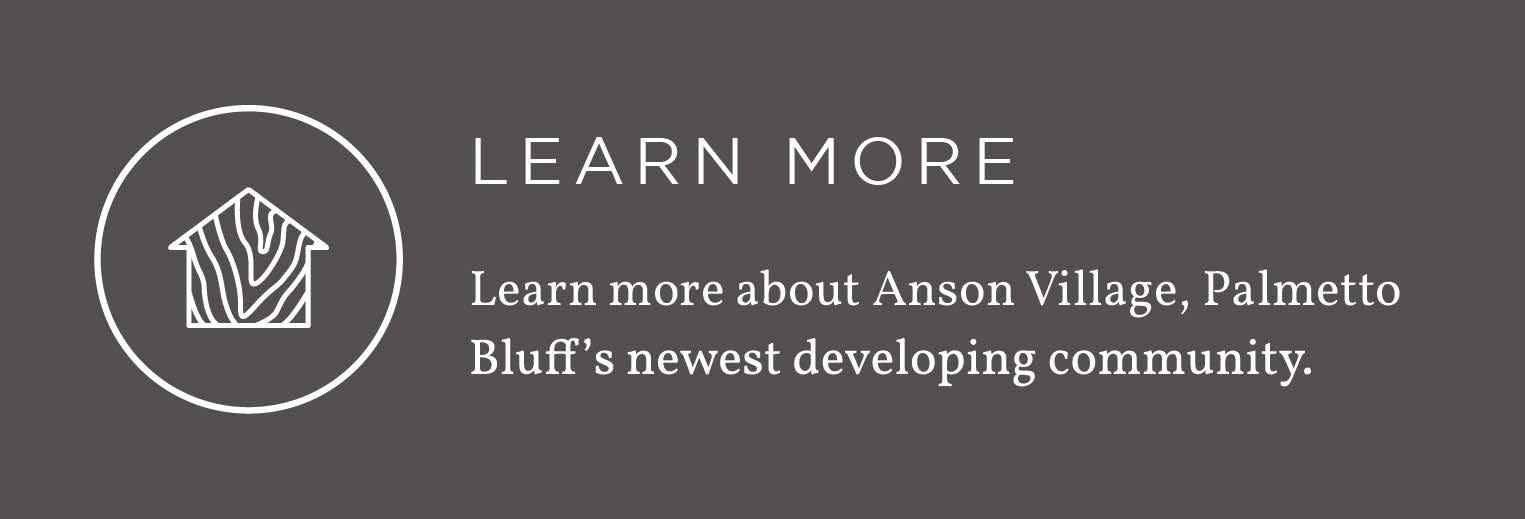
THE ROAD To ANSON
THERE IS AN ENERGY HERE, A SORT OF VORTEX OF NATURAL SYSTEMS THAT FEELS RARE AND SINGULAR. PERHAPS IT’S THAT THIS LAND FEELS UNFATHOMABLY ANCIENT, THAT IT HOLDS THE MYSTERY OF THE LOWCOUNTRY’S EARLIEST INHABITANTS, ARRIVING HERE AFTER THE GLACIERS RECEDED WITH THE END OF THE LAST ICE AGE, CARVING THEIR WAY THROUGH THE STRATA OF THE EARTH AND TRAILING MELTED WATER THAT SNAKED ITS WAY TO THE OCEAN. IT WAS THIS GRADUAL MOVEMENT THAT SHAPED THE REGION, FORMING THE CHANNELS BY WHICH SEA WATER EBBS AND FLOWS FROM THE MAY RIVER.
IT IS A MORE RECENT HISTORY, FROM LORDS PROPRIETORS TO THE ANTEBELLUM, FROM THE CIVIL WAR TO RECONSTRUCTION. THIS LAND HAS HELD GENERATIONS, CRADLED THE PAIN AND JOY OF COLONISTS AND EXPLORERS, OVERSEERS AND ENSLAVED PEOPLE, FARMERS AND FREEDMEN. AND IT IS THE NATURAL BEAUTY—THE IRIDESCENT GREENS OF THE MARSH IN SUMMER, THE ANCIENT CANOPIES OF OUR LIVE OAKS. IT IS THE SMELL OF SANDY SOIL AND THE MARITIME FOREST, THE WAXY RUSTLING OF PALMETTO FRONDS IN THE SEA BREEZE.
Story by Hailey Wist Photographs by Patrick O’Brien
Thisland is loved, revered even. This extraordinary amalgam of history and nature has been at the heart of Palmetto Bluff since the early stages of development. In the original vision statement, Jim Mozley and David Howerton reimagined the planned community concept, establishing neighborhood guidelines that favored deep porches and white picket fences over McMansions and double-wide driveways. They wanted to create something with the charm and romance of historic Beaufort and the storied streets of Savannah. The result was Wilson Village, Palmetto Bluff’s beloved neighborhood and beating heart of the larger community. Its streets are shady and narrow, its homes the picture of the Southern ideal.
But more importantly, Mozley and Howerton prioritized the natural environment, raising standards for water protection, enlarging setbacks, and identifying specimen trees. They set aside buildable waterfront property for parks and nature corridors and forewent individual dock permits. Their early vision is the reason the May River looks much like it did one hundred years ago, with only the gables and rooflines of homes peeking from the dense shoreline canopy.
Essential to this process was the inception of the Palmetto Bluff Conservancy. Organized by the Palmetto Bluff Company in 2003, the Conservancy has played an important role in land planning and preservation at Palmetto Bluff. The Conservancy team weighs in on roads, the lagoon systems, setback guidelines, and landscaping. They educate homeowners on sustainability and identify sentinel trees to protect in the home siting and construction process.
Twenty years later, this development foresight has evolved into a celebrated cornerstone of the Palmetto Bluff community. From Wilson Village, the neighborhoods fan out into larger and larger parcels. Whereas the town lots of the Village might be .13 acres, the country lots can be as large as 30 acres. This variation has a naturalizing effect, and it feels like these neighborhoods have been here much longer than they actually have.
The emphasis on authenticity continues to be fundamental to the land plan. When South Street Partners took over the stewardship of Palmetto Bluff in June 2021, they knew they were taking on an important legacy. “The built environment at Palmetto Bluff is one of the best, if not the best, I’ve probably ever seen anywhere in terms of execution, quality, and consistency,” says Chris Randolph at South Street Partners. “There’s a higher bar here. So we’re going to have to not only meet it, but exceed it.”
Anson Village ushers in a new era for Palmetto Bluff and an exciting opportunity for the South Street team. It’s not a project the partners are taking lightly. They have brought David Howerton and the team at Hart Howerton back to Palmetto Bluff as a key development partner. They’ve also enlisted land planner and architect Mark Permar. Permar contributed to the development of Wilson Village back in the early 2000s and has been instrumental in the planning of renowned Kiawah Island. Returning to Palmetto Bluff poses an intriguing challenge for Permar. “When you take a break from a location and then reconnect,” he says, “it’s an opportunity to see the place with fresh eyes again.”
And with fresh eyes, visionaries like Howerton and Permar see endless opportunity to innovate, work closer with nature, to yet again reimagine the planned community. Permar has seen the stark contrast between development that works with nature and development that conquers it. “Our team doesn’t think like that,” he says. “We understand that we are part of a continuum.” And this continuum began with a philosophy of responsible development cultivated since the first shovel full of dirt was turned in Palmetto Bluff’s modern era.
“Just like a person, communities have value systems,” explains Permar. “We make choices that reinforce those values.” For Permar and the South Street team, reinforcing those values means weighing every decision against what is right for the land. Even in these early stages, the team is taking a close look at existing waterways, teasing out how to work with the land in
26 PALMETTOBLUFF.COM
WITH ANSON, SOUTH STREET PARTNERS WANTS TO CREATE A COMMUNITY WITH THE SAME WALKABILITY AND CLUSTERED HOUSING THAT DEFINES WILSON VILLAGE, PALMETTO BLUFF’S ORIGINAL NEIGHBORHOOD. THIS DENSER CONFIGURATION IS NESTLED WITHIN TRACTS OF INTACT NATURAL HABITAT.

HART HOWERTON, A KEY PLAYER IN THE CREATION OF WILSON VILLAGE, IS PARTNERING WITH SOUTH STREET PARTNERS ON ANSON VILLAGE AND WILL BE CRUCIAL IN THE EARLY STAGES OF LAND DEVELOPMENT.

27FALL/WINTER 2022
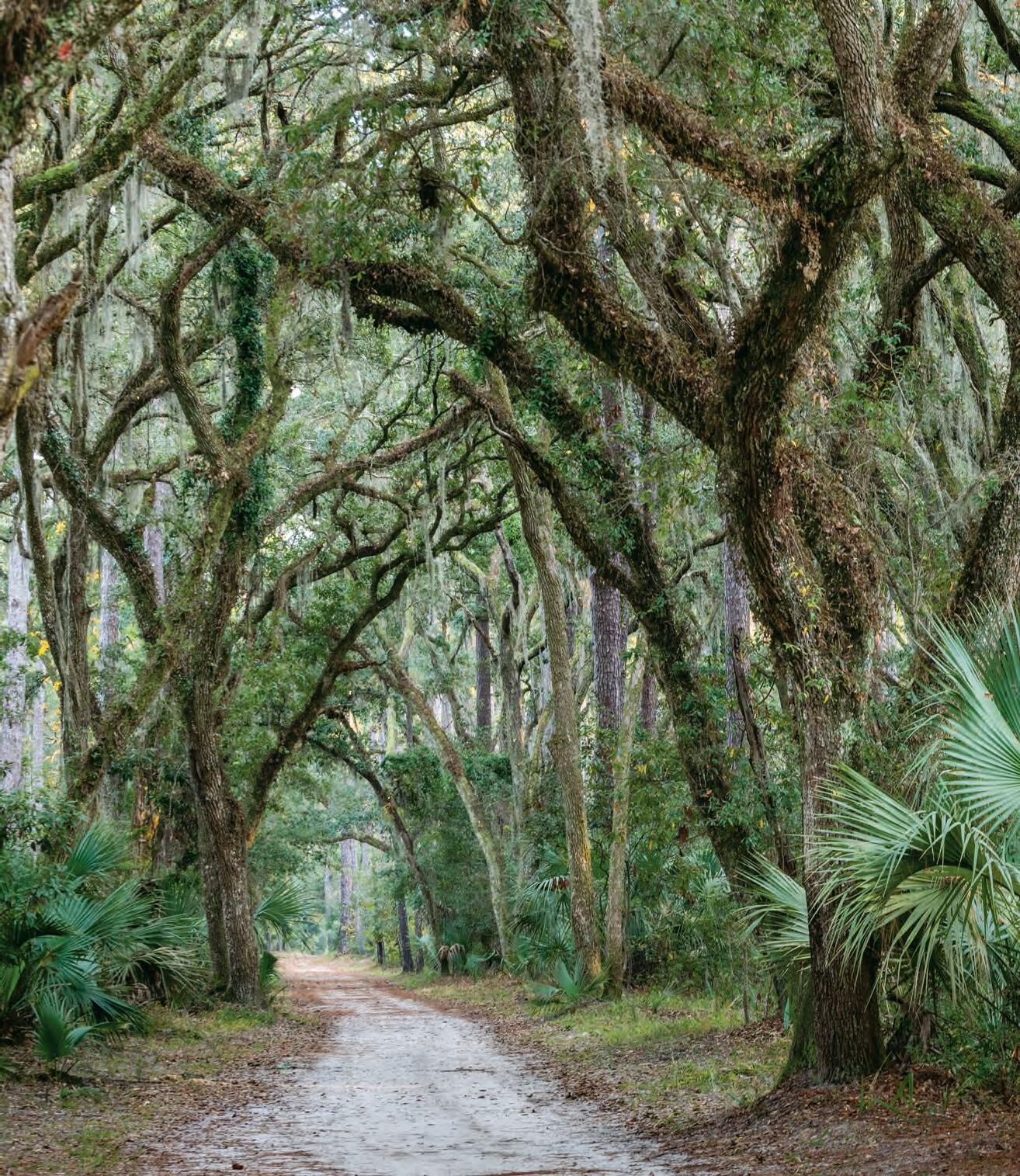
THE DESIGN REVIEW BOARD WORKS IN CONCERT WITH THE CONSERVANCY TO MAINTAIN STRICT REQUIREMENTS FOR TREE REMOVAL. THE IDEA IS TO CREATE A FILTERED VIEW, SWATHS OF MARITIME CANOPY TO SOFTEN THE BUILT ENVIRONMENT.

meaningful ways. “If you work with natural systems as opposed to fighting them, you’re more efficient, and— more importantly—responsible,” he explains. “Where would a waterway be naturally? Where are the natural low-lying areas?”
Again, the Conservancy is central to this bigpicture planning. As the development team explores the southwest end of the property, they are working closely with Conservancy director Jay Walea—identifying specimen trees, wildlife corridors, and areas of historic use. Exploring the site of the future Anson marina has been particularly exciting for Permar. “There are signs of prior settlement where the marina will be located,” he notes. “Part of the exercise over the next six months will be to reveal that.”
This deliberate, methodical approach gives the land planning team room to dream, to imagine. And as the planning moves from macro to micro, South Street Partners hopes to set even higher standards, to build on the magic of Wilson Village but also innovate and reimagine. “It’s exciting. Anson is such a unique and dynamic setting,” says Randolph. “And we get to put our fingerprints on it.” For Director of Design Stephanie Gentemann, the Anson project is an opportunity to create another iteration of Lowcountry architecture. “Each village has a unique flavor,” she says. “I hope we can create something distinctive and special with Anson.”
Planning the road to Anson, the team is not only looking backward on the continuum, but forward. “This is our evidence to the world. This is what our values are and the hope is that future generations will continue to find ways to enhance those values,” says Permar. “The choices we make now will say who we are later on.” The next era in Palmetto Bluff’s history—a history that stretches back to the days when walls of ice carved it from the earth—is just starting to be written.
29FALL/WINTER 2022

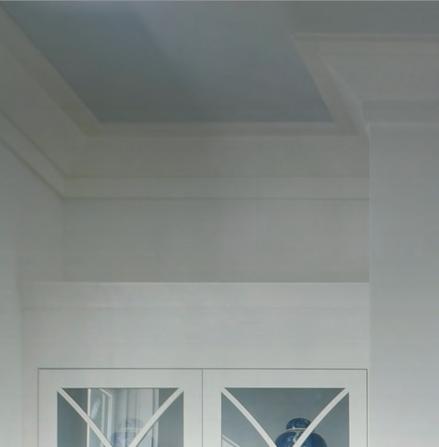

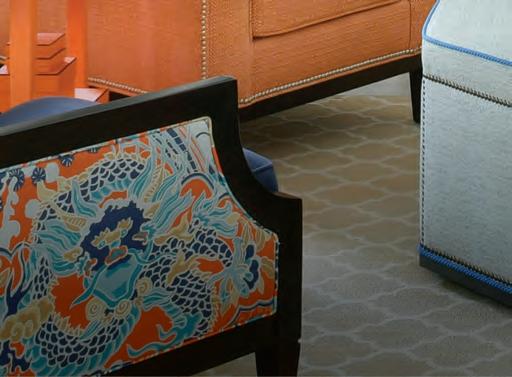












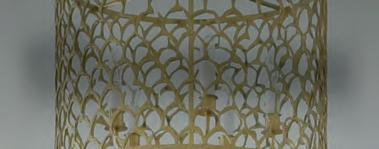


PO Box 1928 | Bluffton, SC 29910 | (843) 247-5452 | csthomasconstruction.com The way home.
the Outdoorsman
 BY JUSTIN HARDY LAND AND WILDLIFE MANAGER FOR THE PALMETTO BLUFF CONSERVANCY
BY JUSTIN HARDY LAND AND WILDLIFE MANAGER FOR THE PALMETTO BLUFF CONSERVANCY
With a title like “The Outdoorsman,” you may be hoping I’ll wax on about the time I ate rib meat off a fresh kill in an ice storm during an earthquake when eight of my fingers were broken from fighting a bear in shark-infested waters.
But no. Not today… Today, it’s all pretty leaves and flowers in the fall.
The deciduous forests of the northeastern United States are famous for their fall color change. This annual wham-bam of color is spectacular, sure, but it holds ominous notions. It signifies the beginning of a long, wet cold that a Southern bumpkin like me can’t fathom. After a brief explosion of color comes gray and drab. It is true that I have zero experience with actual winter as I have rarely left my Southern comfort zone. “Winter,” down here is…well…it ain’t bad and that’s just fine. Our mild winters mean that the forest is always green, always alive, and always loud to the eye. Hell, they should call it the “fall color stay” down here.
Though the South doesn’t display a dramatic, landscape-wide color change, we do have several species that show off. This pageantry occurs in easy-to-find patches scattered throughout our perma-green maritime forest. Hickory trees and witch hazel show bright yellow. Sweetgum and sparkleberry trees get a swirl of purple and red. Sassafras, bright red. Creeper vines, purple. The
list goes on. If you want a tour, River Road Preserve and Sand Hill Loop Nature Trail truly shine with color. These locations are unique and easily accessible with miles of hiking and biking trails. When you are in these places, you won’t have to search very hard to find the colorful oddballs. They stand out like an ostrich at a chicken fight.
The South also has a plethora of flowering plants well into October. The Oak Island area of Palmetto Bluff in October is our crown jewel. Deep green pine tops and scattered live oaks are the overstory of an ocean of purple blazing star, yellow goldenrod, and white boneset. The bronze-colored native grasses have puffy, white seed heads that sway in the breeze at eyebrow height. Fourforty-five in the afternoon is the perfect time to visit. The light hits at just the right angle and everything shines like tinsel at Christmas…a seventy-degree Christmas.
Alone in the forest on a fall afternoon, a cool breeze from the north slides in and breaks across my shoulders. The chill is short-lived but it reminds me to be grateful for the temperate beauty I’m standing in. I’d imagine our wild neighbors share the sentiment.
MY THREE TAKEAWAYS:
•PALMETTO BLUFF IS STUNNING IN THE FALL.
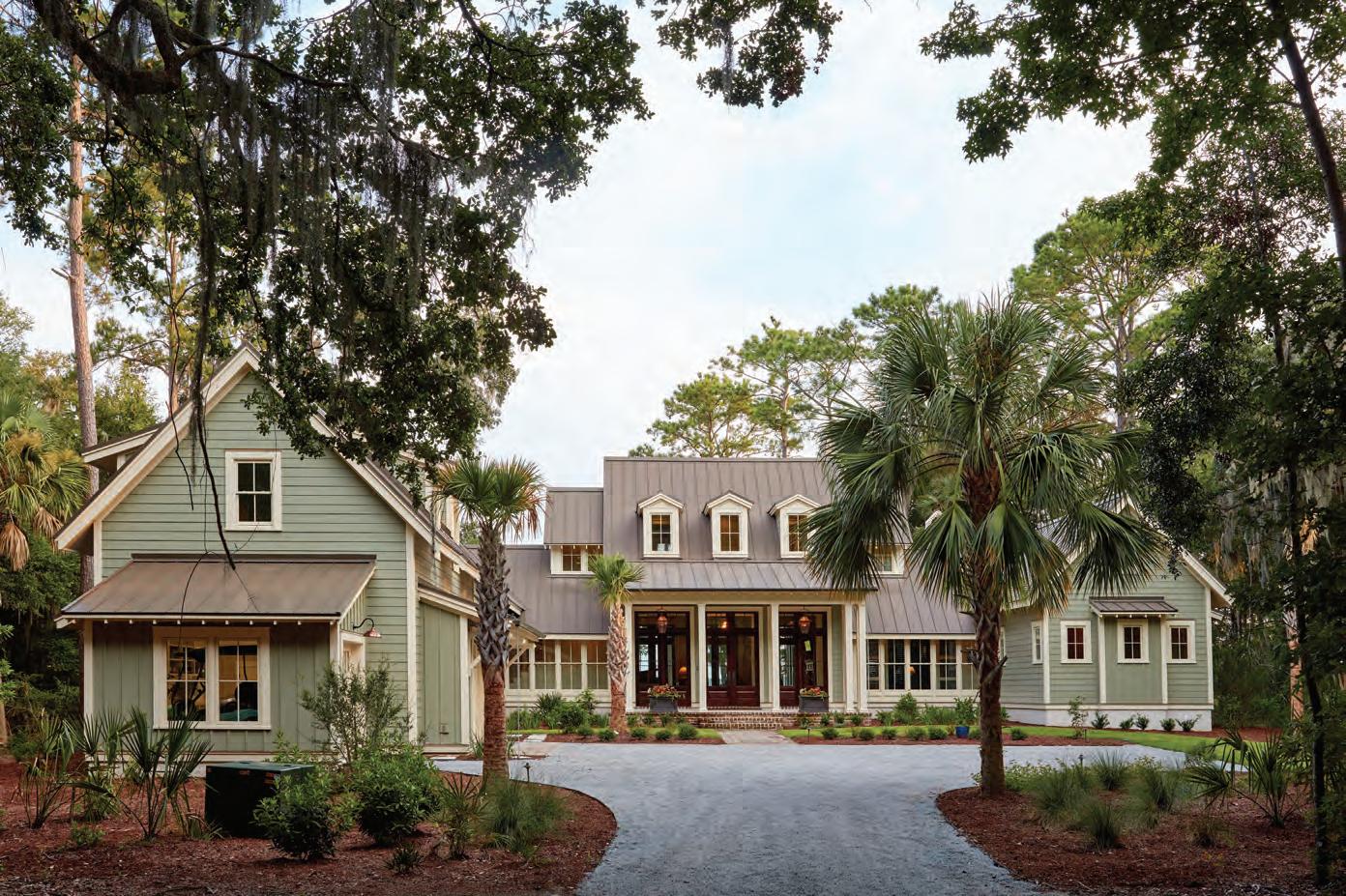
•I WOULDN’T KNOW WINTER IF IT BIT ME ON THE HINDQUARTERS.
•REAL OUTDOORSMEN LIKE FLOWERS AND PRETTY LEAVES.

32 PALMETTOBLUFF.COM

P.O. Box 902 • 33 Boundary Street • Bluffton, SC 29910 • 843.757.8220 (office) • www.genesis-construction.com BUILDING TO A HIGHER STANDARD
SIGNATURE DISHES INCLUDE OYSTERS FROM BOTH COASTS, A FRESH SPIN ON CRAB LOUIE, PRIME DRY-AGED STEAKS, BLACK TRUFFLE CREAMED CORN, AND A STUNNING SEAFOOD TOWER.
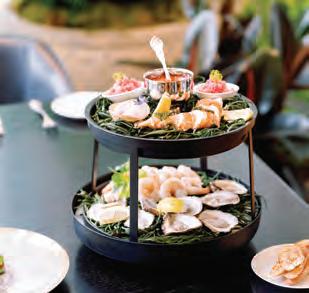
Reimagining
RIVER HOUSE
In spring 2022 Palmetto Bluff celebrated the long-awaited return of River House, the beloved restaurant overlooking the May River. The first restaurant opened within Palmetto Bluff, this landmark venue was redesigned by South Carolinabased Court Atkins Group.

With floor-to-ceiling windows and endless river views, the restaurant includes a trim thirteen-seat bar, an al fresco lounge within a screened-in porch, and a bourbon wall that serves as both a functional and focal piece of art within the space. While paying homage to Palmetto Bluff’s original culinary experience, the new River House features distinctive touches with a curated collection of sterling silver carefully sourced from antique boutiques, tableside cocktail and culinary preparations and saucing. The menu, overseen by Chef de Cuisine Daniel Vesey, focuses on quality steaks and seafood, seasonal ingredients, and detailed presentation, creating visually striking gastronomy.

34 PALMETTOBLUFF.COM
new place to celebrate in the Lowcountry.
Introducing River House at Montage Palmetto Bluff.
River House is a celebration of Lowcountry culture and cuisine—an instant favorite. This intimate connection between land and sea intertwines seasonal harvests, thoughtfully sourced meats, fresh catch, cocktails and wines, curating an experience as unforgettable as the Lowcountry itself. Now accepting reservations.

RIVERHOUSESC.COM (855) 774-1286

esteemed equine
 PHOTOGRAPHS by GATELY WILLIAMS
MANAGER KAELYA SOMMER INTRODUCES
BELOVED RESIDENTS OF LONGFIELD STABLES
PHOTOGRAPHS by GATELY WILLIAMS
MANAGER KAELYA SOMMER INTRODUCES
BELOVED RESIDENTS OF LONGFIELD STABLES
EQUESTRIAN
THE
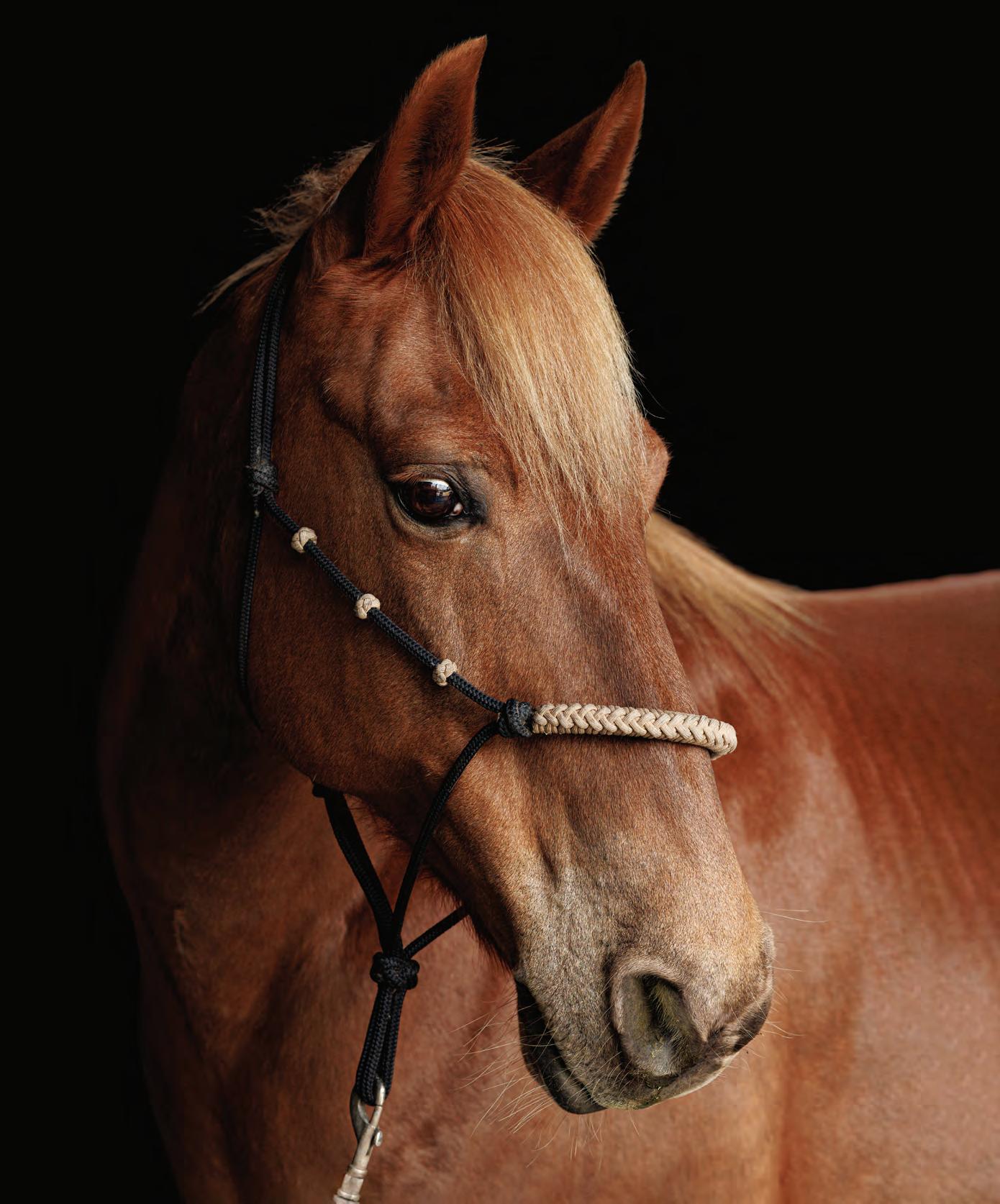
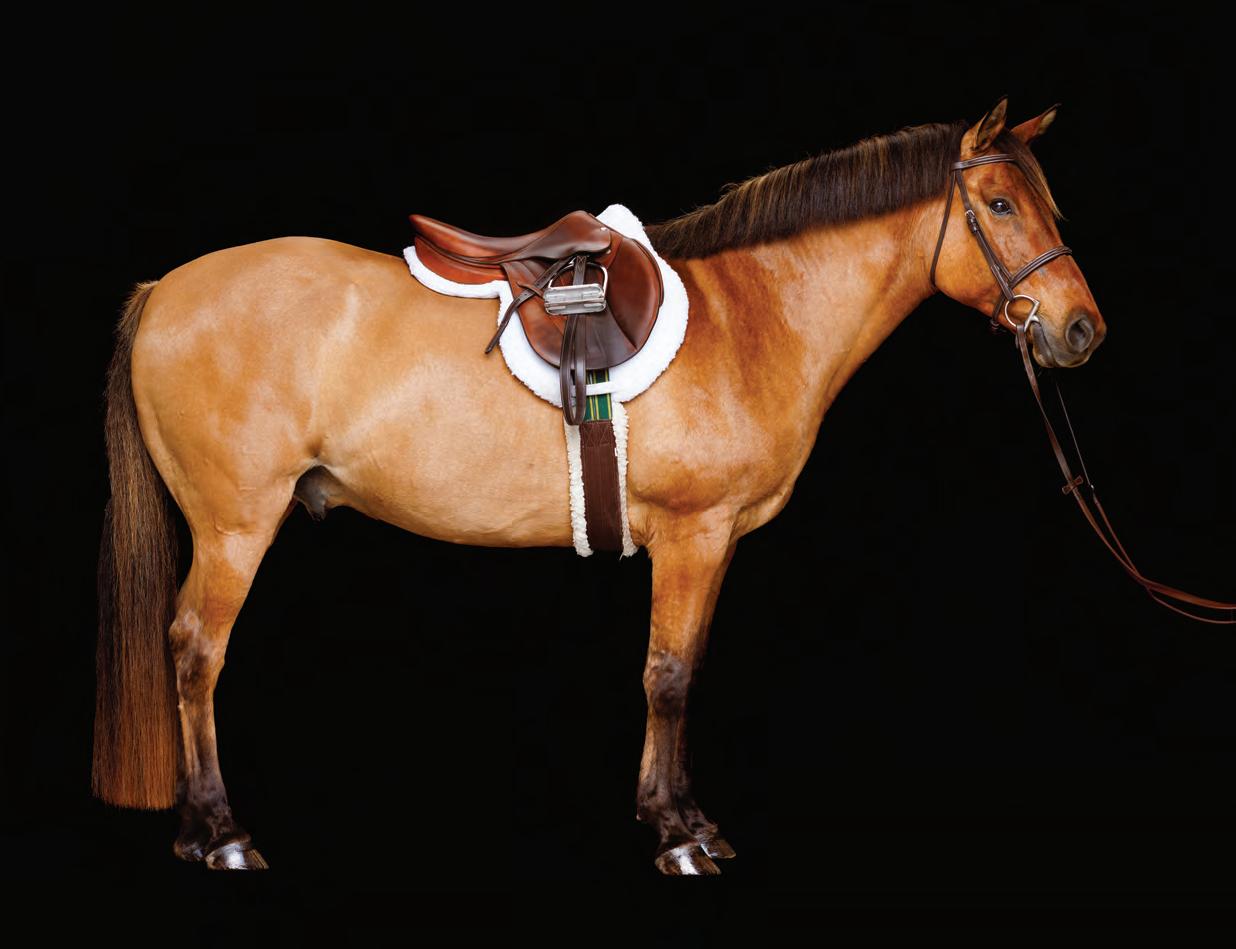
38 PALMETTOBLUFF.COM
JOAB
15 YEARS | 14.1 HANDS | MARSH TACKY | DUN
Joab is so sturdy and unflappable, we’ve had a trained ninja backflip off his back! He is a bit lazy and prefers to be petted and cuddled above all else. Deacon is his best friend, and when the two are separated, they call to each other. When you meet him, notice the classic Marsh Tacky dorsal stripe down his back.
DEACON
12 YEARS | 17.3 HANDS
PERCHERON FRIESIAN MIX | BLACK
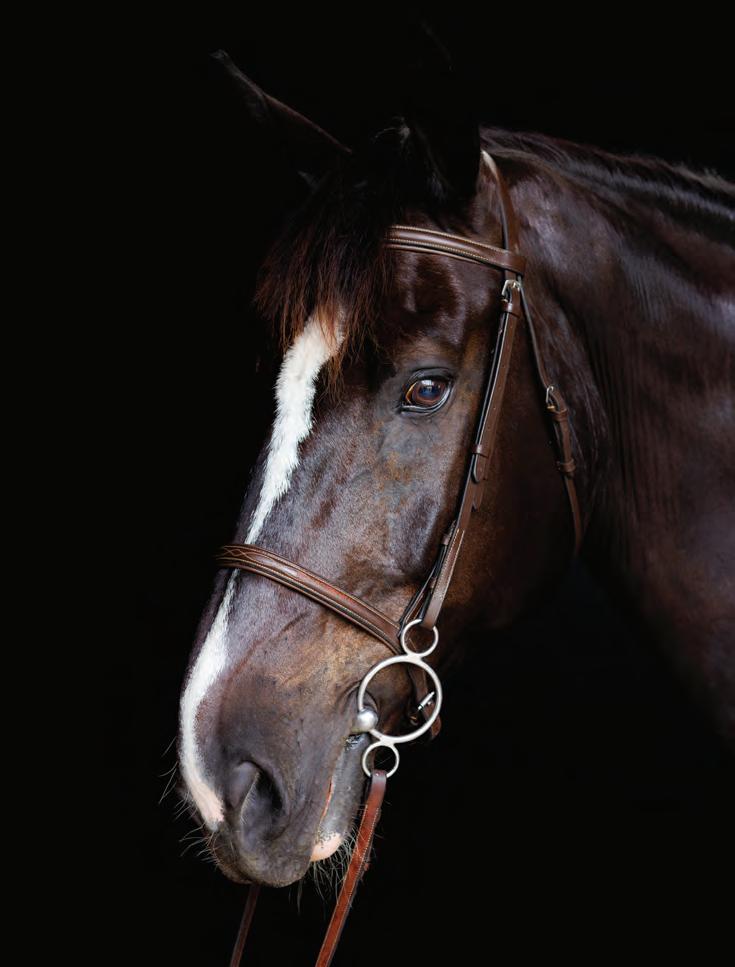
Deacon is our largest horse. He was trained to fox hunt in Aiken, South Carolina, and New York and can jump up to four feet. We often put advanced riders on Deacon. His best friend is Joab. They are inseparable! Deacon thinks he runs the stables, and even when he’s out working he will whinny to the other horses to let them know he’s still in charge.
YOUR HAND TURNED HORIZONTAL IS ABOUT FOURINCHES LONG. THIS IS HOW WE MEASURE THE HEIGHT OF A HORSE!
39FALL/WINTER 2022

40 PALMETTOBLUFF.COM
BRAVO
15 YEARS | 15.1 HANDS | MARSH TACKY | RED DUN
Bravo is Joab’s cousin. He is super sweet and the most versatile horse in our stables. One year, for a Marsh Tacky demonstration, we taught Bravo to jump while his rider flew a kite. He does Paint the Pony, trail rides, lessons—you name it!
MARSH TACKIES ARE SMALL AND STURDY BREED BROUGHT OVER BY THE SPANISH IN THE SIXTEENTH CENTURY. THEY WERE ORIGINALLY BRED FOR HUNTING AND ARE INCREDIBLY SURE-FOOTED IN THE BOGGY LOWCOUNTRY TERRAIN.
PHOENIX
15 YEARS | 14.3 HANDS | KENTUCKY MOUNTAIN HORSE | CHESTNUT WITH FLAXEN MANE AND TAIL Phoenix is a gaited horse and has a comfortable third gait called an amble. So he is ideal for trail riding! It’s like riding along on the couch. He loves water and, given the chance, will drop down and roll in the mud! He’s very special to me personally because he had lymphoma, and I spent multiple nights with him at The University of Georgia for a colic surgery. He has recovered beautifully!

41FALL/WINTER 2022
ROXY
15 YEARS | 15.1 HANDS | MARSH TACKY | RED DUN
Roxy came to Longfield with one of our equestrian members. She does everything from beginner rides on the lunge line to pony rides. She can also jump up to two and a half feet with lead changes. And she absolutely loves trail riding. She has a lot of personality and can be sassy with her friends!

RAFIKI
15 YEARS | 16.3 HANDS | HOLSTEINER | BAY
Rafiki is trained in dressage up to level three, but he prefers the trails to the sandbox so we use him as a trail horse! He prefers to be out on the open trail to fancy horse dancing. He has one of the most comfortable canters I’ve ever ridden! His favorite treat is Twizzlers, and his best friend is Pheonix.

43FALL/WINTER 2022
SCARLETT
19 YEARS | 15.2 HANDS | QUARTER | CHESTNUT
Scarlet is our local sweetheart from Pelion, South Carolina. She just wants to cuddle! She does pony rides even though she’s not a pony.
WINTER
25 YEARS | 13 HANDS | PONY | WHITE
Winter is pure white with pink skin, which is very rare. She has to wear sunscreen all the time! She was a rescue and is our calmest and sweetest pony. Her favorite activity is Paint the Pony, and she often falls asleep in the middle of it. She has been featured in weddings and even a Ralph Lauren photo shoot. She wears a unicorn horn on special occasions!
A PONY IS 14.2 HANDS HIGH AND BELOW, A HORSE IS 14.3 HANDS HIGH AND ABOVE.

44 PALMETTOBLUFF.COM
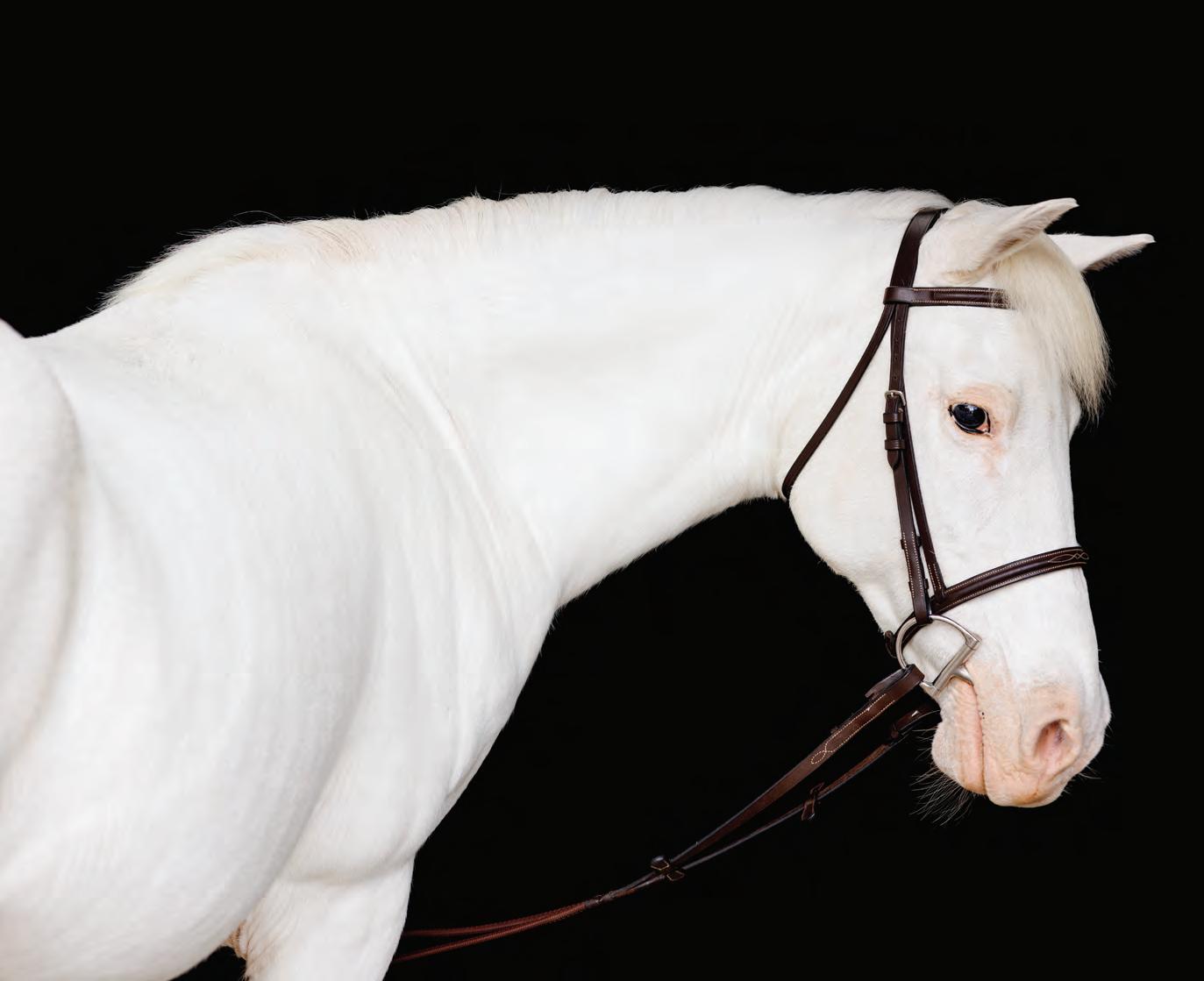
45FALL/WINTER 2022
VIRGINIA
17 YEARS | 13.2 HANDS | PONY | PALOMINO Virginia comes from Onyxford Farm in Virginia, which breeds fancy hunter show ponies. Her full name is Onyxford’s Miss Virginia. Virginia is one of our tried-and-true lesson ponies and works well with everyone from beginners to advanced jumpers. She’s also featured in our Paint the Pony series. She’s very sweet and trustworthy.
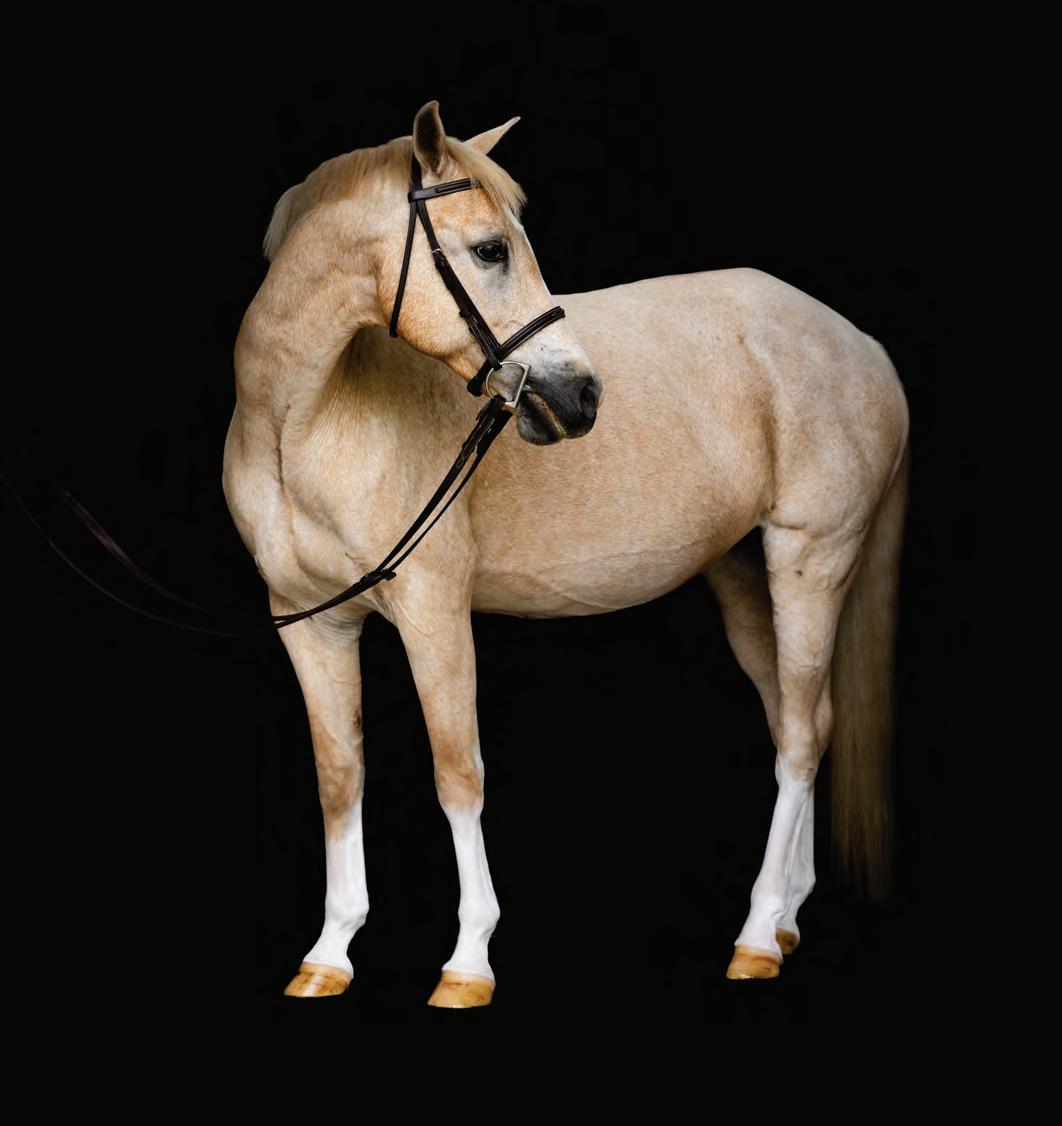
46
LONGFIELD STABLES OFFERS EVERYTHING FROM PONY RIDES TO JUMPING LESSONS, HORSEMANSHIP CLASSES TO TRAIL RIDES THROUGH THE MARITIME FOREST. PAINT A PONY OR STOP BY FOR A STABLE TOUR. LESSONS ARE IMMERSIVE AND COMPREHENSIVE WITH AN EMPHASIS ON HORSEMANSHIP AND CARE.
 KAELYA SOMMER HAS WORKED AS THE EQUESTRIAN MANAGER AT LONGFIELD STABLES SINCE 2019. FOR THE PAST FIFTEEN YEARS, KAELYA HAS MANAGED AND TRAINED HORSES AT PRESTIGIOUS, MULTIDISCIPLINE STABLES THROUGHOUT THE SOUTHEAST.
KAELYA SOMMER HAS WORKED AS THE EQUESTRIAN MANAGER AT LONGFIELD STABLES SINCE 2019. FOR THE PAST FIFTEEN YEARS, KAELYA HAS MANAGED AND TRAINED HORSES AT PRESTIGIOUS, MULTIDISCIPLINE STABLES THROUGHOUT THE SOUTHEAST.
47FALL/WINTER 2022


M Y L A G O S M Y W A Y THE SHOPS AT SEA PINES CENTER | 71 LIGHTHOUSE ROAD 863.671.7070 | FORSYTHEHHI.COM
Design That Begins With You.










KELLYCARONDESIGNS.COM
BLUFFTON • CHARLESTON • PALM BEACH
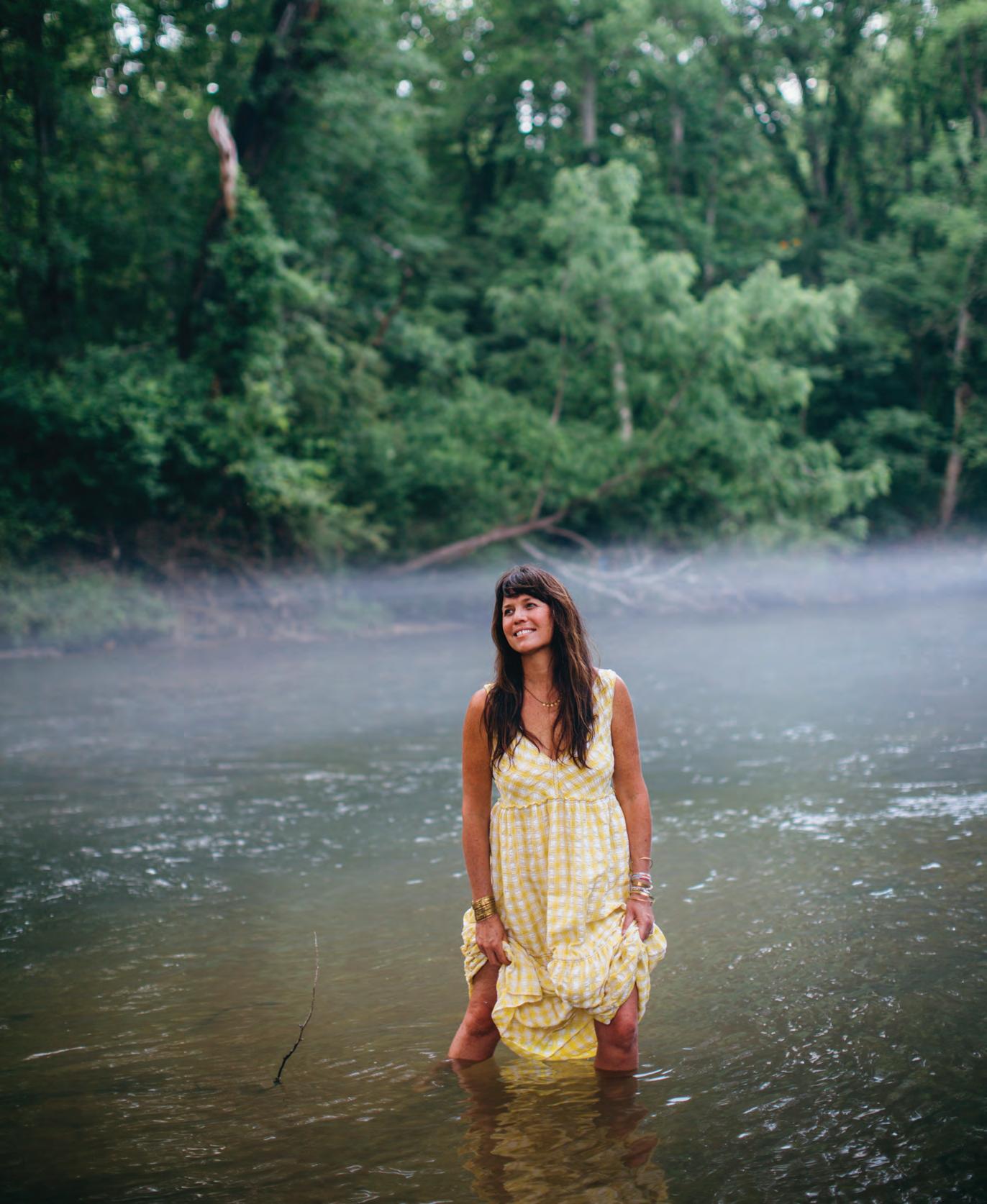

SHANNON WHITWORTH

I am standing knee-deep in the French Broad River as a low mist drifts in. It’s a warm June afternoon and sunlight streams through the sycamores, yet this odd precipitation slides along the riverbank, collecting in its eddies and angles. Shannon points upriver where it hovers over the water in a narrow wisp, a spectral shadow of the river below. “Look at that,” she says. “If it was a note, it would be something strong and hopeful. It would be a major key.” She hums a single note as tiny fish nibble my toes.
STORY AND PHOTOGRAPHS BY HAILEY WIST
When I first meet Shannon Whitworth at the FLOW Gallery + Workshop at Palmetto Bluff, she is deep in conversation with a buyer. They have moved past art and are talking relationships and heartache. Shannon is like that. It’s as if her heart is cracked open and on display. And people respond to it, spilling secrets they didn’t know they had. Like Whitman and Dylan, the great artists that came before, Shannon contains multitudes. She has a big laugh. She loves dogs, mermaids, and chewing gum. She is a mother and a wife. In all these things she is accessible and warm, empathic even. But Shannon is also a gale force. With a potent and expansive energy she has created an auspicious career in art and music. Her paintings are featured in galleries and collections across the country. She has released three solo albums, a duets album, and two albums with the bluegrass band The Biscuit Burners. Her dual love of art and music has been dazzling for decades.
Sitting in her studio in Brevard, North Carolina, I ask Shannon which came first, music or art, and she responds, “Professionally? Or cellularly?” Maybe that’s it—when you see Shannon’s paintings or listen to her music, it feels cellular. She has put her whole heart into her work, and somehow her paintings speak to that. It’s all integrated—
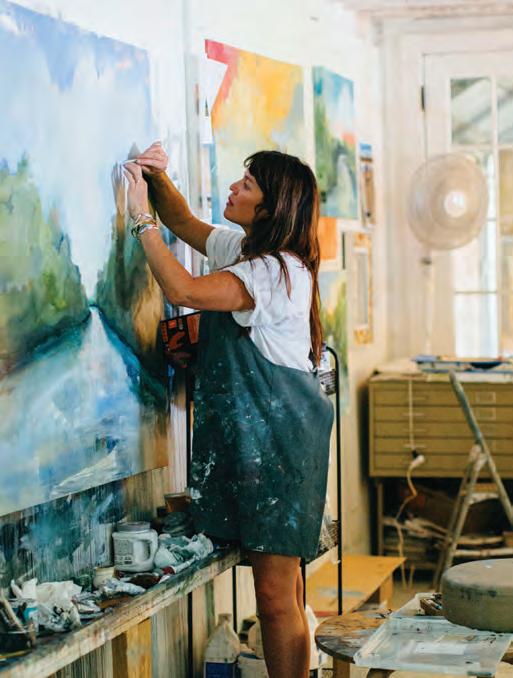
love mingles with family and poetry, music and nature. In her moody riverscapes there is a deep well of feeling. In her silhouettes of cowboys and medicine men there is the ghost of musical tradition, mysticism, and healing. Likewise, her music rides a wave of emotion, sometimes heartbreaking and sometimes exalting, her smoky voice shaping melody into something deeply personal.
Growing up in northern Virginia, Shannon was endlessly writing and drawing. Looking at the scope of her career, this instinct for music and art was forged in her childhood and teens. Even in her earliest memories, she was writing little poems and singing made-up melodies. In kindergarten she sang a Barbra Streisand song in a school talent show. She remembers the shock on her parents’ faces. “I was the third child and sort of camouflaged in with everybody. It was the first time they were like, Wow. I can’t believe you did that.”
In middle school her parents bought her an easel, and she rearranged her room around it to paint by the window. As a teenager Shannon filled notebook after notebook with poems and sketches. When her older brother’s girlfriend (now wife) brought over a guitar and taught her a few chords, her life changed forever. “That’s all I needed,” she says. “These books and books of poems, I could put them to melodies. It was like, Oh my God. I can communicate.”
It was also during this time that Shannon started spending summers on Hilton Head Island with her Grandma Nancy. Growing up with brothers, Shannon had always been a tomboy, a creative odd duck. Nancy was well traveled, sophisticated, and feminine, and their one-on-one time was like an initiation into womanhood. “I went down there playing with Barbie dolls, and I came back wearing a training bra,” Shannon laughs. She also
52 PALMETTOBLUFF.COM

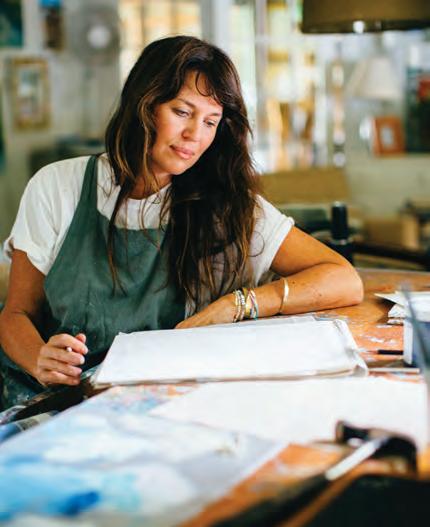
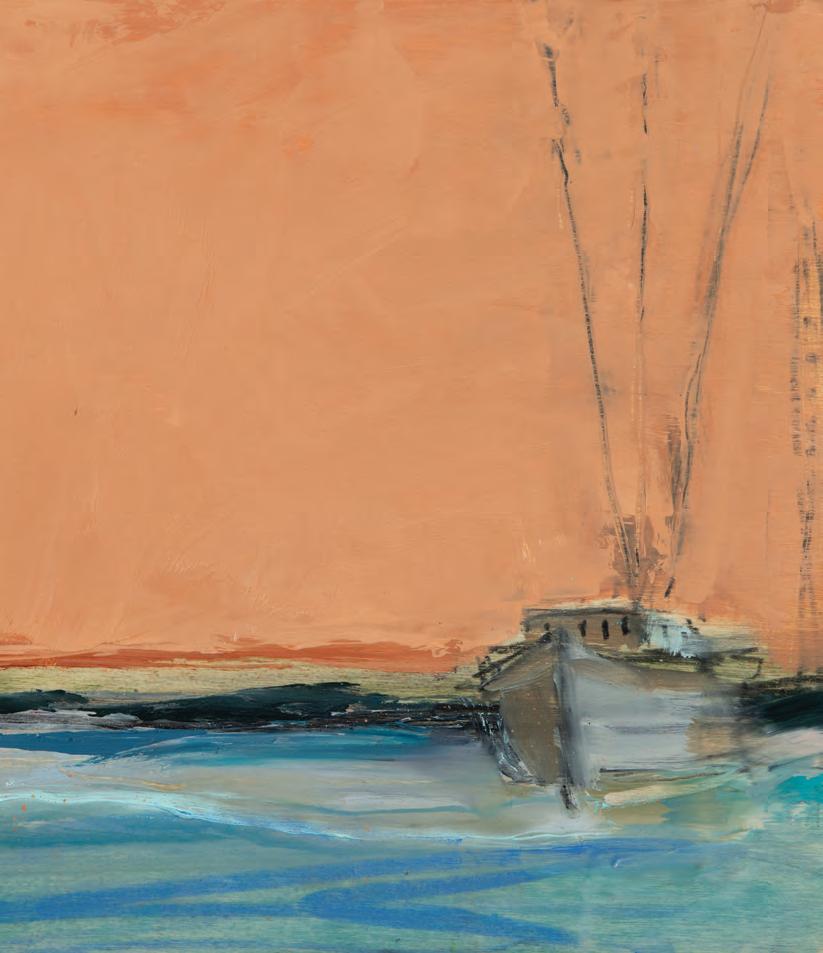

53FALL/WINTER 2022 LEFT: THE SEA BOUNTY | EXCERPT | 12X12 INCHES RIGHT : WINTER CREEK STUDY | 5X7 INCHES
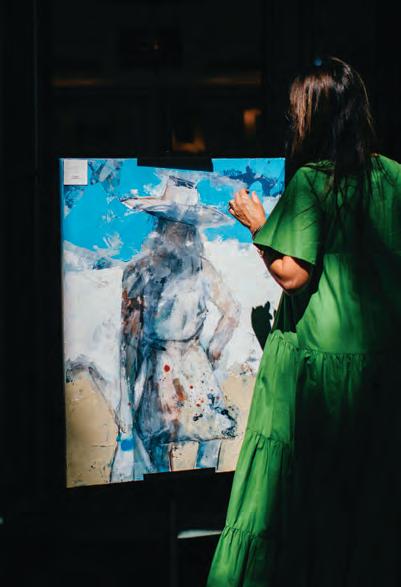
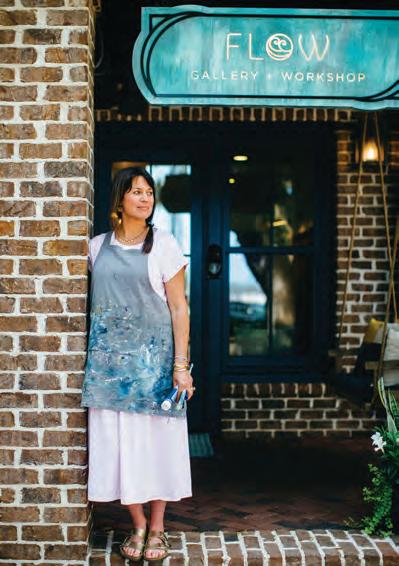

 PEACE LIKE A RIVER | EXCERPT | 12X16 INCHES
PEACE LIKE A RIVER | EXCERPT | 12X16 INCHES
54 PALMETTOBLUFF.COM
fell in love with the Lowcountry, the sultry summers. “Every day I got to watch the sun break through the clouds,” she says. “It’s in my DNA—the smells, the skies, the water.”
Her summers with Nancy were also musically formative. It was during her visits to Hilton Head that Shannon became acquainted with the classics—Frank Sinatra, Billie Holiday, and Julie London. “There were clock radios in every room playing WLOW 107.9 Classic Radio,” she remembers. “It created this amber buzz throughout the house.” The music, the setting, and the influence of Grandma Nancy, with her gold bangles and vodka martinis, expanded Shannon’s world, giving her the clay from which she’d mold her art and her music.
For the longest time, Shannon only played music by herself or with her two brothers. She tried new things, traveled. She worked on fishing boats and at a reservation in Arizona. She lived in the cook’s cabin of an old summer camp and taught art. But she was always, endlessly writing songs. When she moved to Brevard, Shannon fell in with a group of musicians including Woody Platt, her future husband and founding member of the Grammy-winning Steep Canyon Rangers.
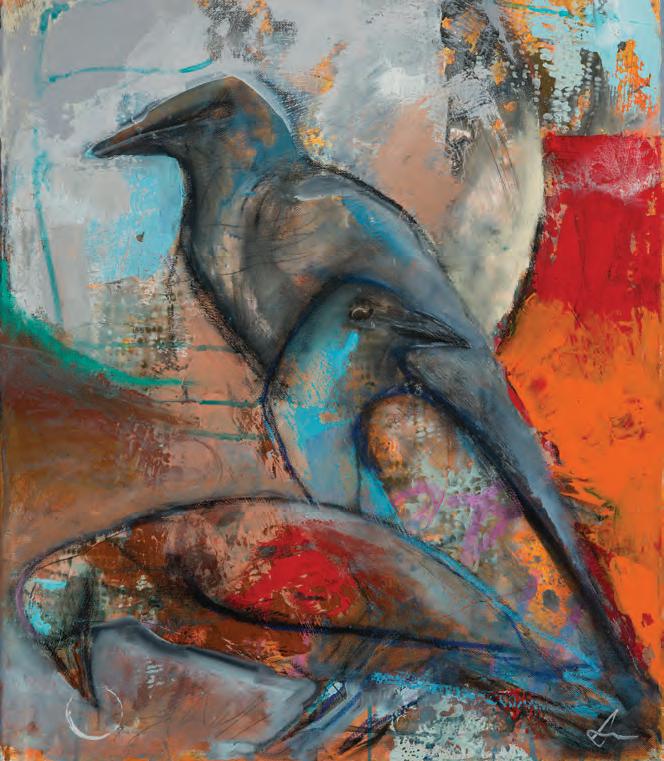
One fateful night at Jack of the Wood in Asheville, a friend coaxed Shannon onstage during a bluegrass jam, and for the first time Shannon played for a crowd. She played all night, in fact, jamming into the wee hours. “I felt like I had just met the love of my life,” she remembers. “I was giddy.”
After the all-nighter at Jack of the Wood, Shannon was asked to play with an all-girl bluegrass group, the band that would later become The Biscuit Burners. The chemistry was electric and Shannon remembers playing their first gig to a packed house. “I felt like I was levitating,” she says. The Biscuit Burners quickly spun
up from local gigs to national tours, and Shannon was catapulted into bluegrass fame. During her time with the band, The Biscuit Burners released two critically acclaimed albums. It was also during that time she and Woody fell in love. They were both touring constantly but moved into a little log cabin together in Brevard.
Woody and Shannon’s restored farmhouse is situated at the confluence of the French Broad River and its north and east forks. When I visit in June, Shannon tours me around in an old golf cart on mowed paths through headhigh grass and wildflowers. We make our way down to the river where she and Woody have restored their stretch of the bank. Where the water once rushed past and eroded the land, there is now a slow curve and a sloping sandbar. The trout have returned and Shannon tells me about fly fishing with Woody and friends in the shallow waters.
When she left The Biscuit Burners in 2006, Shannon released a series of solo albums and a duets album with
THREE SISTERS | 20X24 INCHES
55FALL/WINTER 2022
Steep Canyon Rangers bassist Barrett Smith. She toured with Chris Isaak, Tedeschi Trucks Band, and Raul Malo. She lived on the road and spent most weeks away from Woody. This breakneck whirlwind left little time for her other love. “When I was on tour, I always felt like I was cheating on my art,” she says. “I felt very imbalanced.” She’d sketch on the road and at home put paint to canvas. The “music man” series that has so captured her followers came out of this time.
Outside the FLOW Gallery + Workshop, I watch Shannon teach a painting workshop to a group of ladies. She moves between the easels, stopping occasionally to help solve a puzzle or suggest a brush. I am struck by how natural she is, so open and easy with her guidance and praise. Shannon isn’t holding onto or protecting anything, quite the opposite. She wants everyone to feel what she feels; she wants magic and love to flow from her paintings and out into the world.
In 2015 Shannon and Woody welcomed a baby boy into the world. Motherhood grounded Shannon, literally. She put a pause on music and put all her energy into Rivers and her art. When the pandemic swept the globe, Woody, Rivers, and Shannon were at home on the French Broad. It was a disorienting time, to say the least. A friend
encouraged her to post her paintings on Instagram, and when she did, the series sold out in a day. Her paintings started selling in galleries and online. “I never wanted to self-promote,” she tells me. “But it was crazy. All of a sudden my paintings started selling.” Since then, Shannon has been prolific.
On her final night at Palmetto Bluff, Shannon is joined by Woody and Rivers. It’s a clear spring evening, and the lawn next to Cole’s is spangled with picnic blankets and lawn chairs. Shannon and Woody stroll over to the bluff to tune their instruments and check in. Until now I’ve only ever seen Shannon as an artist, and it is a thrill to see her settle down behind the microphone and dazzle the audience out loud. She and Woody play You Are in Love with Me from her most recent album, and you can feel the effect on the crowd.

Back in her studio in Brevard, we talk about family, about motherhood and the joy of raising Rivers, now six. Lately Shannon has been painting a lot of landscapes, especially the wide expanses of the Carolina Lowcountry from her summers with Nancy. “I never thought landscapes were my thing. I want to be open to go anywhere, but landscapes are a way of journaling. It’s like a heart map, where you’ve been and where you want to go.” I’m aware that I’m catching Shannon in a mere moment of her character arc. It seems that up to this point she has truly operated on instinct, following her nose to the next right thing. “Everything has been through feeling, with my eyes closed, just by touch,” she confirms. It’s all there in her paintings—unalloyed truth.
FOR MORE INFORMATION ON SHANNON WHITWORTH, STOP BY FLOW GALLERY + WORKSHOP IN WILSON VILLAGE OR VISIT FLOWPALMETTOBLUFF.COM
RIGHT: SHANNON ONSTAGE AT MORELAND CROSSROADS WITH HER HUSBAND, WOODY PLATT
56 PALMETTOBLUFF.COM
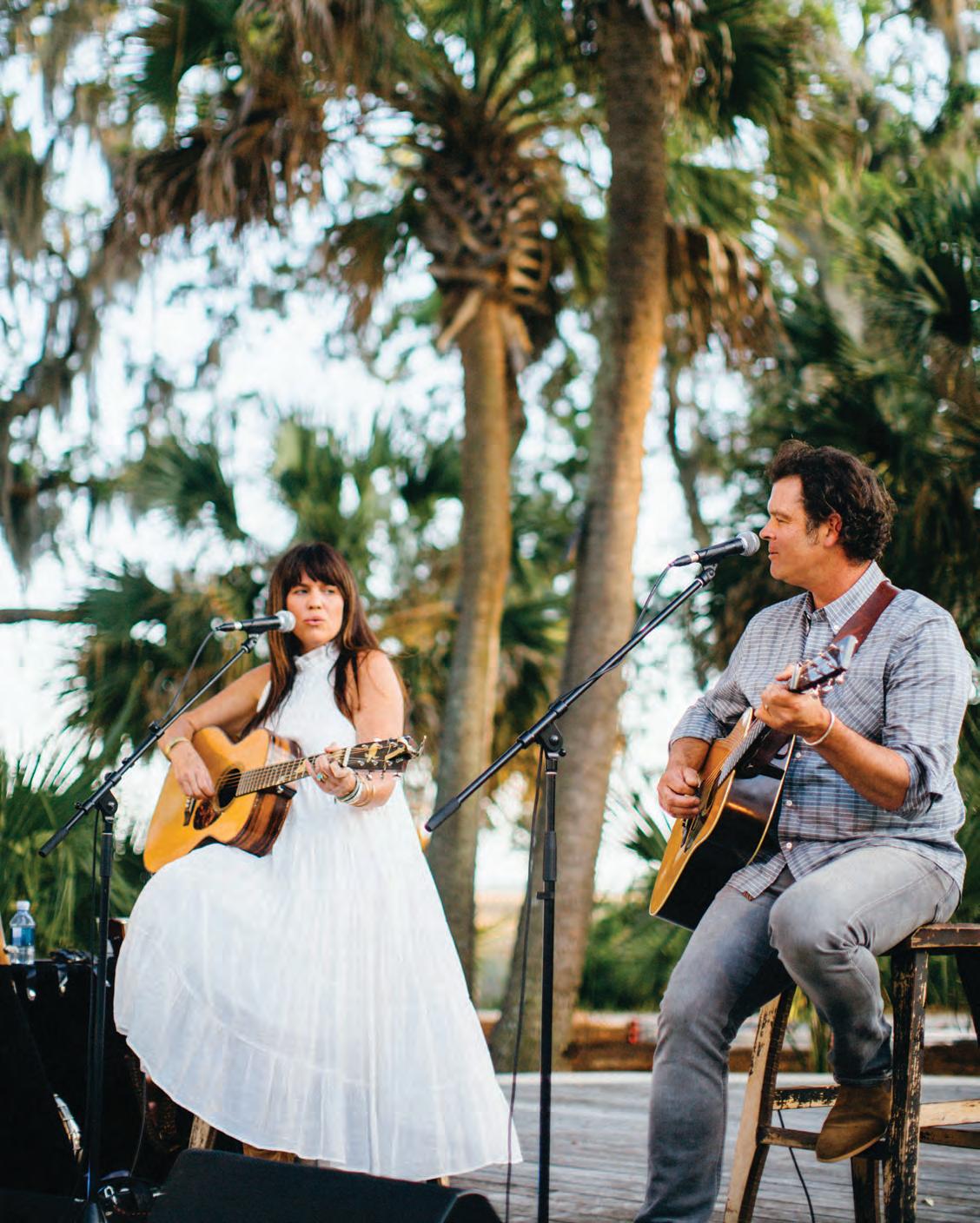
57FALL/WINTER 2022
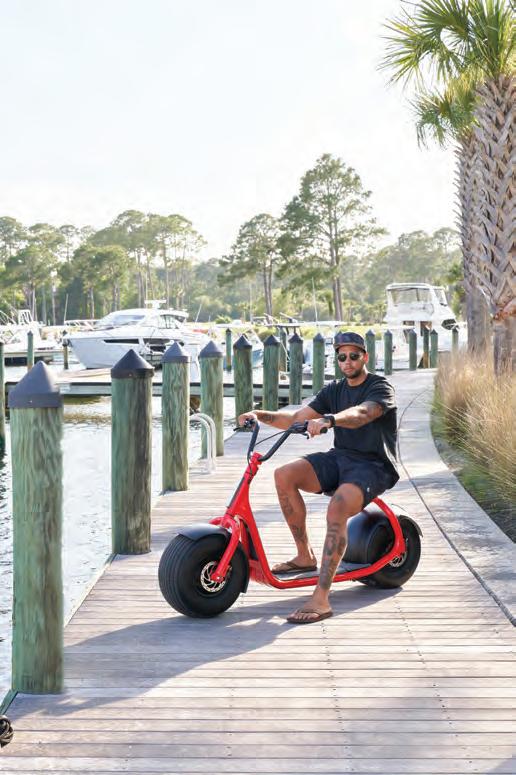
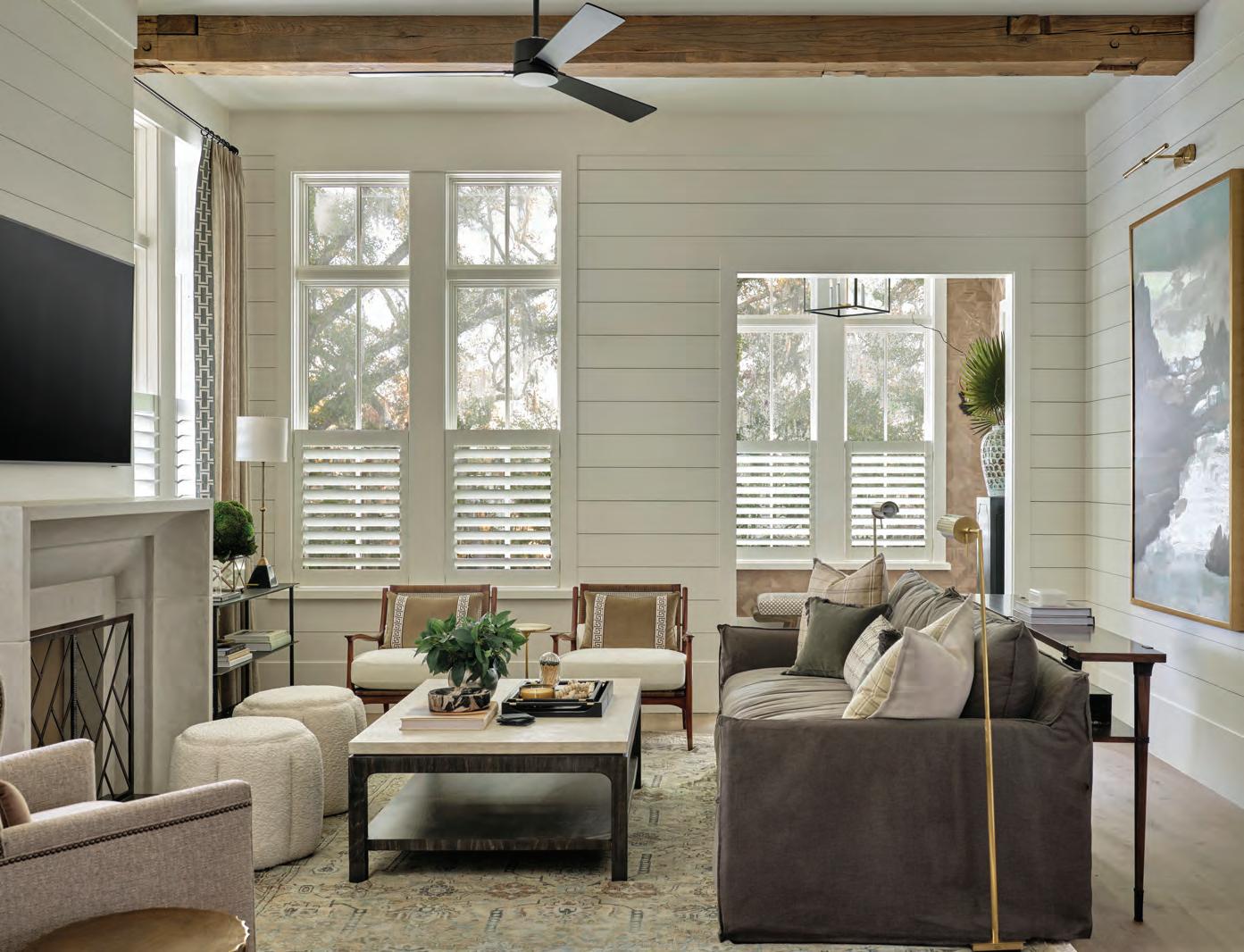

THE PROMENADE | BLUFFTON, SC | 843.757.2529 | www.ksmid.com | ksmcroriedesign
Around Town, on the Water, and on the Golf Course
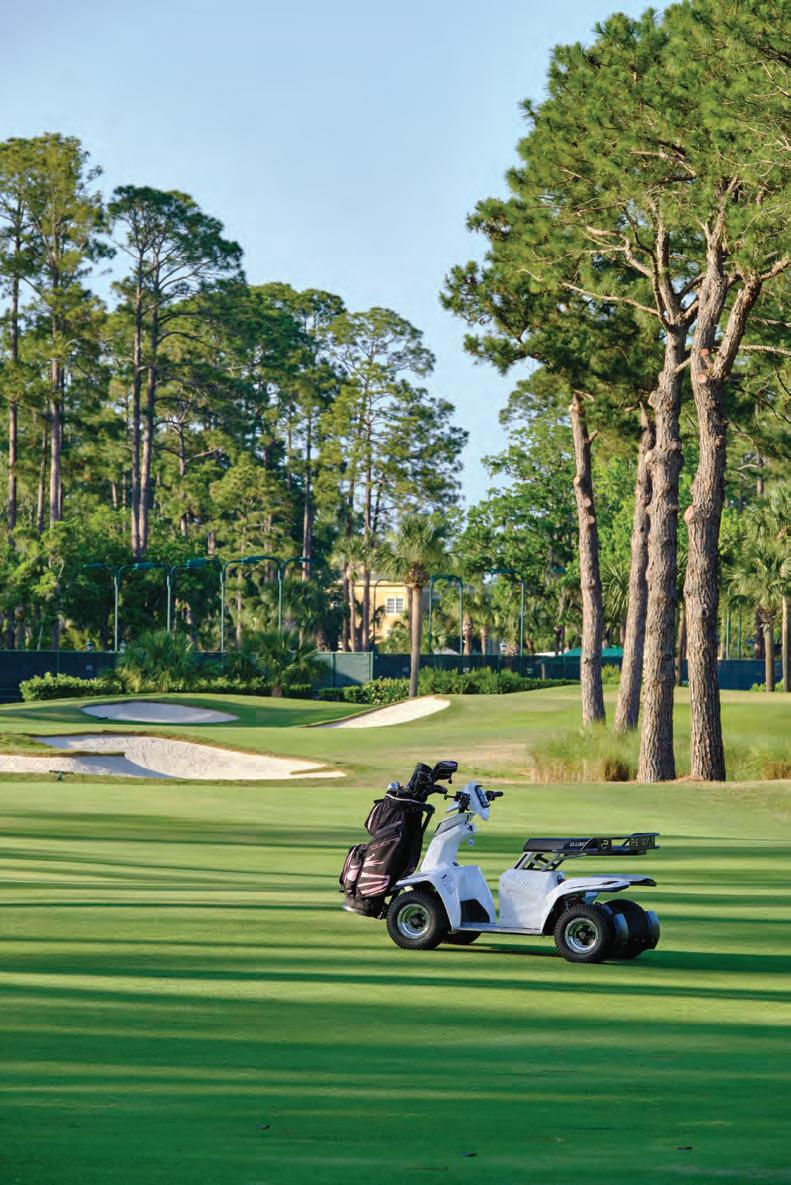
There are few places more perfect than Palmetto Blu ’s 20,000 acres and 32 miles of riverfront to enjoy an electric recreational vehicle. Leisurely cruise to the pool, your friend's house, or one of the Blu 's unforgettable social gatherings in a Moke LSV. Looking for the perfect vehicle to run errands, bring to college or take on vacation? The street legal KAASpeed electric moped is lightweight and easily transports on any SUV or motor home. Surf without waves on the May River and explore the marsh creeks in virtual silence on a Radinn electric jet board. Don’t forget your golf game with an impeccably crafted Ellwee golf cart. Carolina Rides has searched the globe to bring you electric vehicles that will enrich your life and electrify fun.


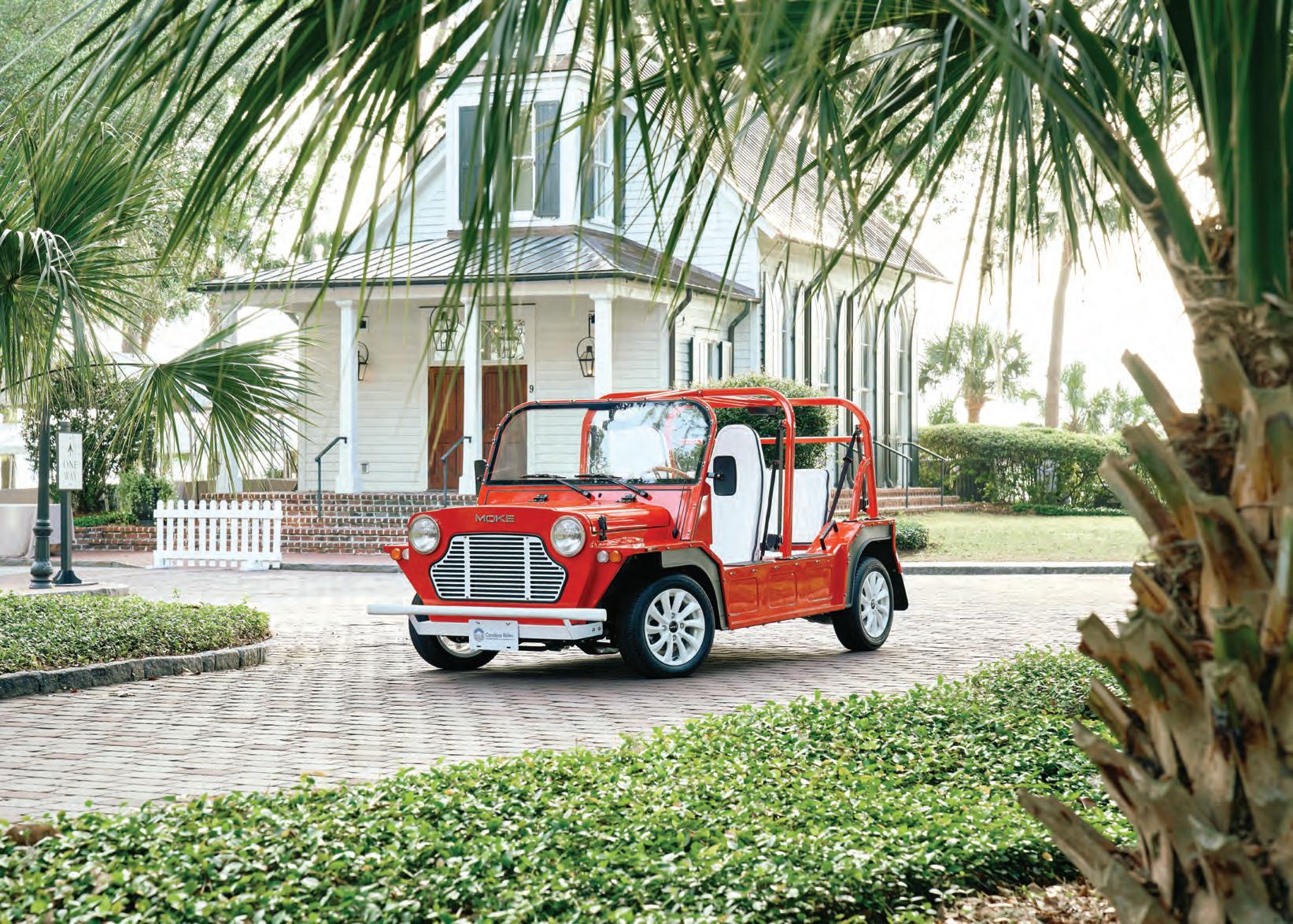

KAASPEED SCOOTERS
Learn about our vehicles at carolinarides.com or call 844
RADINN JETBOARDS
ELLWEE GOLF CARTS
Scan Me

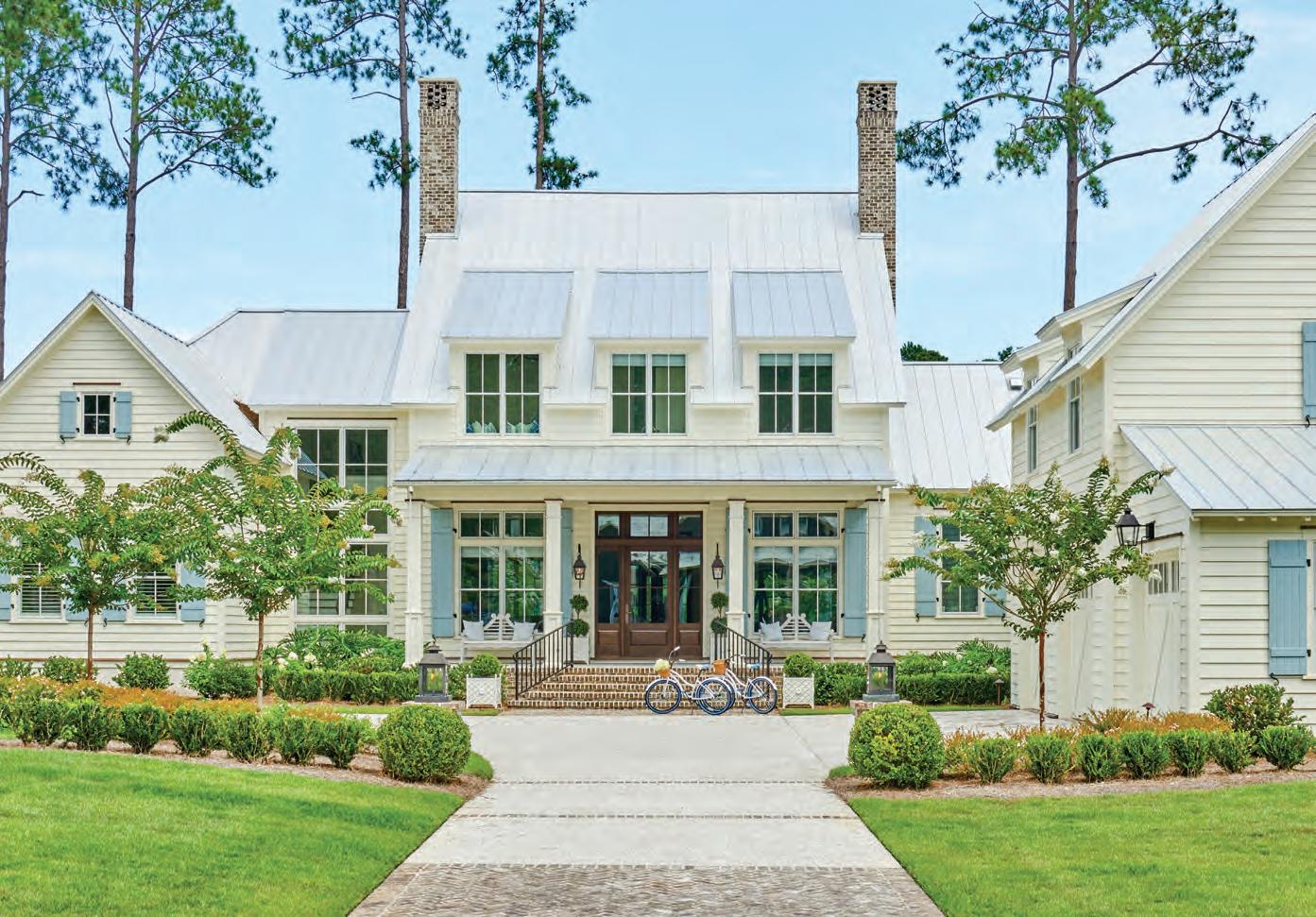
Constructing Elements of Inspiration. ELEMENTCP.COM | 843.837.9300 29 PLANTATION PARK DR, SUITE 404 | BLUFFTON, SC 29910


Stephen Scott Young Tender Touch Dry Brush 15" x 15" STEPHEN SCOTT YOUNG Celebrating Over 50 Years of Fine Art in the Lowcountry. 40 Calhoun Street • Suite 201 • Old Town Bluffton 843.842.4433 • 843.247.2049 • redpianoartgallery.com The Red Piano Art Gallery
Specializing in American Fine Art
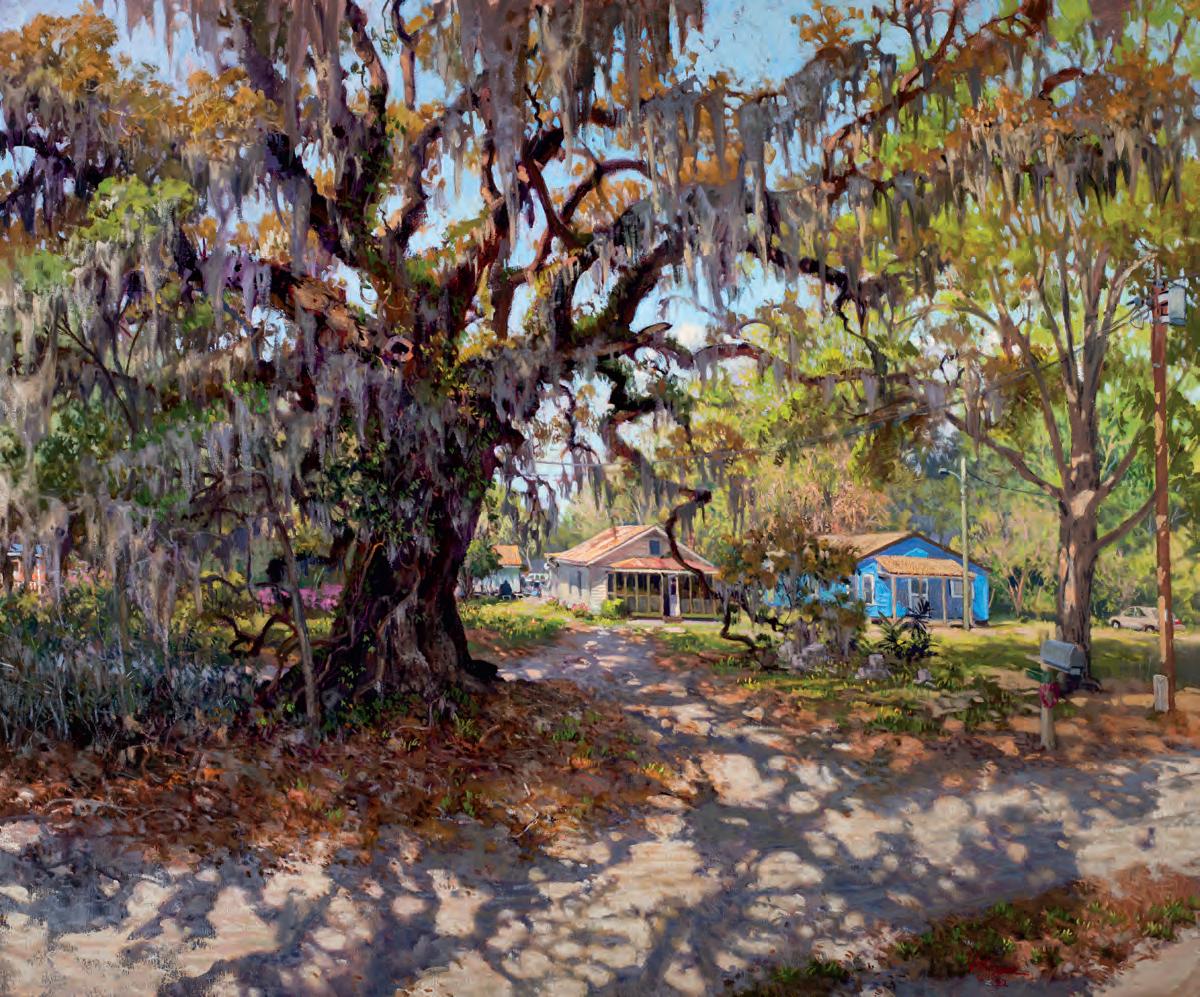 Poison I-I-Ivey by West Fraser, 40 x 48 inches, Oil on linen
Poison I-I-Ivey by West Fraser, 40 x 48 inches, Oil on linen
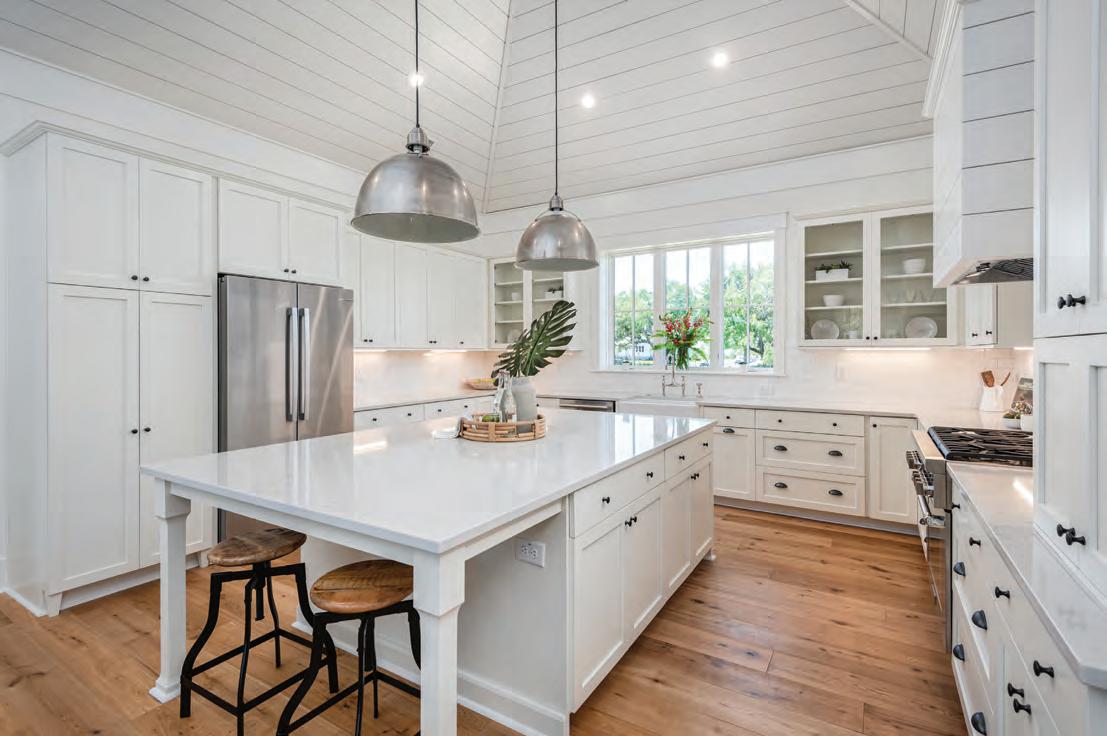



THE DIFFERENCE BETWEEN A HOUSE AND A HOME 843.501.0901 discoverartisanhomes.com
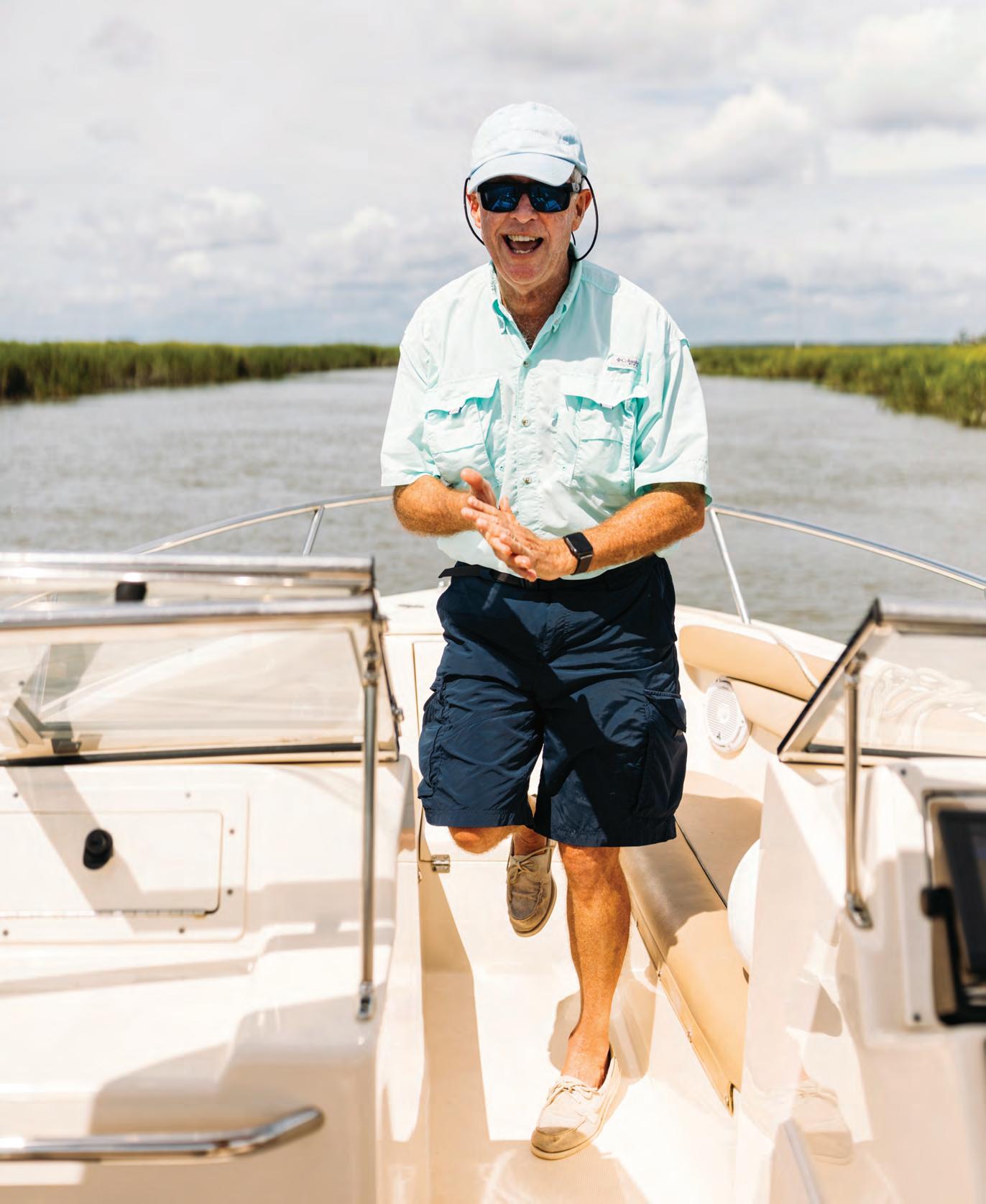
A DAY WITH
Mr. Palmetto Bluff
STORY and PHOTOGRAPHS by HAILEY WIST
I meet Bob Newbert at Wilson Landing on a humid morning in late July. The day is already blindingly bright, and we are both slathered in sunscreen. Bob has organized a full schedule for the day, and I fall into step as he strides off down the dock.
I heard of Bob months before in an editorial meeting. Around Wilson Village he’s known as “Mr. Palmetto Bluff,” a kind of paragon retiree with a wild enthusiasm for all things Lowcountry. Since his retirement in 2009, Bob has thrown himself into a multitude of hobbies. He took shooting lessons, learned how to shrimp, and got his US Coast Guard Master Captain license. He has perfected the Lowcountry boil, hunted marsh hen, and learned the intricate maze of tidal creeks in a 100-mile radius of the Bluff. He has educated himself on local history and ecology and now leads excursions for organizations like the Boys and Girls Club, even devising itineraries for the Wilson Landing Boat Club. And let me tell you, Bob Newbert is having the time of his life.
Our first item on the itinerary is a boat tour along the May River. Bob is an expert at the helm, and we careen through narrow waterways, speeding past wild islands and stopping occasionally at predetermined locations for a funny anecdote or quick history lesson. He tells me all the early lore about Alfred Lee Loomis (who once owned a significant portion of Hilton Head Island) and the menagerie on Bull Island. He explains the oystering industry, the anatomy of a brown pelican, the origins of
Pat Conroy’s The Water is Wide. Bob is like a well-oiled machine, and his stories are infused with an infectious enthusiasm for the area, its people, and its rich cultural heritage. Emblazoned across his ball cap, in fact, is: “Captain Bob’s Lowcountry Tours,” a tongue-in-cheek Father’s Day gift from his daughter along with a matching t-shirt and windbreaker.
As the sun reaches its apex, we motor into a small tidal creek and drop anchor for lunch. This is one of Bob’s favorite “hidden happy hour” spots to take friends. “We pull in here and break out a bottle of wine and a cheese board. It’s great fun.” He has packed us chicken salad sandwiches and peaches, and we sit chatting over lunch. “All I did was work,” he tells me. For thirty years, Bob

65FALL/WINTER 2022
CRABBING

BOB TEARS OPEN A FOUR-PACK OF TURKEY NECKS AND PLACES EACH AT THE CENTER OF HIS TRAPS. I USED TO USE STRING TO TIE THEM ON, BUT THE CRABS WOULD BITE THROUGH IT AND TAKE OFF WITH MY TURKEY NECKS. HE USES THICK ZIP TIES TO SECURE THE MEAT TO THE METAL BASKETS AND THEN LOWERS THEM HAND OVER HAND INTO THE SHALLOW WATER BELOW THE DOCK. NOW NORMALLY THIS IS A SOCIAL ACTIVITY. WE’D CRACK A COUPLE BEERS AND SET UP SOME BEACH CHAIRS IN THE SHADE, CHECKING OUR TRAPS EVERY SO OFTEN. IT’S GREAT FUN.
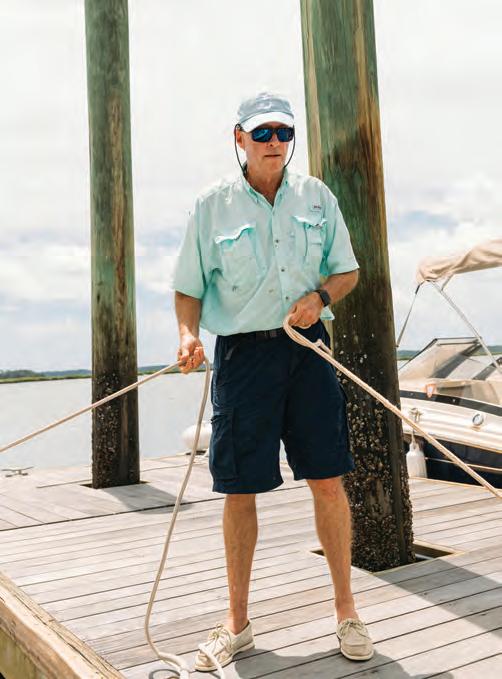
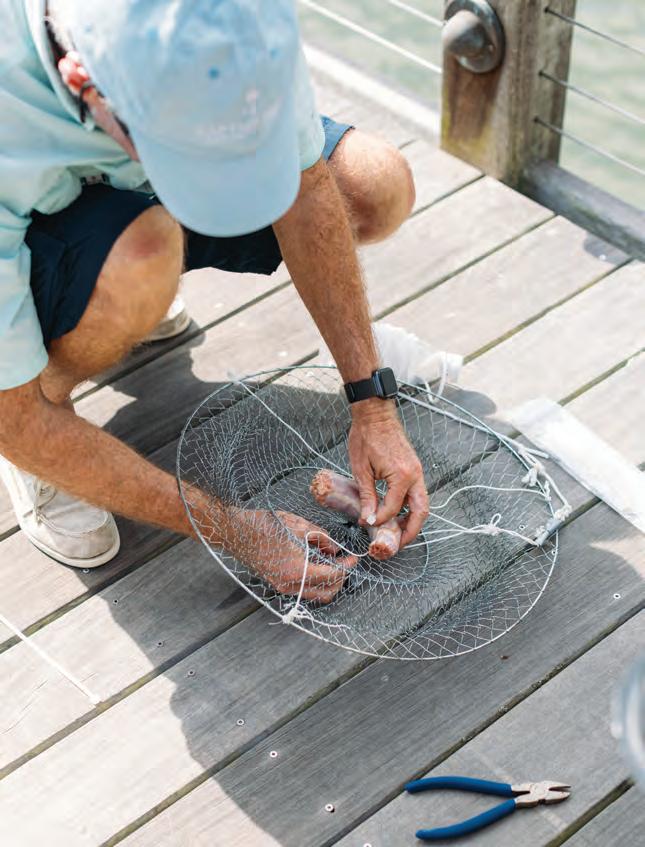
66 PALMETTOBLUFF.COM
SHRIMPING
WE’RE BOBBING AROUND ON THE MAY RIVER OVER A SHRIMP HOLE, A DROP-IN DEPTH WHERE BOB TELLS ME THE SHRIMP HANG OUT. ALL OF THE SHRIMPERS HAVE THEIR FAVORITE HOLES. HE PULLS A BRIGHT GREEN CAST NET FROM HIS BUCKET AND STARTS TO SORT THE WEIGHTS, ARRANGING THE NET JUST SO BEFORE HE CLIMBS UP TO THE BOW AND FLINGS IT OVERBOARD. IT’S LIKE A TREASURE HUNT EVERY TIME! THE NET IS ATTACHED TO A LINE THAT TAKES IT TWENTY FEET DEEP. AFTER A LONG PAUSE, HE STARTS TO HAUL IT BACK UP TO THE BOAT. WE’RE A LITTLE EARLY IN THE SEASON, AND THE NET COMES UP EMPTY. BETTER LUCK NEXT TIME!


67FALL/WINTER 2022
SPORTING CLAYS
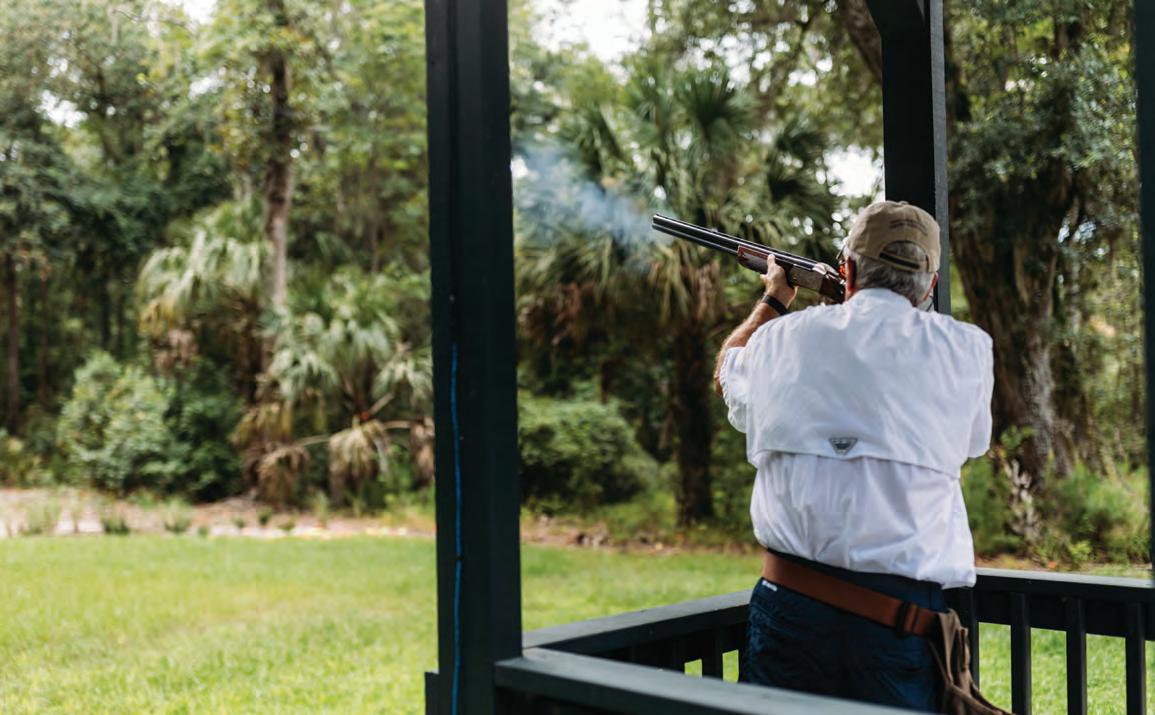
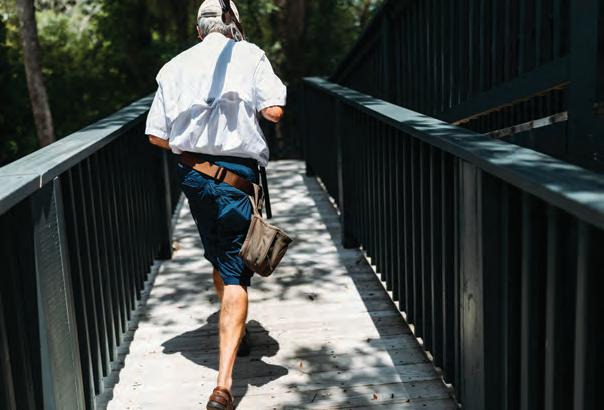
THE FORMAT IS NOT SO DISSIMILAR TO A GAME OF GOLF. AT EACH STATION BOB INSERTS A MEMBER CARD INTO A CARD READER THAT ACTIVATES THE FIELD. I TRIGGER THE TRAPS WHEN BOB YELLS “PULL!” AND THE CLAYS FLING INTO THE AIR AT VARYING SPEEDS, DISTANCES, AND PATTERNS, SIMULATING THE UNPREDICTABILITY OF LIVE GAME. BOB TEACHES ME THE SHORTHAND OF SHOOTING CLAYS: THE DEFINITION OF A TRUE PAIR VERSUS A REPORT PAIR, THE ETIQUETTE WITHIN A SHOOTING SQUAD, THE SPECIAL LEATHER TAB ATTACHED TO HIS SHOE SO THAT HE CAN REST HIS GUN WITHOUT WEARING THROUGH THE LEATHER.
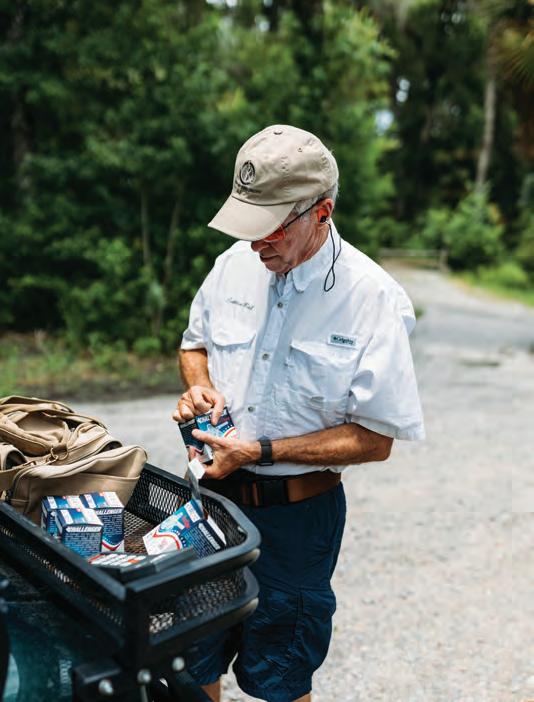
68 PALMETTOBLUFF.COM
owned a high-profile ad agency in Providence, Rhode Island. He was the quintessential “suit” and dedicated all his time and energy to his career. I wonder aloud if he pre-planned retirement and all the hobbies he would take up. He laughs in disbelief. “No! All I thought about was work!” It’s not that he didn’t have a vibrant life during his working years—quite the opposite. He was founder, chairman, trustee, and board member to a long list of organizations, associations, and institutions. He and his wife, Mary-Jane, supported the arts, educational programs, and conservation efforts. The enthusiasm was always there, but he was never really out in it. Retirement, he tells me, gave him the opportunity to reinvent himself. And Palmetto Bluff was his proving ground.
The tide is swiftly receding so we pull anchor and head for Wilson Landing. Bob wants to show me how to shrimp, and we need to switch to a different boat. As the warm air whips past, I ask Bob if he’s ever been stranded in a tidal creek at low tide and he laughs. “Oh yes!” he shouts over the roar of the wind, “I won’t lie about that!”
What I like about Bob is his complete lack of cynicism or pretension. He’s quick to laugh, ready to learn. Over lunch I had marveled at the sheer energy required to learn and maintain these sundry hobbies. He told me that his grandfather, upon retirement, sat down in a rocking chair and never really got up. “He got old so quickly,” he
remembers. “I’m out doing things all the time, and it just keeps me energized.” True to form, we land at Wilson Dock and Bob springs from the boat, unloading our gear before I even have my shoes on.
After a midday break, I meet Bob at the Palmetto Bluff Shooting Club for a lesson on sporting clays. We climb into a golf cart with special gun racks and head into the forest. I’m struck by the sheer beauty of the landscape, massive oak species and a lush understory make up a dense, Jungle Book-like setting. The course is massive, boasting thirteen stations and a state-of-theart five-stand station and a wobble deck. We start at the five-stand, and Bob teaches me how to load and shoot, his voice muffled through my ear plugs. I discharge five or six fruitless rounds into the woods. We switch places and Bob settles into position. “Pull!” I trigger the trap and he fires, blowing the clay to smithereens.
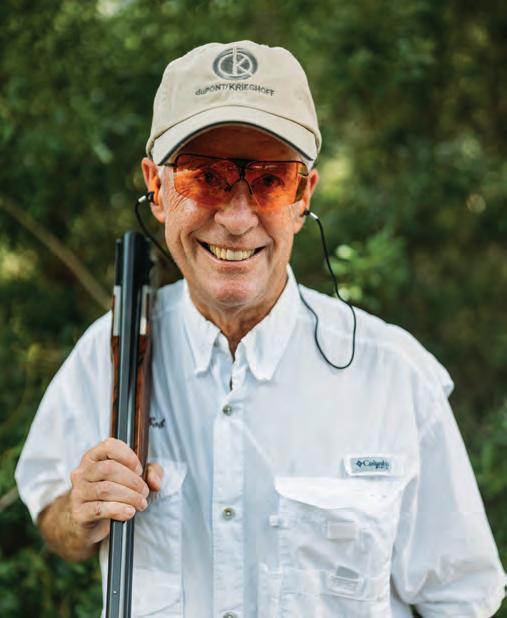
Like boating, shooting is only a recent passion. “I didn’t even know which end of the shotgun to shoot from,” he tells me. “I was a complete novice.” But he took lessons and joined regular shooting groups. Now he is an excellent shot. He misses nary a clay during our hour tour of the course. He has also fallen in with the robust local shooting community. He is invited to seasonal duck hunts and pheasant shoots on neighboring plantations and has joined a few shooting clubs outside Palmetto Bluff. He has learned to shoot marsh hens, a local rail species that hides in the spartina grass around the Bluff. (He always eats what he kills but jokes about the marsh hen. “You know the best recipe for marsh hen?” A sly smile. “Pluck the feathers off the bird. Throw away the bird. Eat the feathers.”) In short, he’s all in. Shooting has become something he’s not only passionate about, but also really, really good at.
We say goodbye as the sky starts to darken, the fat thunderheads of a summer deluge rolling in. Bob promises to introduce me to his daughter, Marcia, and I promise to bring my husband down for a shoot. I pull onto Highlander Road, toward home, feeling a strange buoyancy. A day with Bob has reminded me of the importance of play, of learning for the sheer joy of it.
69FALL/WINTER 2022
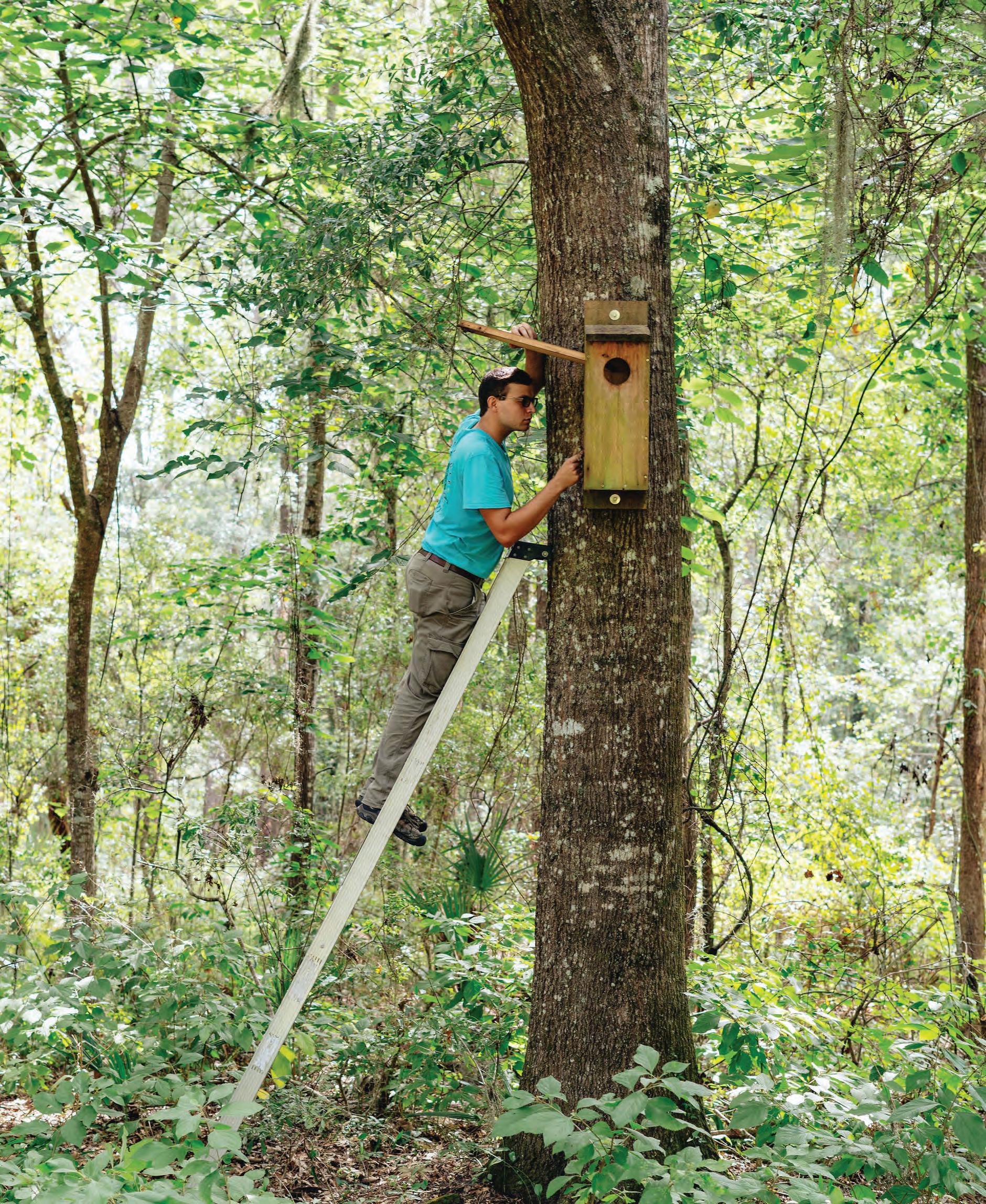

Stewarding This Great LAND
STEWARDSHIP: THE ART OF TAKING CARE OF SOMETHING, SUCH AS AN ORGANIZATION OR PROPERTY
The simplicity of this definition belies its importance. The Palmetto Bluff Conservancy is the safeguard of this land. We are the voice for native inhabitants who live here and deserve to flourish. We are the voice for the ghosts of Palmetto Bluff’s past, generations of families who carved out a place to call home beneath the live oaks and longleaf pines. We are dedicated to the planning, protection, and management of land, water, wetlands, open space, ecosystems, and archaeological sites contained therein for the benefit of present and future generations.
STORY by JAY WALEA
PHOTOGRAPHS by CAMERON WILDER
PREVIOUS: AARON PALMIERI SURVEYS ONE OF THE CAVITY NEST BOXES PLACED THROUGHOUT PALMETTO BLUFF. TOP LEFT: JUSTIN HARDY INSPECTS CHUFA GROWTH IN ONE OF THE CONSERVANCY FOOD PLOTS. TOP RIGHT: BRIAN BYRNE MOWS

GRASSES AND WEEDS THAT ARE TRYING TO OUTCOMPETE CROPS PLANTED FOR WILDLIFE. BOTTOM: AARON PALMIERI, BRIAN BYRNE, JAY WALEA, AND JUSTIN HARDY OF THE PALMETTO BLUFF CONSERVANCY

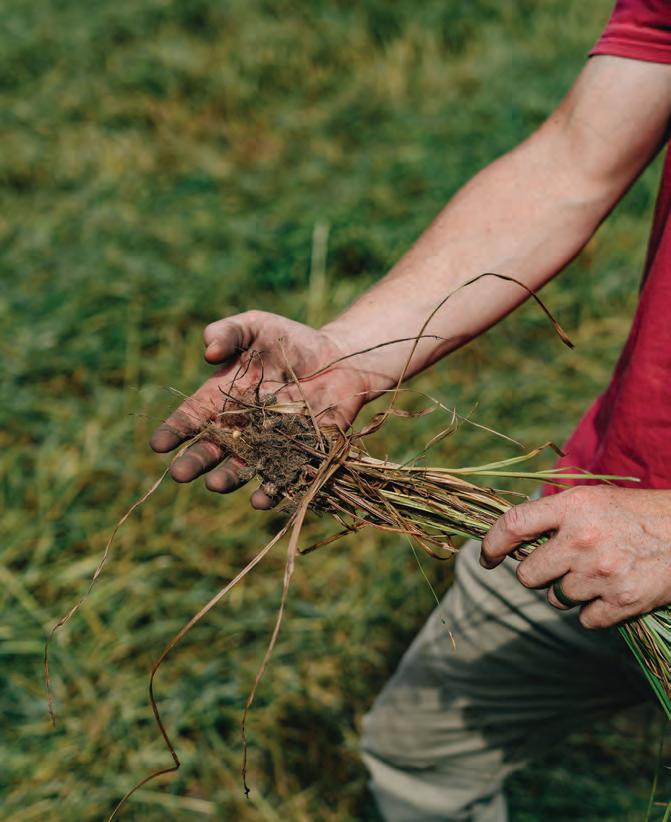
72 PALMETTOBLUFF.COM
IT ALL BEGINS WITH THE LAND
This quote was made locally famous by Jim Mozley, the original land planner for the Palmetto Bluff we know today. Mozley was a visionary. He knew that conservation could actually be a cornerstone of successful development, that developmental restraint could enhance property value. Fast-forward twenty-two years and we have proven it. It is vital that land and wildlife are integrated and part of our community and cultural heritage. The Conservancy’s four pillars uphold this mission statement.
LAND MANAGEMENT
Our land and wildlife team is tasked with a robust wildlife and forestry management program here at Palmetto Bluff. We manage strictly for the eastern wild turkey, an umbrella species, which indirectly protects the larger ecological community on the property. We use seasonal food plots to provide supplemental feed for wildlife. Springtime plots include protein-rich plants to ensure that mammals and birds have enough protein to support their young. The fall planting is all about carbohydrates and sugars with big leafy greens and clovers. This is to ensure the species feeding from these plots have enough carbohydrates to sleep well on cold nights. Good sleep aids good health! We encourage a healthy insect population by letting wild forbs grow. These weeds are good for wildlife, pollinators, and soil quality.
Prescribed fire is our best practice for land and wildlife management. The Conservancy burns over two thousand acres a year to enhance the health of our wildlife and timber stands. Controlled burns exponentially raise the carrying capacity of the land (how much of any given species the land can sustain healthily) and promote new growth beneficial to all wildlife. What’s more, seasonal fires remove hardwood competition, providing the majestic overstory tree species with natural fertilizer in the form of ash. Fire also protects our residents. Controlled burns remove excess fuel from the forest floor and render wildfires from a lit cigarette or lightning
strike entirely tractable. Our land and wildlife crew takes great pride in manipulating these fields and forests in the name of true conservation. And we believe that conservation is maximizing, but also utilizing, our natural resources.
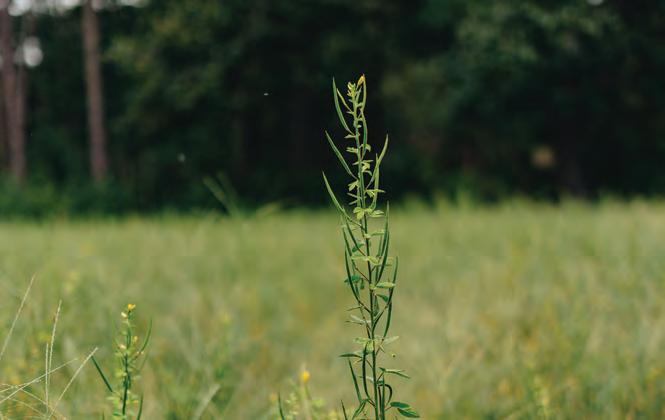
HISTORY AND ARCHAEOLOGY
Not all of our resources are biological. The Conservancy is also the guardian of Palmetto Bluff’s historic and prehistoric sites. Typical developers hire a firm to complete shovel tests and excavate any found sites. Reports are often completed after development has commenced. The Conservancy knew early on that this status quo was not comprehensive enough. We wanted to tell the stories of Palmetto Bluff from start to finish. Our dedicated archaeologists create reports from each and every building site. Once a site is cataloged, it is turned into the State to ensure the protection of artifacts in perpetuity. Dr. Mary Socci and her team have spent countless hours researching the vast history of Palmetto Bluff to ensure that these narratives will not be lost. These archaeologists have restored cemeteries, excavated countless historic buildings, identified and cataloged prehistoric artifacts. They have an amazing following, both resident and public, and conduct lectures, field trips, and informational hikes. Every year, their knowledge of this place expands.
73FALL/WINTER 2022
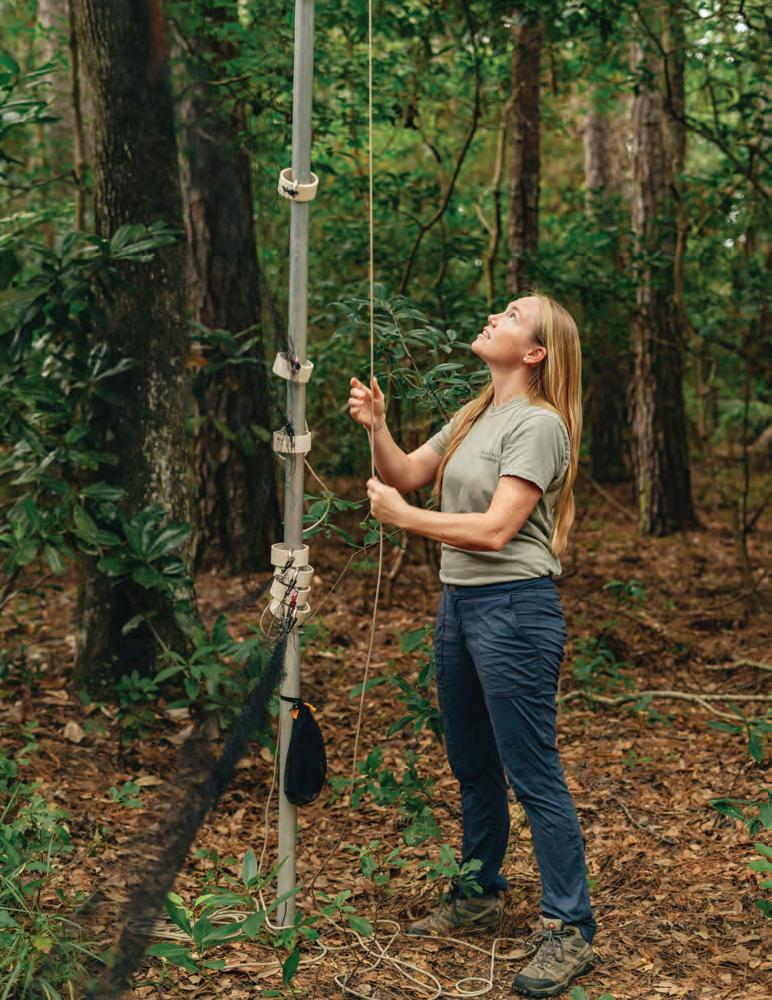
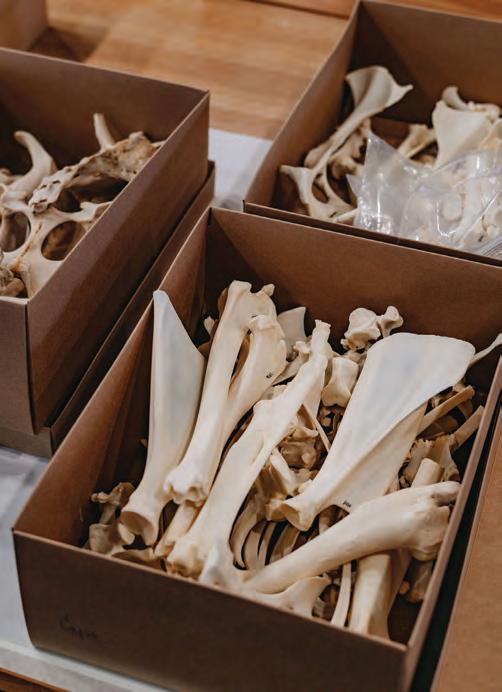
 TOP RIGHT: DR. MARY SOCCI, ARCHAEOLOGIST, IN FRONT OF THE WILSON RUINS. BOTTOM LEFT: LYDIA MOORE, RESEARCH & EDUCATION COORDINATOR, HOISTING A MIST NET IN RIVER ROAD PRESERVE FOR BAT RESEARCH. BOTTOM RIGHT: ANIMAL BONES USED FOR IDENTIFYING BONE FRAGMENTS FOUND AT ARCHAEOLOGICAL DIGS.
TOP RIGHT: DR. MARY SOCCI, ARCHAEOLOGIST, IN FRONT OF THE WILSON RUINS. BOTTOM LEFT: LYDIA MOORE, RESEARCH & EDUCATION COORDINATOR, HOISTING A MIST NET IN RIVER ROAD PRESERVE FOR BAT RESEARCH. BOTTOM RIGHT: ANIMAL BONES USED FOR IDENTIFYING BONE FRAGMENTS FOUND AT ARCHAEOLOGICAL DIGS.
74 PALMETTOBLUFF.COM
RESEARCH AND EDUCATION
As stewards of Palmetto Bluff, it is imperative to ensure that our resident species are not harmfully affected by land use. To do this, our researchers pay close attention to indicator species. An indicator species is affected first by habitat alterations and serves as a proxy to diagnose the health of the greater ecosystem. Our team spends countless hours on research projects, ranging from alligators to bluebirds. Currently our researchers are focused on bats of the coastal plain. While most of the national funding for bat research goes to endangered species, bats in the coastal plain are historically understudied. The Conservancy’s researchers have the flexibility to use their funding to study common species, like the Seminole bat, that are still found in abundance here at Palmetto Bluff. If this species is negatively affected in the future by development, disease, and/or climate change, we will have baseline documentation to share with the world (rather than beginning research once a species is in peril). This keeps us at the forefront in acquiring this knowledge and prevents the species from suffering.

OUTREACH AND EVENTS
Outreach integrates these pillars and provides the Palmetto Bluff community with a better understanding of our environment. The Conservancy is a conduit, instilling our residents with a love for the land, and we have over two hundred programs on our annual calendar. We bring local historians, authors, scientists, and educators to the Bluff to lecture on topics important to our cultural heritage, our unique ecosystem, and our way of life. We conduct hikes, tours, and field trips that highlight important habitats and endemic species. Our summer camps connect kids with nature at an early age, and our year-round programming is for all ages. We rely on this outreach and education to create passionate ambassadors for the Conservancy and for Palmetto Bluff.
TOP: DR. SOCCI HOLDING ONE OF THE THOUSANDS OF ARTIFACTS FOUND AT PALMETTO BLUFF DURING THE EXCAVATIONS. BOTTOM: JAY WALEA, EXECUTIVE DIRECTOR OF THE CONSERVANCY, HAS BEEN AT PALMETTO BLUFF FOR THIRTY-ONE YEARS.

75FALL/WINTER 2022
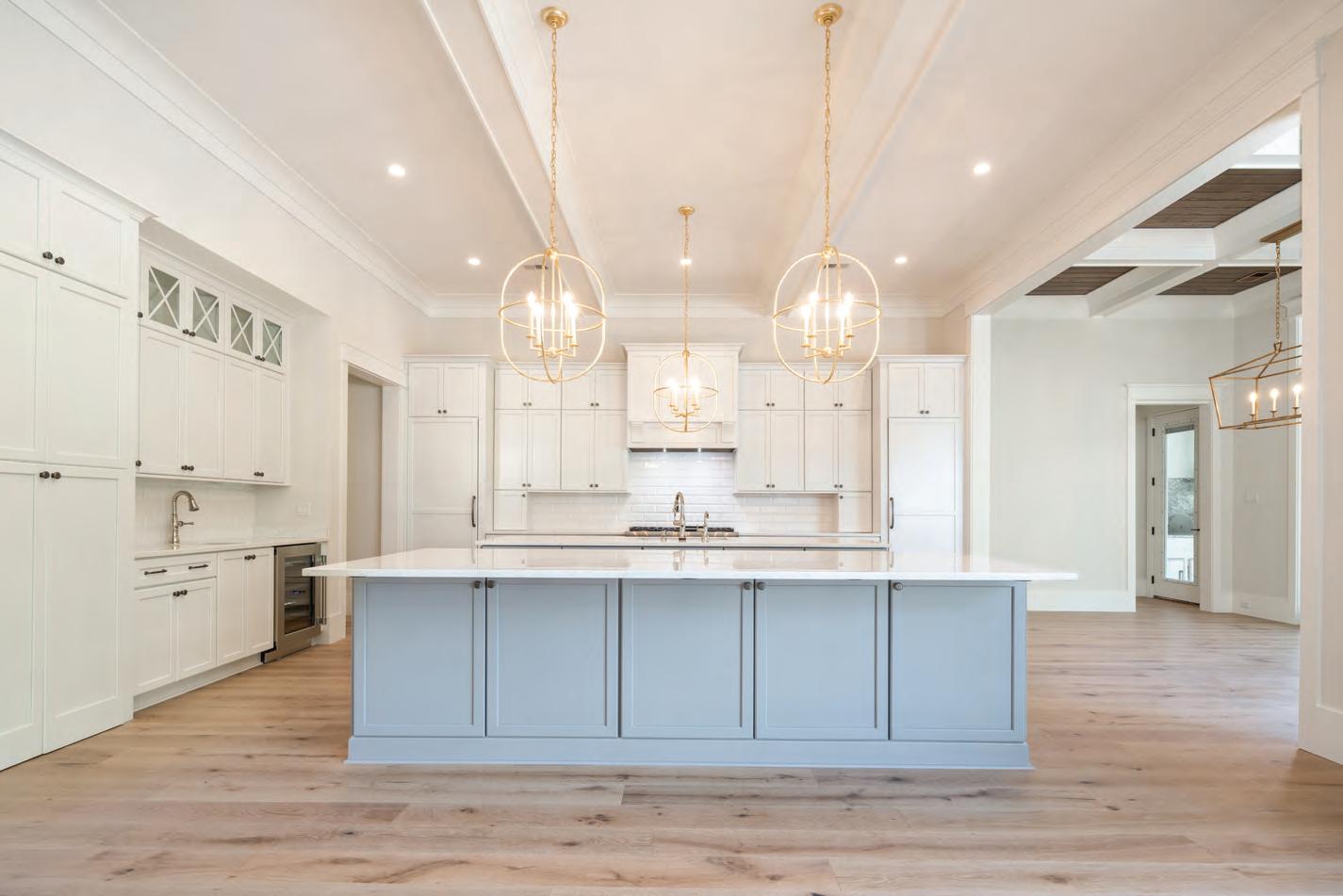



www.BillyWoodAppliance.com Proudly serving theLowcountry for 50 years Showroom Hours: M-F 8AM-5PM. Saturday by Appointment. 1223 May River Road Bluffton, SC 29910 843.707.2332 6 Marshland Road Hilton Head Island, SC 29926 843.681.8441 Exceptional appliances





































WELCOME H O M E (843)380-4800 @frontlightbuildingco.com ...For the holidays,...For joyous celebrations,&.For Tuesday pizza nights. F IND M ORE D ESIGN & B UILD I NSPIRATION AT F RONT L IGHT B UILDING C O . COM To Your New
THE BIRTH OF
GULLAH GEECHEE
LIFE IN THE LOWCOUNTRY IS SPECIAL. IT’S A GIFT OF MILD WEATHER, SPANISH MOSS WAVING IN A SUN-KISSED BREEZE, SERENE WATER VIEWS, AND SPECTACULAR SUNSETS. THE LOWCOUNTRY ENCOMPASSES ALL OF THESE THINGS AND SO MUCH MORE. ITS BEAUTY IS ONLY A BACKDROP TO ITS RICH CULTURAL HISTORY, ONE THAT MAKES LIFE HERE NOT JUST EXCEPTIONAL BUT ALSO STEEPED IN A UNIQUE PAST THAT PLAYED A SIGNIFICANT ROLE IN SHAPING OUR NATION.
Story by Luana M. Graves Sellars


History books may not say much about our area, but Beaufort County, specifically the towns of Bluffton and Hilton Head Island, had direct impacts on the years prior to and after the Civil War. As quiet as it’s kept, the area was pivotal to the foundational issues that lead the country to war, but also the ultimate trajectory and Union victory.
In addition to the vast wealth that Southern states, and particulary the Lowcountry, amassed from slavery, Bluffton was the heart and origin of the seccessionist movement. Bluffton’s political influence throughout the state and the larger South, coupled with its strong strategic position, contributed greatly to the Union Army’s choice of Hilton Head Island as their Headquarters of the South.
Rice Country
Prior to the Civil War, the environment and terrain of the Lowcountry provided the perfect elements for luxurious living and the opportunity to harvest a variety of crops— mostly rice, indigo, and Sea Island cotton. Bluffton was home to several large plantations, some were extended holdings or vacation homes for local families. Palmetto Bluff alone had fifteen plantations, averaging one thousand acres each, owned by local family names like the Baynards and the Draytons, who also owned plantations in other locations, including Hilton Head. Rice was a particularly lucrative crop, and the agricultural leader in the country at one point. The monetary gains of these local families brought about great political clout, and this area became a major economic driver for the Confederate states.
Rice requires humid and swampy conditions, as well as a proximity to fresh and salt water. The Lowcountry provided an ideal combination of economic opportunity, land, and climate for plantation owners. But rice is not an easy crop to grow. It was labor-intensive work and required hundreds of enslaved people per acre. These men and women were trafficked from several countries along the Western Coast of Africa, including Angola, the
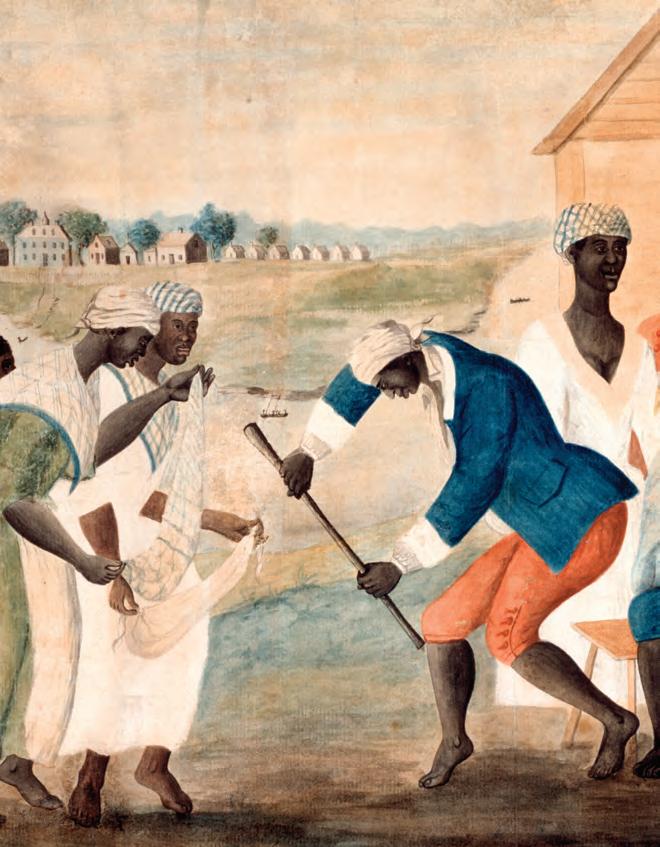
80 PALMETTOBLUFF.COM
PREVIOUS PAGE: A PLANTATION BURIAL BY JOHN ANTROBUS. THIS PAINTING IS ONE OF THE VERY FEW ANTEBELLUM ARTWORKS TO CAPTURE THE INTERIOR WORLD OF AFRICAN AMERICANS IN THE SLAVEHOLDING SOUTH. BURIALS WERE OFTEN HELD AT NIGHT, AFTER THE DAYS WORK WAS DONE, AND THE PAINTING PROVIDES A WINDOW INTO THE RICH WORLD OF AFRICAN AMERICAN SPIRITUALITY.
LEFT: THE OLD PLANTATION [EXCERPT] BY JOHN ROSE | THE COLONIAL WILLIAMSBURG FOUNDATION, GIFT OF ABBY ALDRICH ROCKEFELLER RIGHT: ENGRAVING OF ENSLAVED PEOPLE PLANTING RICE ON A CAROLINA PLANTATION. PUBLISHED IN HARPER’S MAGAZINE, 1895.

81FALL/WINTER 2022

LEFT: “HOEING RICE, SOUTH CAROLINA USA” | NIDAY PICTURES / ALAMY
RIGHT: “UNLOADING RICE BARGES”, SOUTH CAROLINA [HAND-COLORED WOODCUT] “THE MEN AND WOMEN AT WORK IN THE DIFFERENT SECTIONS WERE UNDER THE CONTROL OF FIELD-MASTERS. THE WOMEN WERE DRESSED IN GAY COLORS, WITH HANDKERCHIEFS AROUND THEIR TEMPLES...” (EDWARD KING, FROM “THE GREAT SOUTH”, SCRIBNER’S MONTHLY, 1874). THIS ROMANTICIZED ACCOUNT OF LIFE FOR ENSLAVED PEOPLE ON A RICE PLANTATION FROM 1875 IS FAR FROM REALITY. PROVIDED WITH USED RAGS TO WEAR IN EXCESSIVE TEMPERATURES, RICE HARVESTING WAS GRUELING AND BACKBREAKING WORK PERFORMED UNDER HAZARDOUS CONDITIONS THAT OFTEN RESULTED IN AN AVERAGE AGE OF TWENTY-SEVEN YEARS.
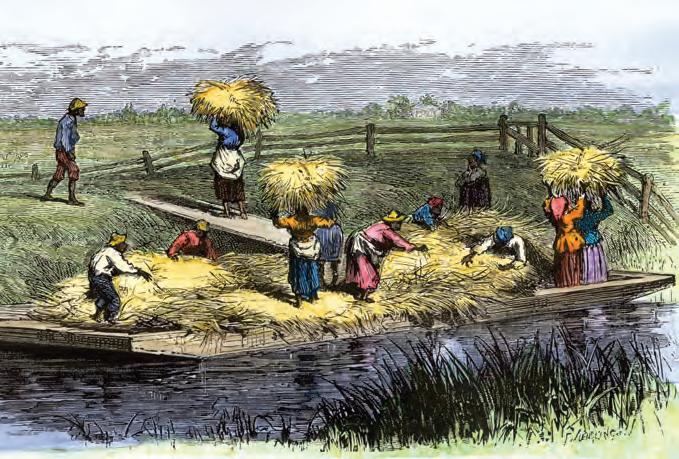
Ivory Coast, Ghana, Senegal, and Sierra Leone, where rice technology and cultivation had been successful for generations.
The sheer number of enslaved people necessary to fuel the South’s agricultural engine forced a blend of people from five-to-seven cultures for extended periods of time—from the beginning of captivity in Africa (often months in slave castles or holding pens), to several more months to cross the Atlantic, and then on to seasoning camps. The commonality of fear and circumstance led to what is now known as Gullah Geechee.
The Birth of a Culture
The Gullah Geechee culture is the unification of language, tradition, and cultural practices that enslaved people were able to maintain from their countries. Back then, coastal living didn’t include the creature comforts that we enjoy today, and diseases like malaria were prevalent in the area. As a result, many enslavers stayed away from the coast and their plantations for large portions of the year, while enslaved people maintained a workflow.
Slavery utilized two different types of labor. In most inland areas of the South, the brutal and cruel “Gang System” of labor demanded an unwavering level of work and production throughout the day and sometimes late into the evening, until the outcome was deemed sufficient.
In the Lowcountry, a different type of slave labor was used. Considered to be less harsh than the Gang System, the “Task System” employed an overseer who
was responsible for the entire plantation’s output, yet it enabled the enslaved a degree of autonomy once their tasks were completed. In some cases, open or free time afforded them the ability to fish or even farm small plots of land. These less-stringent labor practices, the isolation that came with Sea Island living, and the ability to openly maintain West African traditions and customs allowed Gullah Geechee culture to flourish.
After the Civil War and the Confederacy dissolved, most of the Gullah Geechee were abandoned, which left them virtually untouched by outside influences throughout the islands, as well as several inland areas like Palmetto Bluff. Gullah Geechee culture thrived, upheld by traditional lifestyle and practices.
Rooted in religion, the Gullah church was and continues to be the foundation of culture. With the fusion of spiritual practices, including Christianity, the Gullah church was central to daily life. Joining the church was considered a rite of passage for children and was rooted in the practice of “seeking”—the interpretation of a dream or spiritual communication that might take days or even months to achieve. Participating in religious services at a local praise house a few times a week was common, and services often lasted the majority of the day.
Originating from slavery, the heritage of the Gullah Geechee is grounded in oral tradition, passing
83FALL/WINTER 2022
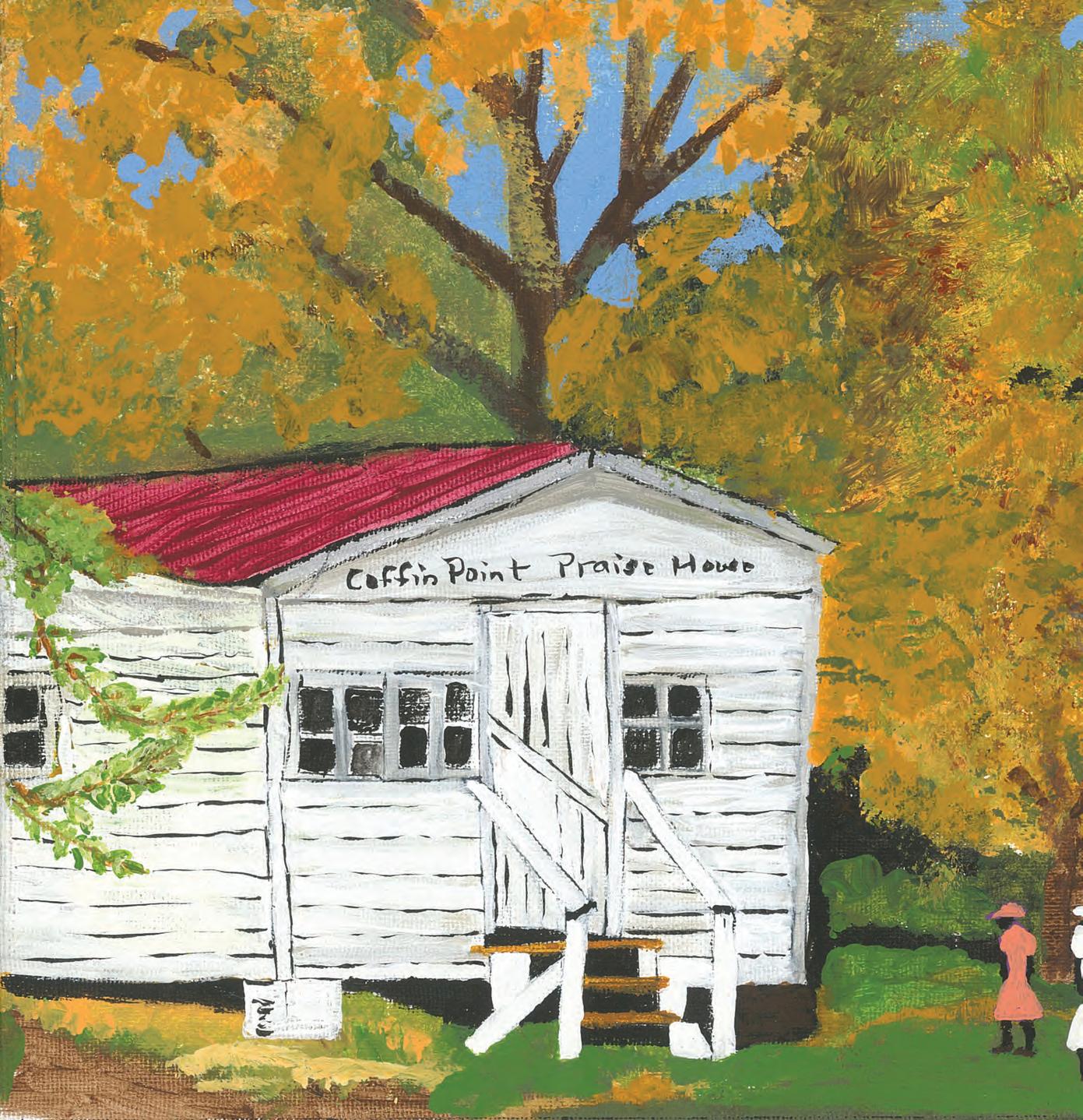
84 PALMETTOBLUFF.COM
LEFT: COFFIN POINT PRAISE HOUSE BY ARTIST MARY INABINETT MACK FROM THE ST. HELENA ISLAND ANN FRIPP GULLAH COMMUNITY. SLAVERY OFTEN FRACTURED AFRICAN FAMILIES. THESE PRAYER/PRAISE/PRAYS HOUSES GAVE ENSLAVED PEOPLE A GATHERING POINT AND SENSE OF IDENTITY WHEN FAMILY CONNECTIONS WERE BROKEN. THIS SHARED IDENTITY WAS VITAL TO BUILDING COMMUNITY AND PLACED RELIGION AT THE VERY HEART OF GULLAH GEECHEE CULTURE.
information down generationally from community elders to the youth. Over time, African proverbs were shared through easily remembered sayings like:
It takes a whole village to raise a child;
Do not look where you fell, but where you slipped; Wherever a man goes to dwell, his character goes with him;
Once you carry your own water, you’ll remember every drop; and
One falsehood spoils a thousand truths. These sayings not only helped the Gullah bridge and maintain a connection to Africa but also provided a framework for parenting within Gullah Geechee culture.
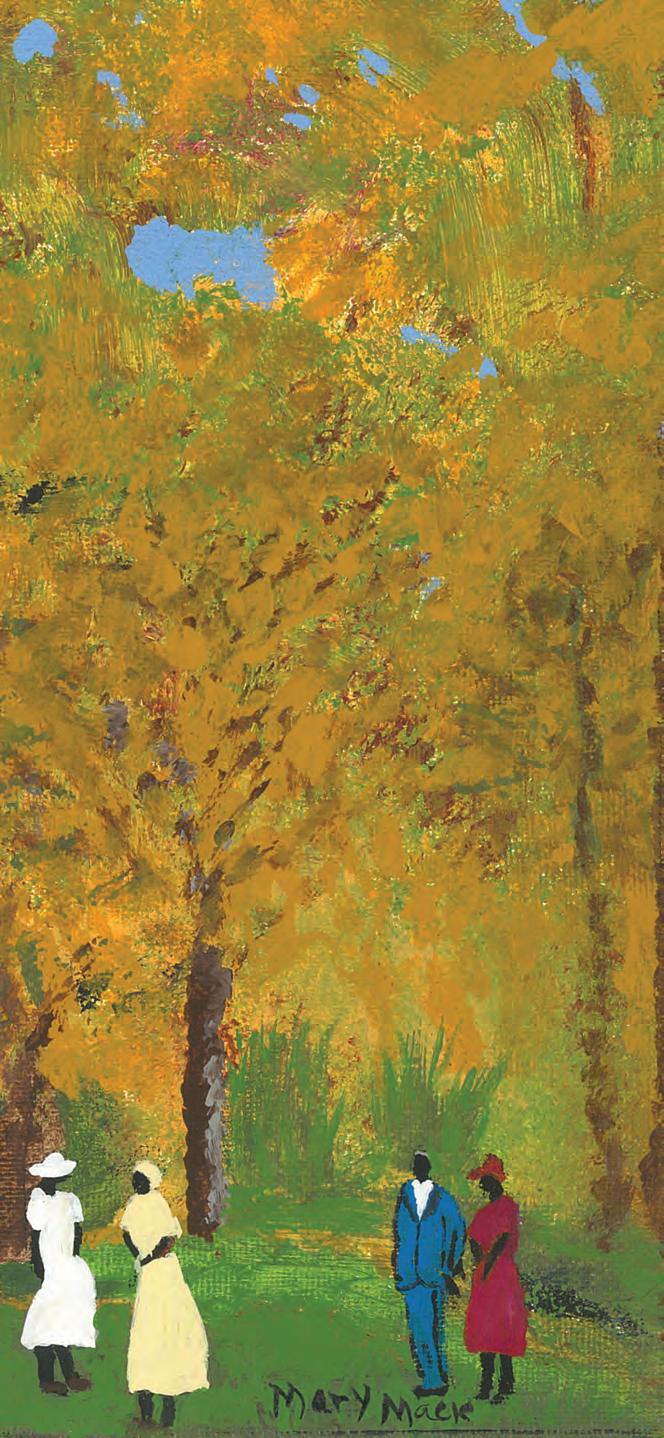
Strong character and kindness are revered traits in Gullah Geechee society. If one had, then all had. Sharing resources, skills, and the bounty from land and sea was essential and emblematic. The community was intertwined in supporting and doing for each other. Regardless of need, everyone was taken care of. If a house needed to be built, the community would come together to build it.
This sense of giving, community, and respecting the integrity of the land is how the Gullah Geechee have lived in our area for generations. Southern hospitality and the gentile nature of the Lowcountry is not accidental, it’s the culmination of rich Gullah Geechee traditions blended into the fabric of American culture.
85FALL/WINTER 2022


HOLE 14 THE MAY RIVER AT SUNRISE
GUIDE TO THE MAY RIVER GOLF COURSE
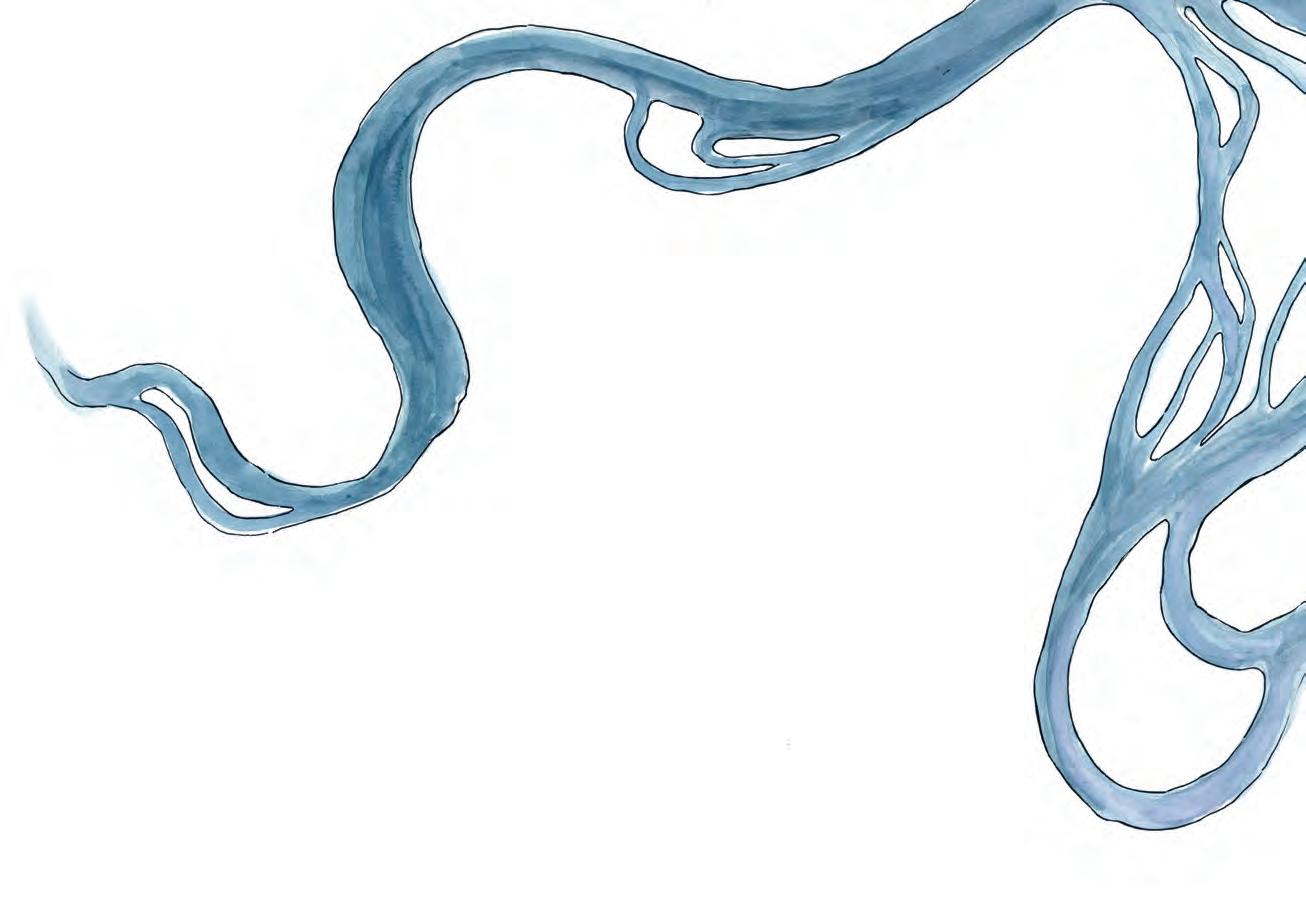
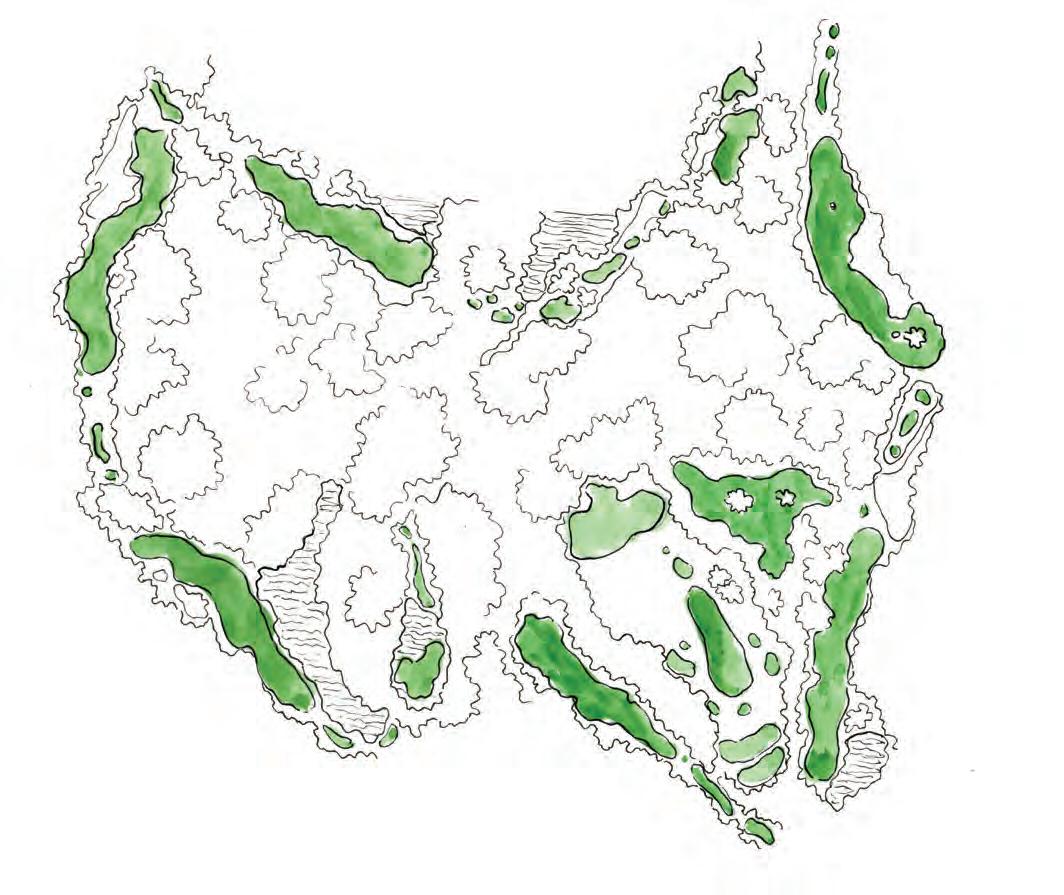
HEAD PRO GREG WROBEL OFFERS AN INSIDER LOOK AT THE JACK NICKLAUS MASTERPIECE SITUATED ALONG LOWCOUNTRY MAJESTY.
TAKE IN THE GRANDEUR OF CENTURY-OLD LIVE OAKS AND SERENE NATIVE LANDSCAPES AS YOU LINGER ON THE SCENIC, 18-HOLE JACK NICKLAUS SIGNATURE COURSE. A TOTAL OF 7,171 YARDS WEAVE THROUGH THE MARITIME FOREST, WITH SEVERAL HOLES ON THE BANKS OF THE MAY RIVER.
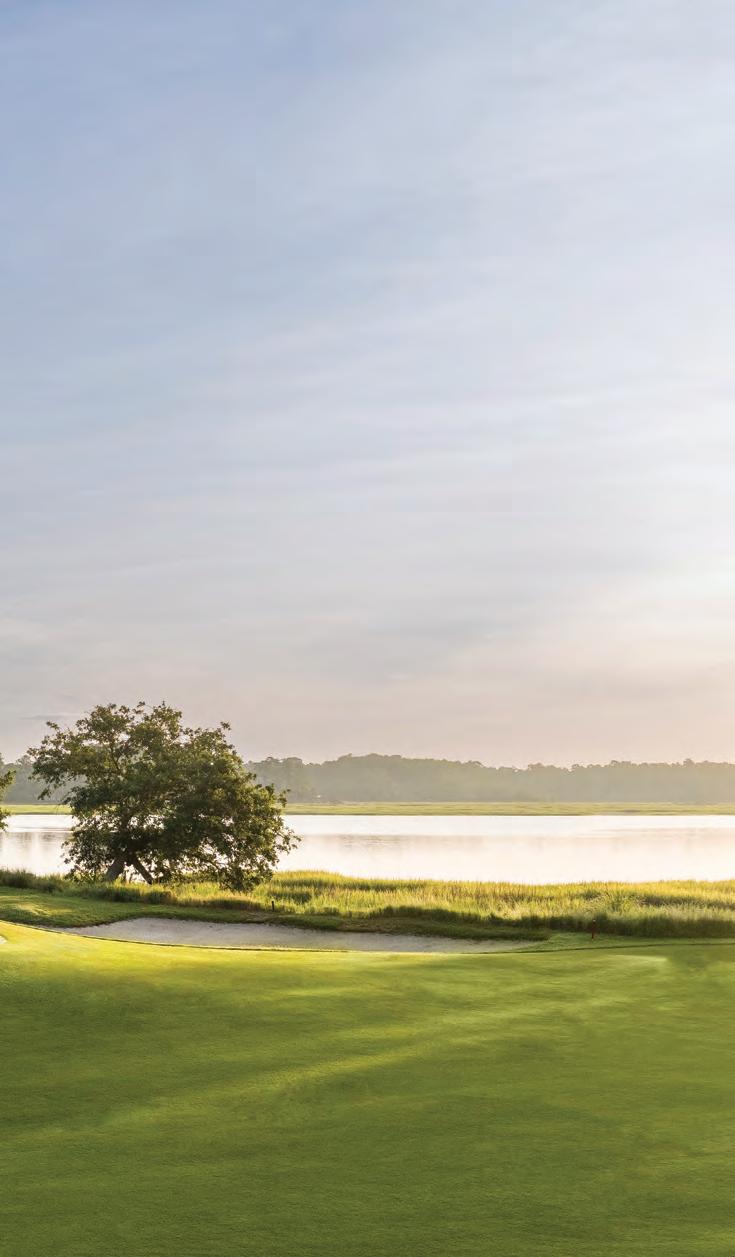 PHOTOGRAPHS BY PATRICK O’BRIEN
PHOTOGRAPHS BY PATRICK O’BRIEN

88 PALMETTOBLUFF.COM HOLE 15 A WINDY PAR FIVE
YOU ARE STANDING ADMIDST AN ANCIENT MARITIME FOREST. OAKS AND OTHER HARDWOOD TREES CREATE A THICK CANOPY AND SAWTOOTH PALMS MAKE UP THE UNDERSTORY.
HOLE #1 || PAR 4 || 350-429 YARDS
STARTING OUT WITH A DOG LEG TO THE RIGHT. YOU’LL NOTICE A VERY LARGE PINE TREE GUARDING THE LEFT SIDE OF THE FAIRWAY AND A BUNKER GUARDING THE RIGHT. THE EASIER TEE SHOT IS HITTING STRAIGHT AT THE FAIRWAY BUNKER, WHICH LEAVES YOU THE BEST ANGLE INTO THE ELEVATED GREEN. PLAYING THE BALL LEFT AND SHORT OF THE FAIRWAY BUNKER IS A GREAT OPTION; HOWEVER, IT DOES LEAVE A MORE CHALLENGING SECOND SHOT. THE GREEN IS GUARDED BY BUNKERS TO THE LEFT AND RIGHT AND A LARGE FALSE FRONT ON THE FRONT RIGHT OF THE GREEN, WHICH WILL COLLECT MIS-HIT SHOTS. NOTICE THE WISHBONE OAK BEHIND THE GREEN!
HOLE #2 || PAR 3 || 127-206 YARDS
OUR FIRST PAR THREE. WE HAVE FIVE PAR THREES ON THE COURSE, WHICH IS QUITE UNIQUE. NUMBER TWO PLAYS UP TO 210 YARDS FROM THE BACK TEE. THIS HOLE PLAYS SLIGHTLY UPHILL AND IS GUARDED BY TREES, SO THE WIND CAN BE TRICKY. FROM THE TEE, YOU HAVE TO CROSS A SLIVER OF WETLAND TO A SMALL ELEVATED GREEN. CENTER OF THE GREEN OR SHORT FRONT OF THE GREEN IS IDEAL. TRY NOT TO HIT LONG OR LEFT. THE LEFT IS GUARDED BY A HUGE BUNKER, WHICH MAKES GETTING THE BALL UP AND DOWN DIFFICULT.
HOLE #3 || PAR 4 || 307-428 YARDS
THIS IS A STRAIGHTAWAY PAR FOUR WITH A LARGE LAGOON GUARDING THE RIGHT SIDE OF THE FAIRWAY. THE SAFER PLAY IS AWAY FROM THE WATER BUT THAT LEAVES YOU WITH A DEMANDING SHOT OVER A SMALL LIVE OAK AND A BIG WASTE BUNKER ALONG THE LEFT SIDE OF THE HOLE. THE BEST ANGLE IS HITTING CLOSER TO THE WATER. IT’S RISKIER OFF THE TEE BUT ALLOWS FOR A STRAIGHTER SHOT ONTO THE GREEN. THE GREEN IS WELL GUARDED BY BUNKERS ON THE LEFT AND RIGHT. THE MISS HERE WOULD BE SHORT OF THE GREEN. A GOOD SCORE ON THREE WILL START YOUR DAY OFF RIGHT!

89FALL/WINTER 2022
HOLE #4 || PAR 5 || 402-565 YARDS
THIS IS OUR FIRST PAR FIVE! IT’S A LONG HOLE FROM THE BACK TEES, PLAYING 565 YARDS. BUNKERS GUARD THE RIGHT SIDE, AND THERE’S A SMALL POT BUNKER IN THE MIDDLE OF THE FAIRWAY. THAT’S A GREAT PLACE TO AIM. LONG HITTERS CAN GO FOR THE GREEN IN TWO BY CARRYING THE FAIRWAY BUNKER. IF YOU DON’T GO FOR IT IN TWO, THERE’S A WASTE BUNKER 150 YARDS SHORT OF THE GREEN THAT YOU WOULD LAY UP IN FRONT OF. THIS IS PROBABLY THE BEST ANGLE ONTO THE GREEN. IF YOU WANT TO GET A LITTLE MORE AGGRESSIVE, TRY A HYBRID OR LONG IRON SECOND SHOT AND A SHORT WEDGE INTO THE HOLE. THE ELEVATED GREEN IS GUARDED BY A VERY DEEP BUNKER ON THE RIGHT SIDE WITH A DRAMATIC FALSE FRONT ON BOTH SIDES. THIS IS PROBABLY ONE OF THE MOST DIFFICULT APPROACH SHOTS ON THE FRONT NINE! A BIRDIE HERE IS WELL DESERVED.
HOLE #5 || PAR 4 || 325-442 YARDS
ONE OF THE MOST CHALLENGING PAR FOURS ON THE GOLF COURSE, ESPECIALLY WHEN THE WIND IS BLOWING. THE HOLE IS A SLIGHT DOG LEG TO THE LEFT. BEAUTIFUL LIVE OAKS GUARD BOTH SIDES OF THE FAIRWAY AND MAKE FOR A VERY DEMANDING TEE SHOT. THE UNIQUE GREEN COMPLEX IS VERY NARROW FROM FRONT TO BACK AND WIDE FROM LEFT TO RIGHT. DEPENDING ON THE HOLE LOCATION, CHIPPING AND PUTTING CAN BE CHALLENGING. [JACK] NICKLAUS LEFT A SINGLE PALMETTO TREE SHORT, FRONT OF THE GREEN, AND THIS WILL LIKELY COME INTO PLAY. DON’T FORGET ABOUT THE WATER ON THE LEFT-HAND SIDE OF THE GREEN AS WELL! THE STRATEGY HERE IS TO FIND THE CENTER OF THE GREEN. THERE IS A BIG SLOPE SPLITTING THE GREEN INTO LEFT AND RIGHT SECTIONS, AND TWO-PUTTING CAN BE A CHORE. A PAR FOUR HERE IS VERY WELL EARNED!
HOLE #6 || PAR 3 || 117-175 YARDS
THIS IS PROBABLY MY FAVORITE PAR THREE ON THE COURSE. THIS IS THE FIRST VIEW OF THE MAY RIVER AND A GORGEOUS BACKDROP. THIS HOLE PLAYS BETWEEN 117 AND 175 YARDS, AND THE GREEN IS SURROUNDED BY BUNKERS ON THE FRONT, BACK, AND LEFT SIDES. THE MARSH COMES INTO PLAY FOR ERRANT TEE SHOTS SHORT AND LEFT. THE GREEN IS BISECTED BY A LARGE SLOPE THROUGH THE MIDDLE, WHICH MAKES A TWO-PUTT A WIN. YOUR BEST BIRDIE OPPORTUNITY IS IF THE PIN IS LOCATED AT THE FRONT RIGHT OF THE GREEN. IF THE PIN IS CUT TO THE BACK LEFT, A PAR THREE IS YOUR BEST FRIEND. I’D SAY THIS IS PROBABLY THE PRETTIEST PAR THREE IN THE LOWCOUNTRY.
LOBLOLLY PINES FRAME THIS HOLE FROM THE TEE. A NATURAL SLOPE TAKES YOU FROM HIGHLAND TO LOWLAND AND ACROSS GREENLEAF CREEK. AS YOU CROSS THE BRIDGE, YOU’LL SEE BLACK NEEDLERUSH ON THE BANKS OF THE CREEK AMONG RED CEDAR AND LIVE OAK.
HOLE #7 || PAR 4 || 224-336 YARDS
LENGTH IS NOT A FACTOR HERE, BUT PRECISION. SOME PLAYERS PREFER TO LAY BACK WITH A MID-IRON OR HYBRID OFF THE TEE, WHICH GIVES THEM A FULL WEDGE SHOT ONTO THE GREEN. THE AGGRESSIVE PLAY IS TO HIT IT AS FAR DOWN THE FAIRWAY AND AS CLOSE TO THE HAZARD AS POSSIBLE, WHICH LEAVES A SHORT LITTLE PITCH SHOT INTO THE GREEN. YOUR SECOND SHOT IS OVER A HAZARD TO THE NARROW GREEN, SURROUNDED BY HAZARDS ON THE BACK, FRONT, AND LEFT SIDES. IF THE PIN IS LOCATED ON THE LEFT SIDE OF THE GREEN, NEVER HIT TOWARD IT! TRY TO BAIL OUT A BIT LONG OR TO THE RIGHT. IF YOU CAN GET AWAY WITH A PAR FOUR HERE, YOU’RE GOING TO BE SMILING EAR TO EAR ON YOUR WAY TO EIGHT.
90 PALMETTOBLUFF.COM
HOLE 7 STRATEGIC PAR FOUR
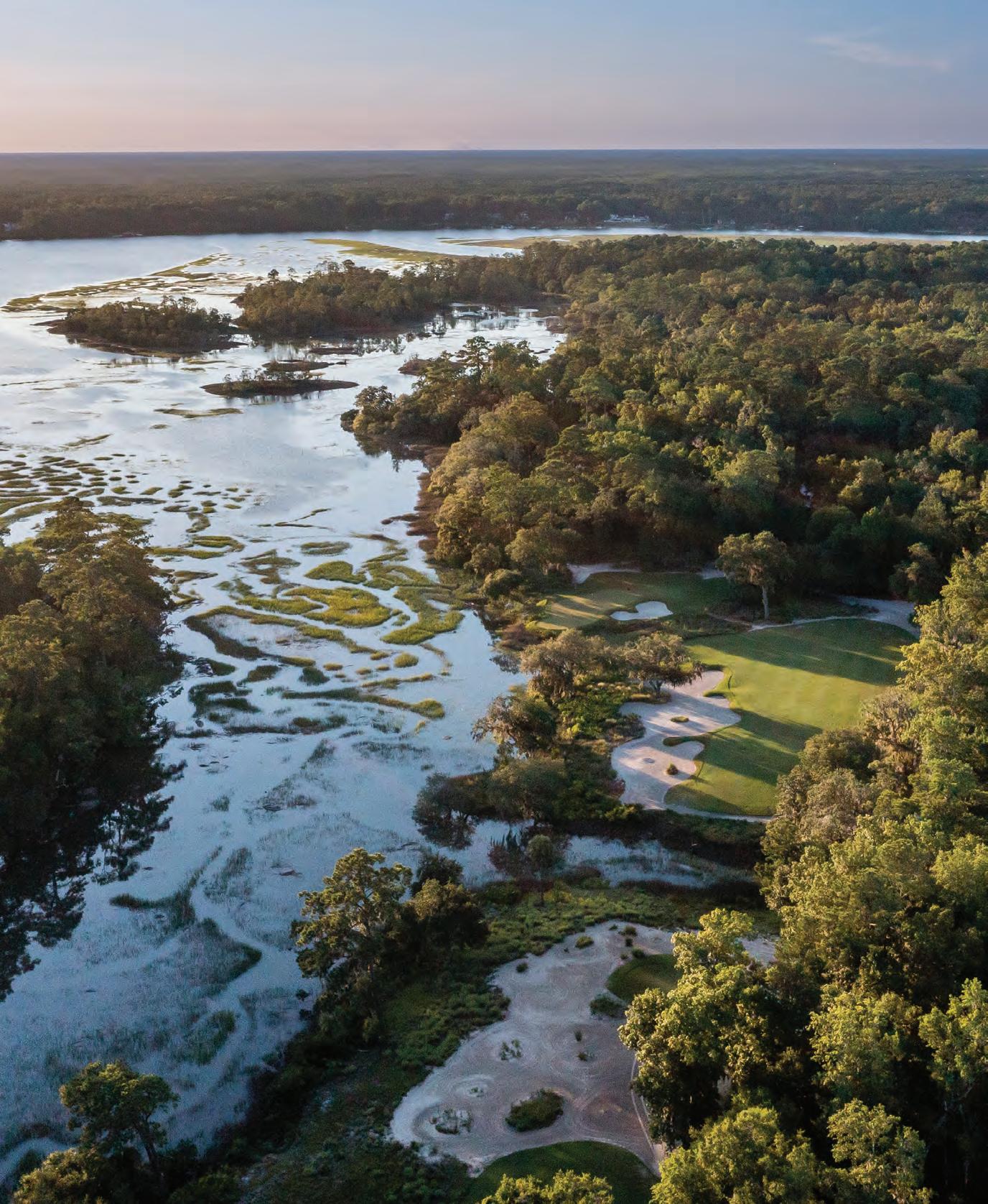

92 PALMETTOBLUFF.COM HOLE 8 GUARDED BY BUNKERS
HOLE #8 || PAR 5 || 463-555 YARDS
EIGHT IS A LONG PAR FIVE, SLIGHT DOG LEG TO THE LEFT, WITH A CLASSIC NICKLAUS POT BUNKER RIGHT IN THE MIDDLE OF THE FAIRWAY. DRIVER IS DEFINITELY THE PLAY OFF THE TEE AS THE LONGER HITTERS CAN BITE OFF SOME OF THE DOG LEG. THE MORE CONSERVATIVE PLAY WOULD BE A TEE SHOT SHORT OF THE POT BUNKER, AN IRON SECOND SHOT, AND A FULL THIRD INTO THE GREEN. ACCURACY IS A PREMIUM ON YOUR SECOND SHOT. A LARGE WASTE BUNKER GUARDS THE ENTIRE LEFT SIDE OF THE FAIRWAY, AND THREE SMALL POT BUNKERS GUARD THE RIGHT. THE GREEN IS ELEVATED WITH LARGE SLOPES ON ALL SIDES. ANY BALL THAT’S NOT IN THE CENTER OF THE GREEN IS GOING TO GET KICKED OFF TO THE EDGES, MAKING PAR A CHALLENGE AT BEST!
HOLE #9 || PAR 4 || 336-471 YARDS
THIS IS ONE OF THE LONGEST PAR FOURS ON THE GOLF COURSE. YOU’LL NOTICE AN INVITING FAIRWAY WITH A LARGE OAK TREE GUARDING THE RIGHT SIDE. A SHOT THAT VEERS RIGHT MIGHT BE BLOCKED OUT BY THE TREE, AND YOU’LL HAVE A PUNCH OUT TO GET BACK INTO PLAY. A PERFECT TEE SHOT DOWN THE LEFT SIDE WILL FIND A SPEED SLOT AND THE BEST ANGLE INTO THE GREEN. FOR THE SECOND SHOT, A LONG IRON, HYBRID, OR EVEN A FAIRWAY WOOD WILL BE NEEDED. A CLUSTER OF BUNKERS GUARD THE RIGHT SIDE OF THE GREEN, AND THE LEFT SIDE FEATURES A LARGE FALSE FRONT. IT REALLY PUTS A PREMIUM ON HITTING THE CENTER OF THE GREEN—ANYTHING AT THE EDGE IS GOING TO GET REPELLED DOWN THE STEEP SLOPE LEAVING AN UPHILL CHIP TO GET BACK ON THE GREEN. IT’S A CHALLENGING HOLE TO END THE FRONT NINE, BUT GOOD NEWS—THE CLUBHOUSE AWAITS YOU FOR A SNACK OR BEVERAGE TO START THE BACK NINE!

93FALL/WINTER 2022
HOLE #10 || PAR 5 || 426-556 YARDS
NUMBER TEN IS A STRAIGHTAWAY PAR FIVE. THERE’S A LOT GOING ON VISUALLY HERE. BUNKERS GUARD THE LEFT SIDE, THE RIGHT SIDE, AND AGAIN THAT FAMOUS NICKLAUS POT BUNKER IN THE CENTER OF THE FAIRWAY. IF YOU GET INTO ANY BUNKERS, YOU’LL HAVE TO LAY UP SHORT OF THE WETLAND HAZARD CROSSING THE FAIRWAY. A GOOD TEE SHOT HERE WILL GIVE YOU THE OPTION TO GO OVER THE HAZARD IN TWO. BUT BEWARE! THE LAYUP AREA IS SMALL WITH POT BUNKERS SCATTERED IN THE LANDING AREA, AND THE MAY RIVER IS IN PLAY ALONG THE RIGHT. PLAYERS WHO HIT A SHORTER TEE SHOT WILL HAVE TO LAY UP IN FRONT OF THE HAZARD, WHICH LEAVES ROUGHLY 160 TO 180 YARDS INTO THE GREEN. THE UNDULATED GREEN IS GUARDED BY THREE BUNKERS AND IS EXPOSED TO THE WIND OFF THE RIVER. CHECK OUT THE VIEW FROM THIS GREEN! A FUN HOLE TO START THE BACK NINE AND A GOOD OPPORTUNITY FOR BIRDIE.
HOLE #11 || PAR 3 || 103-169 YARDS
A SHORTER PAR THREE FOR MOST, BETWEEN 103 AND 170 YARDS. A LARGE LAGOON GUARDS THE RIGHT SIDE OF THE GREEN. THE GREEN IS VERY LONG FROM FRONT TO BACK, NEARLY 50 YARDS DEEP, WITH A LOT OF SLOPING AND UNDULATION. THE PREMIUM SHOT HERE IS A GENTLE LEFT-TO-RIGHT SHOT THAT COVERS THE CENTER OF THE GREEN. ANYTHING RIGHT WILL CAROM INTO THE LAGOON, LEAVING THE BALL IN A WATERY GRAVE.

HOLE #12 || PAR 4 || 282-402 YARDS
TWELVE IS A PAR FOUR DOG LEG TO THE LEFT. THIS IS A SHORT BUT UNDERRATED HOLE. IT’S GUARDED BY A LARGE WASTE BUNKER ALONG THE LEFT THAT RUNS FROM THE TEE ALL THE WAY TO THE GREEN. THERE’S ANOTHER NICKLAUS POT BUNKER IN THE CENTER OF THE FAIRWAY THAT CAN BE USED AS AN AIMING POINT. IF YOU’RE OK GETTING A LITTLE AGGRESSIVE, A DRIVER OFF THE TEE WOULD GET YOU OVER THAT POT BUNKER AND LEAVE A SHORT WEDGE SHOT ONTO THE GREEN. THE MORE CONSERVATIVE PLAY IS A HYBRID OR FAIRWAY WOOD RIGHT IN FRONT OF THE POT BUNKER. THIS IS GOING TO LEAVE YOU WITH A LITTLE MORE OF A CHALLENGING SHOT WITH A MID TO SHORT IRON. THE GREEN IS VERY NARROW AND SURROUNDED BY BUNKERS ON THE LEFT AND RIGHT SIDES. A CUT SHOT FROM LEFT TO RIGHT WOULD LEAVE A PRETTY GOOD PUTT FOR BIRDIE.
94 PALMETTOBLUFF.COM
HOLE #13 || PAR 4 || 297-472 YARDS
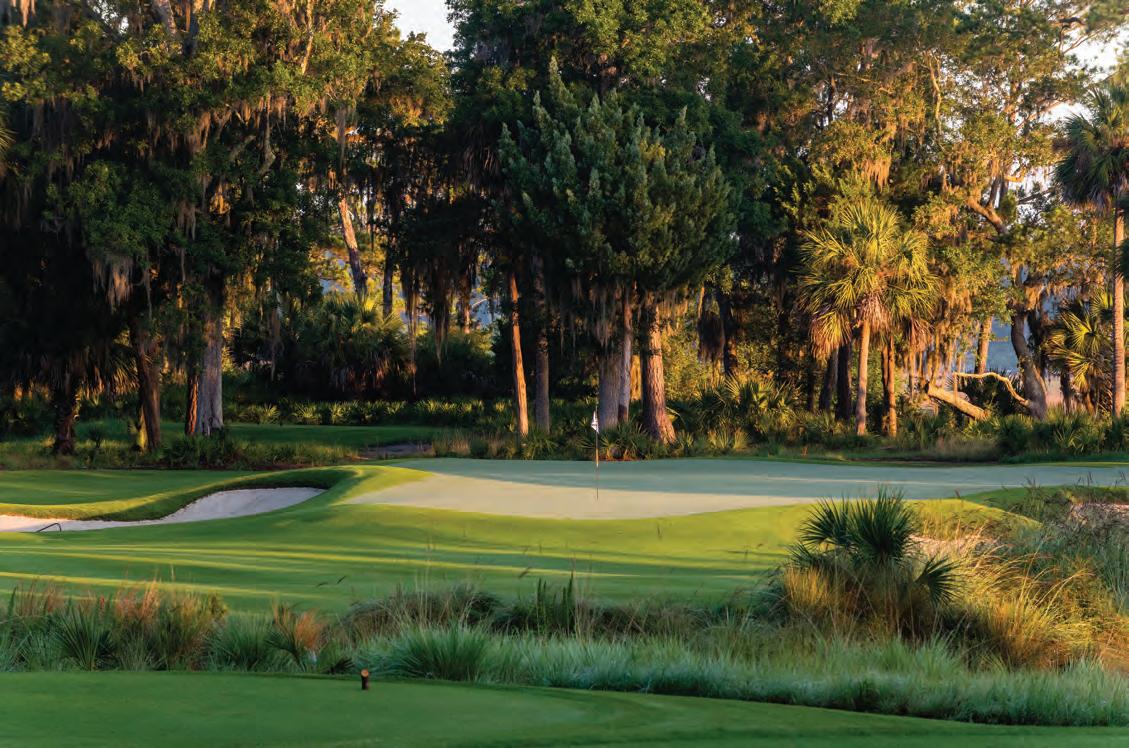
ANOTHER FAVORITE PAR FOUR. THIRTEEN IS A SLIGHT DOG LEG TO THE LEFT WITH A VERY GENEROUS FAIRWAY. THE LANDING ZONE IS FAVORABLE BUT DON’T GET TOO COMFORTABLE! THERE ARE BUNKERS IN THE FAIRWAY AND A WATER HAZARD IF YOU HIT IT TOO FAR TO THE RIGHT. A GOOD TEE SHOT LEAVES MOST PLAYERS WITH A REASONABLE APPROACH TO THE GREEN. WATCH THE LITTLE POT BUNKER JUST IN FRONT OF THE GREEN—IT CATCHES A LOT OF MISSED SHOTS. DEPENDING ON THE HOLE LOCATION, THIS IS A GREAT OPPORTUNITY FOR BIRDIE.
A BIT OF VISUAL TRICKERY: IF YOU’RE STANDING ON THE GREEN AND LOOKING BACK TOWARD THE FAIRWAY, ALL THE BUNKERS IN THE FAIRWAY DISAPPEAR!
IF THE COURSE COULD HAVE ONE SIGNATURE HOLE, THIS IS IT. THE PAR THREE PLAYS BETWEEN 110 AND 190 YARDS, AND THE WIND CAN BE A HUGE FACTOR. IF IT’S COMING OFF THE RIVER FROM RIGHT TO LEFT, IT MAKES HITTING THE GREEN A TOUGH TASK. YOU’RE NAVIGATING THE WATER AND BUNKERS TO THE RIGHT AND A LITTLE BUNKER ON THE LEFT, WHICH SEEMS TO COLLECT MANY TEE SHOTS. THE GREEN IS LARGE. IF YOU MISS A LITTLE SHORT AND LEFT, YOU STILL HAVE A PRETTY GOOD OPPORTUNITY TO MAKE AN UP AND DOWN. WHEN STANDING ON THE GREEN, LOOK BACK TO YOUR RIGHT AND YOU WILL SEE THE BLUFFTON OYSTER CO. AND MAYBE A DOLPHIN!
HOLE #14 || PAR 3 || 110-190 YARDS
HOLE 14 SIGNATURE HOLE
95FALL/WINTER 2022
HOLE #15 || PAR 5 || 400-535 YARDS
FIFTEEN IS A STRAIGHTAWAY PAR FIVE AND CAN OFFER UP SOME PRETTY CHALLENGING WIND CONDITIONS. OFF THE TEE YOU’RE WORKING WITH WATER ON THE RIGHT AND BUNKERS GUARDING THE LEFT. HITTING THE FAIRWAY IS PREMIUM. LONGER HITTERS CAN HIT THE GREEN IN TWO, BUT SHORTER HITTERS WILL NEED TO LAY UP JUST SHORT OF THE GREENSIDE BUNKERS. THIS IS PROBABLY THE MOST UNIQUE GREEN COMPLEX ON THE COURSE. MOST GREENS ON THE COURSE ARE SHAPED LIKE UPSIDE-DOWN SAUCERS, BUT THIS IS JUST THE OPPOSITE. IT’S SHAPED LIKE A BOWL, SO EVERYTHING RUNS TOWARD THE CENTER OF THE GREEN. IF YOU HIT A SHOT LEFT, IT’S GOING TO FUNNEL TO THE RIGHT. IF YOU HIT A SHOT RIGHT, IT’S GOING TO FUNNEL TO THE LEFT. FIRST-TIME PLAYERS ARE TRICKED INTO THINKING THAT THE TWO BUNKERS SHORT OF GREEN ARE DIRECTLY ADJACENT. BUT ONCE YOU GET DOWN THE FAIRWAY, YOU REALIZE THOSE BUNKERS ARE A GOOD TWENTY YARDS IN FRONT OF THE GREEN. MORE VISUAL TRICKERY FROM MR. NICKLAUS. LONG HITTERS CAN DEFINITELY MAKE BIRDIE OR EVEN EAGLE HERE. SPEAKING OF WHICH, THERE HAVE BEEN NUMEROUS BALD EAGLE NESTS IN THE PINE TREES ALONG THE RIGHT SIDE OF THE HOLE! THIS IS PROBABLY THE LAST TRUE BIRDIE HOLE ON THE BACK NINE.
HOLE #16 || PAR 4 || 288-436 YARDS
THIS IS THE LAST PAR FOUR, A SOFT DOG LEG TO THE RIGHT. THIS HOLE HAS A DEMANDING TEE SHOT BECAUSE OF THE FAIRWAY BUNKERS GUARDING THE RIGHT SIDE OF THE FAIRWAY AND THE UNIQUE “TUNING FORK” PINE TREE JUST OFF THE TEE ON THE LEFT. BE CAUTIOUS THERE. ONCE YOU FIND THE FAIRWAY, IT LEAVES A LONG SECOND SHOT WITH ONE OF THE MOST DIFFICULT GREENS TO HIT ON THE BACK NINE. IT’S ELEVATED WITH A FALSE FRONT ON ALL SIDES. THERE’S ONE DEEP BUNKER TO THE LEFT, WHICH IS A BIG NO-NO. FIND THE CENTER OF THE GREEN, AND IF YOU HAPPEN TO MAKE A PAR IT IS WELL DESERVED.
THIS HOLE IS SURROUNDED BY A PREHISTORIC SITE, OCCUPIED BY HUMANS AS EARLY AS 200 BC. NOTICE THE UNIQUE CLUSTER OF SABLE PALMS BEHIND THE GREEN.
HOLE #17 || PAR 3 || 135-234 YARDS
THIS IS OUR LAST AND LONGEST PAR THREE, PLAYING BETWEEN 135 AND 240 YARDS. GUARDED BY A LARGE BUNKER ON THE RIGHT AND SOME BUNKERING AND FALSE FRONTS ON THE LEFT, WHICH CAPTURES MOST OF THE TEE SHOTS. IF YOU MISS THE GREEN LEFT, IT RUNS OFF AND LEAVES YOU WITH AN UPHILL SHOT TO AN ELEVATED GREEN. SHOTS THAT LAND RIGHT LEAVE YOU WITH A VERY CHALLENGING UP AND DOWN FROM THE BUNKER. SOMETIMES THE SMART PLAY IS SHORT OF THE GREEN, LEAVING A PUTT OR CHIP SHOT TO THE UNIMPEDED HOLE. THIS PAR 3 HAS DECIDED MANY MATCHES HERE AT MAY RIVER.
HOLE #18 || PAR 5 || 476-570 YARDS
VISUALLY OFF THE TEE, YOU’RE STARING AT WATER. WATER GUARDS THE ENTIRE LEFT SIDE OF THE FAIRWAY AND A LARGE OAK TREE GUARDS THE RIGHT. THIS IS A RISK-REWARD HOLE WHERE LONGER HITTERS CAN REACH THE GREEN IN TWO SHOTS, SEARCHING FOR A LOW SCORE, BUT THE PENALTY IS A BALL IN THE WATER. THE TRADITIONAL SECOND SHOT IS DIFFICULT WITH A POT BUNKER DOWN THE CENTER OF THE FAIRWAY. THE PLAY IS TO EITHER LAY UP SHORT OF THAT POT BUNKER, WHICH WILL LEAVE A WEDGE OR SHORT IRON ONTO THE GREEN. IF YOU’RE FEELING CONFIDENT, CARRY THE POT BUNKER, WHICH LEAVES A SHORT PITCH SHOT. BUT BEWARE, THE FAIRWAY NARROWS AS YOU GET CLOSER TO THE GREEN. BE STRATEGIC IN YOUR LAY UP. THE LEFT SIDE OF THE FAIRWAY WILL GIVE YOU THE BEST ANGLE INTO THE GREEN. BUT TOO FAR LEFT AND OUR 200-YEAR-OLD OAK TREE COMES INTO PLAY. IF YOU LAY UP TO THE RIGHT, YOU BRING WATER INTO PLAY. THE FINAL CHALLENGE IS THE GREEN ITSELF. IT’S A LONG PUTTING SURFACE FROM FRONT TO BACK WITH THREE DISTINCT TIERS. THE BACK RIGHT HOLE LOCATION CAN SCARE EVEN THE BEST PLAYERS. A BIRDIE ON EIGHTEEN IS WELL DESERVED AND CAN BRING APPLAUSE FROM THE CLUBHOUSE PATIO!
DON’T MISS PALMETTO BLUFF’S SIGNATURE TREE. THIS MASSIVE LIVE OAK SITS AT THE END OF THE FAIRWAY AND IS ESTIMATED TO BE OVER 250 YEARS OLD.
96 PALMETTOBLUFF.COM





HILTON HEAD ISLAND 843.689.3237 BEAUFORT 843.379.5012 RIVERWALK 843.379.3237 POOLER 912.450.3400 distinctivegraniteandmarble.com CALL TODAY TO SET UP YOUR PRIVATE APPOINTMENT.
The journey, elevated
As the exclusive private aviation partner of Palmetto Bluff, Wheels Up invites you to experience the joy of private flight on your next trip to the Lowcountry. Because no matter where you’re going, it matters how you get there.

Learn more about Wheels Up and discover the exclusive benefits available for Palmetto Bluff Club members: palmettobluff@wheelsup.com
wheelsup.com
All Wheels Up flights are operated by our DOT/FAA-authorized
 carrier subsidiaries (Wheels Up Private Jets LLC, Alante Air Charter LLC, Gama Aviation LLC, Mountain Aviation LLC, Sterling Aviation LLC, and TWC Aviation LLC) or by an approved vendor air carrier that has undergone our safety assessment.
carrier subsidiaries (Wheels Up Private Jets LLC, Alante Air Charter LLC, Gama Aviation LLC, Mountain Aviation LLC, Sterling Aviation LLC, and TWC Aviation LLC) or by an approved vendor air carrier that has undergone our safety assessment.
air



Hilton Head Island ∙ Charleston ∙ Denver jbanksdesign.com | 843.681.5122 | info@jbanksdesign.com | @jbanksdesign Retail Store: 35 N. Main Street, Hilton Head Island, SC 29926 | @jbanksretail
The Fall Kitchen

Drawn to kitchens at an early age, Waddington left school in his native Australia to train under culinary giant Noelle Quinn. After working in a variety of restaurants, Waddington returned to his childhood home and opened Waddingtons at Kergunyah, a farm-to-table restaurant that sourced ingredients from the surrounding family property. Waddington was an early adopter of this slow food philosophy and garnered immediate attention for his innovative interpretation of whole foods.
After his success in Australia, Waddington moved to the critically acclaimed Bondi Bar and Kitchen in San Diego, California. During his tenure, he was voted one of the Top Five Chefs in Southern California. Next, Waddington spent twelve years as Executive Chef at Winged Foot Golf Club. It was during this time that he was invited to cook at the famed James Beard House in New York City.
Waddington was hired by Palmetto Bluff in Spring 2022 for his visionary approach to cooking but also for his holistic perspective. Sourcing much of his ingredients from the The Farm at Palmetto Bluff, Waddington feels like he is returning to his roots, imagining dishes inspired by local, seasonal produce.
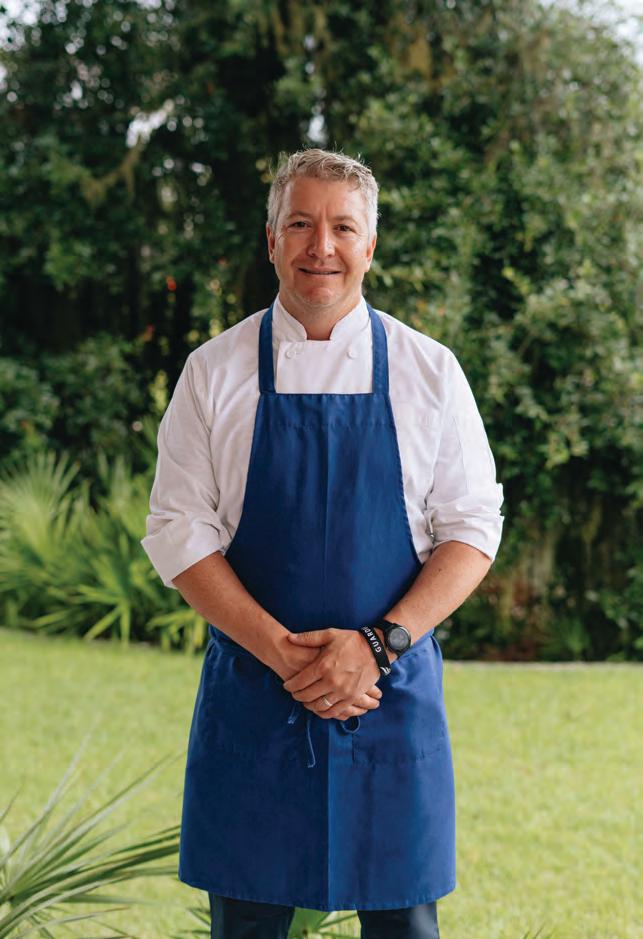
 CHEF RHY WADDINGTON’S DIVERSE RÉSUMÉ HAS TAKEN HIM ALL OVER THE WORLD AND GARNERED PRESTIGIOUS AWARDS AND HONORS. AN EARLY ADOPTER OF THE FARM-TO-TABLE PHILOSOPHY, HE BRINGS A HOLISTIC ETHOS TO THE KITCHENS OF PALMETTO BLUFF. ENJOY THESE TWO SEASONAL RECIPES WITH WINE PAIRINGS FROM SOMMELIER GENE CASTELLINO OF BOUNDARY BOTTLE COMPANY.
PHOTO BY CAMERON WILDER
CHEF RHY WADDINGTON’S DIVERSE RÉSUMÉ HAS TAKEN HIM ALL OVER THE WORLD AND GARNERED PRESTIGIOUS AWARDS AND HONORS. AN EARLY ADOPTER OF THE FARM-TO-TABLE PHILOSOPHY, HE BRINGS A HOLISTIC ETHOS TO THE KITCHENS OF PALMETTO BLUFF. ENJOY THESE TWO SEASONAL RECIPES WITH WINE PAIRINGS FROM SOMMELIER GENE CASTELLINO OF BOUNDARY BOTTLE COMPANY.
PHOTO BY CAMERON WILDER
101FALL/WINTER 2022
ROASTED VEGETABLES
2 BUTTERNUT SQUASH
4 HEADS BEECH MUSHROOMS
12 BANANA PEPPERS
4 SPRIGS THYME
2 SPRIGS ROSEMARY
6 CLOVES GARLIC
½ CUP OLIVE OIL
2 HEADS
TO
Roasted Butternut Squash Salad with Banana Pepper Vinaigrette
BANANA PEPPER VINAIGRETTE
4 ROASTED BANANA PEPPERS
2 CLOVES GARLIC, ROASTED
1 SHALLOT
1 SPRIG ROSEMARY, STRIPPED
1 CUP MOSCATO VINEGAR
2 CUPS EXTRA VIRGIN OLIVE OIL
PLACE PEPPERS, GARLIC, SHALLOT, ROSEMARY LEAVES, AND MOSCATO
VINEGAR IN A BLENDER AND PUREE, WHILE SLOWLY ADDING IN THE EXTRA VIRGIN OLIVE OIL UNTIL EMULSIFIED.
PICKLED MUSTARD SEEDS
1 CUP CHAMPAGNE VINEGAR
½ CUP SUGAR
1 CLOVE GARLIC, MINCED
1 PC STAR ANISE
2 SPRIGS THYME
1/4 CUP YELLOW MUSTARD SEEDS
COMBINE ALL AND SIMMER FOR TEN MINUTES.
CUT SQUASH IN EIGHTHS, LENGTHWISE. TOSS THE SQUASH, PEPPERS AND BEECH MUSHROOMS, THYME, GARLIC, AND ROSEMARY WITH ½ CUP OF OLIVE OIL AND SEASON WITH SALT AND PEPPER. ROAST AT 350 DEGREES FOR THIRTY MINUTES. WASH THE GEM LETTUCE.

PLACE ROASTED SQUASH, BANANA PEPPERS, AND BEECH MUSHROOMS ON THE PLATE. GARNISH WITH BABY GEM LETTUCE AND PICKLED MUSTARD SEEDS. DRESS WITH BANANA PEPPER VINAIGRETTE AND FINISH WITH SEA SALT.
PAIR WITH A BOTTLE OF 2020 BORGO SAN DANIELE FRIULI ISONZO PINOT GRIGIO
This Italian wine is dominated by ripe fruit aromas, particularily pear. Notice hints of straw and toasted almonds. The palate is soft and balanced with attractive white fruit flavors and an elegant finish.
102 PALMETTOBLUFF.COM
BABY GEM LETTUCE 4 TBSP PICKLED MUSTARD SEEDS
SERVE
PICKLED ONIONS
COMBINE RICE WINE VINEGAR THROUGH CORIANDER SEEDS IN A SMALL SAUCEPAN AND BRING THE LIQUID TO A SIMMER, THEN REMOVE AND COOL. ADD SLICED ONION AND LET PICKLE FOR A MINIMUM OF TWO HOURS.
SHRIMP STUFFED SHISHITO PEPPERS
RINSE SHISHITO PEPPERS. SLICE ONE SIDE TO REMOVE THE SEEDS AND CREATE A CAVITY FOR THE SHRIMP FARCE. FINELY DICE THE SHRIMP. ADD GINGER, GARLIC, SESAME OIL, FISH SAUCE, AND CILANTRO. MIX, SEASON WITH SALT AND PEPPER, AND BIND WITH TAPIOCA STARCH AND EGG WHITE. PLACE THE SHRIMP FARCE IN A PIPING BAG AND FILL THE SHISHITO PEPPERS AND SET ASIDE.
INGREDIENTS
1 RED ONION, SLICED
1 CUP RICE WINE VINEGAR
¼ CUP SUGAR
½ LIME
1 STAR ANISE
1 TSP TOASTED
CORIANDER SEEDS
16 SHISHITO PEPPERS
½ LB OF LOCAL SHRIMP
1 OZ GINGER, MINCED
1 CLOVE GARLIC, MINCED
1 TSP SESAME OIL
1 TSP FISH SAUCE
¼ CUP CILANTRO, CHOPPED
2 TSP TAPIOCA STARCH
1 EGG WHITE
1 BUTTERNUT SQUASH
2 OZ GINGER, GRATED
1 PC KAFFIR LIME LEAF
2 QT COCONUT MILK
SALT AND PEPPER
12 THAI BASIL LEAVES
12 CILANTRO SPRIGS
FENNEL BLOSSOM
2 LIMES CUT IN HALF
BUTTERNUT SQUASH AND COCONUT BISQUE
PEEL AND DICE BUTTERNUT SQUASH. COVER WITH COCONUT MILK AND ADD GINGER AND LIME LEAF. SIMMER UNTIL THE SQUASH IS FULLY COOKED AND THEN PROCESS IN A BLENDER UNTIL SMOOTH. ADD BROTH FOR CONSISTENCY, THEN SEASON TO TASTE.
TO SERVE
FRY THE SHISHITO PEPPERS FOR THREE MINUTES AT 375 DEGREES OR UNTIL SHRIMP ARE FULLY COOKED. POUR BISQUE INTO THE MIDDLE OF EACH OF FOUR PLATES. PLACE FOUR STUFFED PEPPERS AROUND THE BISQUE AND GARNISH WITH PICKLED ONION, AROMATIC HERBS, AND HALF OF A LIME.

Butternut Coconut Bisque with Shrimp Stuffed Shishito
PAIR WITH A BOTTLE OF MAISON DARRAGON VOUVRAY BRUT
A flattering nose offers aromas of white fruits, such as pear and apple. The mouth feel of this Touraine wine is an attack of smooth effervescence, volume, and richness with aromas of honeyed flowers and spices.
103FALL/WINTER 2022






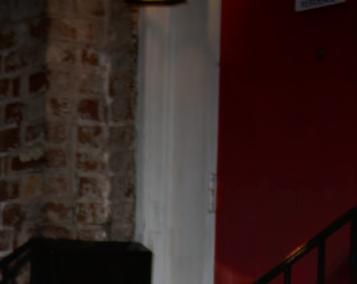





































We specialize in the complex. The “beyond” in Beyond Exceptional Dentistry means we treat patients many others have given up on and achieve success where others failed. DR. RYAN M. REEVES, DDS A PASSION FOR PERFECTION! BEYONDEXCEPTIONALDENTISTRY.COM 912.234.8282
What goes through your mind as you drive into Palmetto Bluff?
My first day here was March 19th. Driving in, it was almost as if all the sound around me dropped away. I realized that this was going to be my new world, this was going to be my new life. I came around the corner and saw this endless tunnel of trees and alligators at the bridge. You know, some cars might have passed by me, but all I heard was nature, this corridor of beauty. It’s pretty spectacular.
Where are you from and how did you get here?
I grew up in Manchester, New Hampshire. My dad grew up with the Dunfey brothers, and they developed a hotel company called Dunfey Hotels, which later became Omni [Hotels & Resorts]. So I grew up in the industry, in the culture of serving. I went to school for it and worked for Disney for a couple summers in their College Program. Then I went to work for Omni, and after that I spent twenty years with The Ritz-Carlton, most recently in Naples at the beach resort for eleven years.
What is your most marked characteristic?
I’m a relationship person, and I think you have to be in this industry. I just have a genuine interest in other
 CHARACTER
CHARACTER
Jon McGaunn
GENERAL MANAGER MONTAGE PALMETTO BLUFF

people; I love hearing their stories. In my first months here, I’m trying to sit down with every leader and really get to know them, to find out why they’re here and what they love about this place. You have to listen and get to know your team in order to be successful in this business.
What is something people don’t know about you?
I come from a very big family. I’m the youngest of five! I have three sisters and one brother. I have a lot of great nephews and nieces, and the majority of them are still up in New Hampshire.
What makes you laugh?
I have to go back to my kids. They send me these TikTok videos, and I’ll just start laughing hysterically. So now my staff will know why I’m laughing by myself in the office! My kids are pretty fun, and I like to stay connected to what they’re doing. We talk all the time.
What is your favorite spot at Palmetto Bluff? Grace Dock. I haven’t seen all 20,000 acres yet, but I think I found my spot. It is so serene. Every single morning I take a picture and send it to my family and friends. I’ve fallen in love with these sunrises—no two alike.
What is the last book you read?
I’ve become good friends with an author by the name of Tommy Spaulding. He wrote the book The Heart-Led Leader. It goes hand in hand with my beliefs of leading from the heart and making emotional connections with your team.

105FALL/WINTER 2022
LOCAL
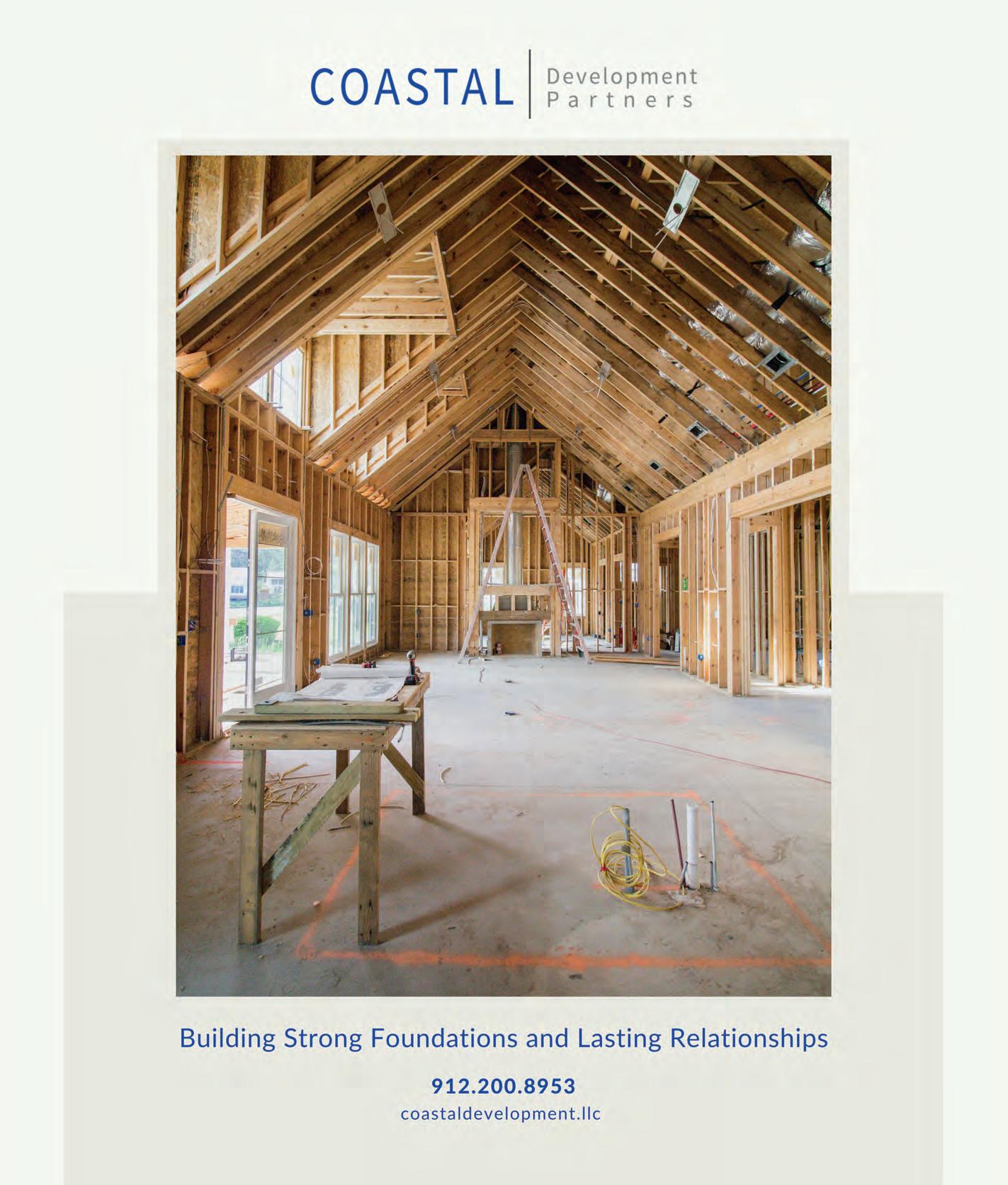
What goes through your mind as you drive into Palmetto Bluff?
I always roll my window down and make the effort to say good morning to our wonderful security staff. I cross the bridge, looking for a glimpse of an alligator. I listen to a few songs on the radio, clear my head, and prepare for the day. I don’t think it’s possible to take for granted the sheer beauty of Palmetto Bluff and just how lucky we are to call this place home.
Where are you from and how did you get here?
I spent most of my life in Arizona. I’ve been around golf since I was a young kid and have worked at private clubs since high school. I spent twelve years working in finance for Troon, the world’s largest club and golf management firm. In 2017 Troon sent me to Bluffton to be the chief financial officer at Belfair golf club. After a few years, I was recruited by Blackhawk Country Club outside of San Francisco to be their assistant general manager and CFO. When COVID happened my wife and I decided that we wanted to eventually move back to our home in Bluffton. In 2020 I was recruited by Berkeley Hall Club, so we returned to the Lowcountry. Around Christmas of 2021, I received a call from South Street Partners asking if I’d

Jeff Dekruif
have any interest to lead the club team at Palmetto Bluff. It was an opportunity to be part of something remarkable, and one thing led to another. Here we are!
What is your most marked characteristic?
My most marked characteristic is probably that I care tremendously about my craft. I love club management and I love people. A few years ago, I went out to lunch with Robert Sereci, the chief operating officer of Medinah Country Club. Robert has always been a wonderful mentor to me. He asked me if I understood the difference between passion and purpose. My passion might be golf and private clubs, but I’ve realized my purpose is leadership and helping others to improve their lives. Robert has always pushed me to follow my purpose.
What is something people don’t know about you?
I can play a little country music on the guitar, and my wife often finds me sitting in our home office strumming chords and singing songs.
What makes you laugh?
Our two beautiful daughters, Hayden and Holland, who are the light of our lives. They are eight and seven, so they are at really fun ages. I know it won’t always be like this, so I treasure every bit of time we can spend together.
What is the last book you read?
I’m currently reading a book called People First by Three and Jackie Carpenter. The Carpenters are former club managers who now travel the country speaking to club leaders about high-performing work cultures in the private club business. When you take care of employees first, membership satisfaction will fall into place.
 GENERAL MANAGER
BLUFF CLUB
GENERAL MANAGER
BLUFF CLUB
107FALL/WINTER 2022
PALMETTO
LOCAL CHARACTER
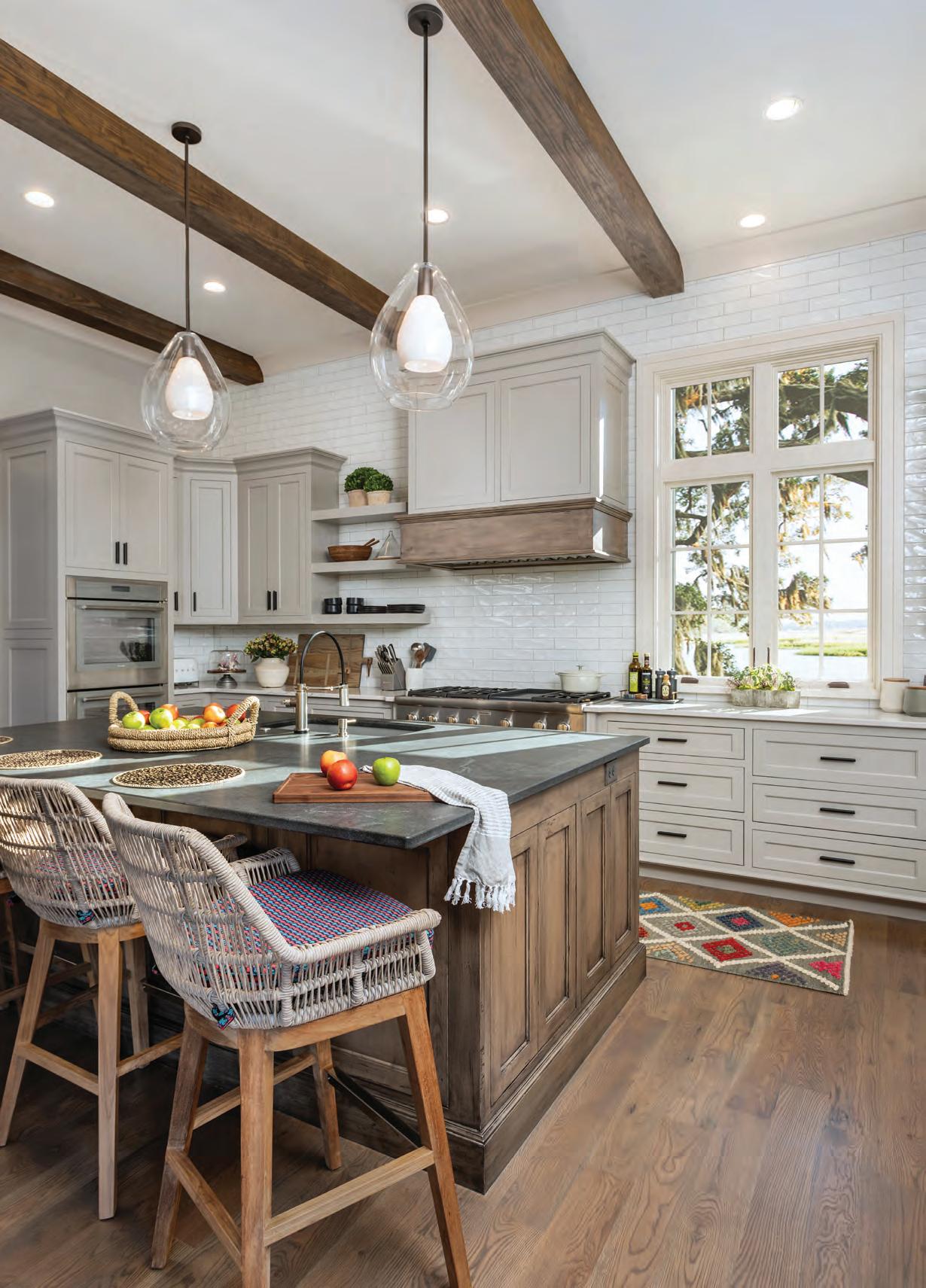



As a family-owned and operated business for over two decades, our team at Dillard-Jones has grown to include some of the most talented architects, designers and building professionals in the Carolina’s.

We hope you can sense the commitment and passion of our all-inclusive Design-Build-Dwell process and understand why it truly sets us apart from other builders.

Scan the code below or call to learn more!

Passion. Integrity. Excellence. 843.790.9001 | dillardjones.com
Investing in life’s greatest asset, time.

Find your home in one of our four lauded, luxury communities celebrating the dazzle in every day and the magic in every moment.

 Kiawah Island, South Carolina Western Carolina Mountains
Kiawah Island, South Carolina Western Carolina Mountains
southstreetcollection.com



Obtain the Property Report required by federal law and read it before signing anything. No Federal or State agencies have endorsed or judged the merits of value, if any, of these properties. This is not intended to be an offer to sell nor a solicitation of offer to buy real estate in any jurisdiction where prohibited by law or where registration is required prior to any offer being made. Renderings and illustrations may differ from completed products. Prices, plans, uses, dimensions, specifications, materials, facilities, features, amenities, benefits and services described and/or depicted herein may be in formative stages and based upon current development plans, which are subject to change without notice. No guarantee is made that certain of the facilities, features or amenities depicted or otherwise described herein will be built or, if built, will be of the same type, size or nature as depicted or described herein. Use of recreational facilities and amenities for may require separate club membership.
 Middleburg, Virginia
Bluffton, South Carolina
Middleburg, Virginia
Bluffton, South Carolina
We help responsible owners of the finest built homes care for the place that matters most.
If your home is insured for $1M or more: Call 888.814.7873 Visit purein.com Ask
independent broker
PURE Insurance is the marketing name used to refer to Privilege Underwriters Reciprocal Exchange (PURE), a Florida domiciled reciprocal insurer. PURE Risk Management, LLC (PRM), a for-profit entity serves as PURE’s attorney-in-fact for a fee. PRM is a subsidiary of Privilege Underwriters, Inc., a member of the Tokio Marine Group of Companies. This material is descriptive only. The precise coverage offered is subject to the terms and conditions of the policies issued. PURE membership requires an executed Subscriber’s Agreement & Power of Attorney. Allocations to Subscriber Savings Accounts are subject to the terms of this agreement and approval by the Florida Office of Insurance Regulation. This agreement and additional information are available at pureinsurance.com. Trademarks are property of PRM and used with permission. ©2022 PRM. All Rights Reserved. 44 South Broadway, Suite 301, White Plains, New York 10601. PURE HNW Insurance Services, CA Lic. 0I78980.
high value homeowners | automobile | watercraft | jewelry, art & collections | personal excess liability | flood | fraud & cyber
your
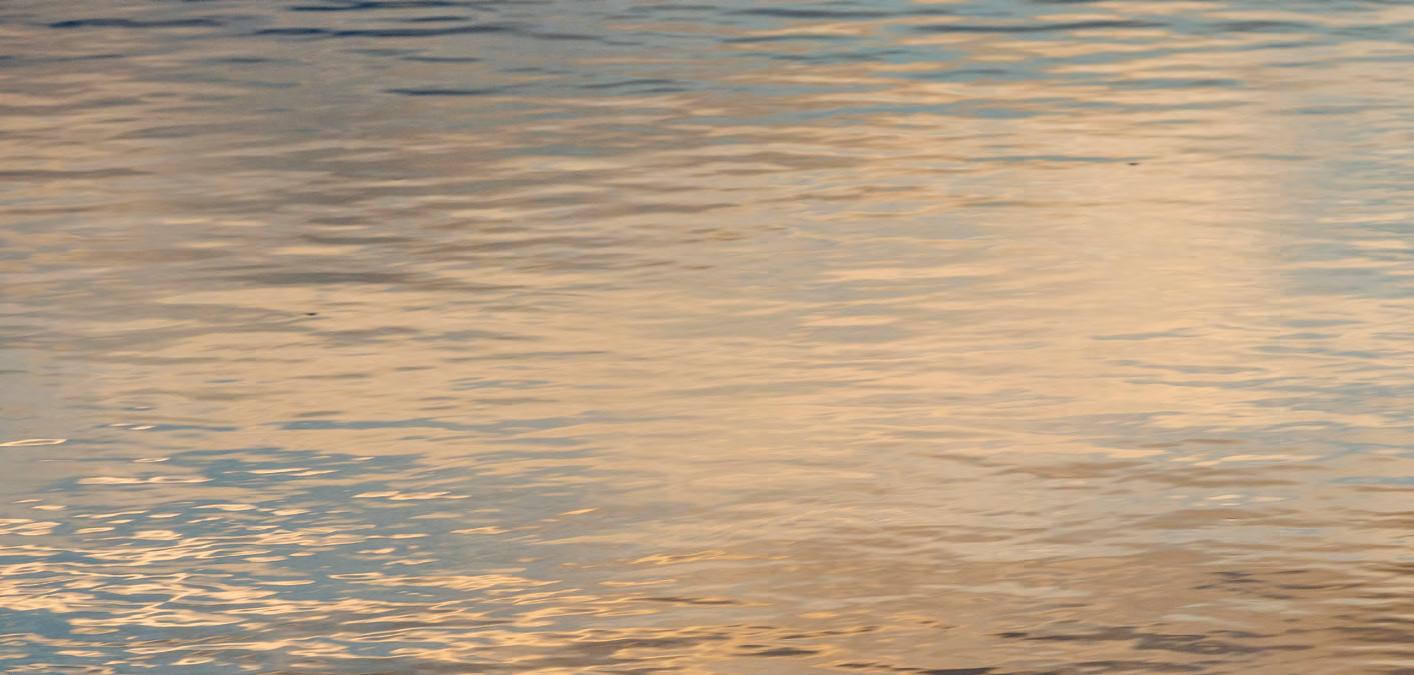






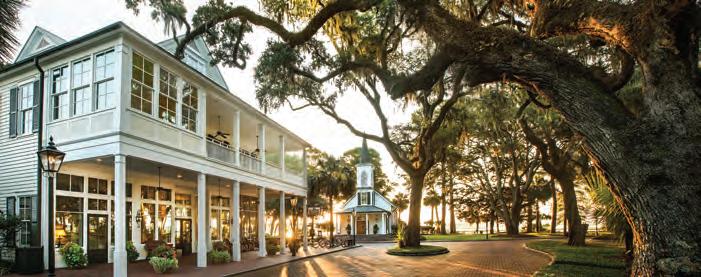
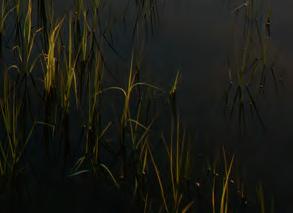
EXCLUSIVELY FOCUSED ON PALMETTO BLUFF REAL ESTATE FOR OVER 21 YEARS. We take great pride in representing this magnificent community with our on-property sales office in the heart of Wilson Village and exclusive access to show the Palmetto Bluff Club. MORE THAN A WE WELCOME YOUR VISIT. OUR DOOR IS ALWAYS OPEN. palmettoblu .com/blu mag | 843.547.9954 19 Village Park Square | Blu ton, South Carolina Obtain the Property Report required by federal law and read it before signing anything. No federal agency has judged the merits or value, if any, of this property. This does not constitute an offer to sell or a solicitation of any offer to buy where prohibited by law. The complete offering terms are in an offering plan available from sponsor. File no. H-110005 ...IT’S A

843.380.6856 | THEBLUFF.COM




